Jaron Lanier
description: American computer scientist, musician, and author
146 results

Valley of Genius: The Uncensored History of Silicon Valley (As Told by the Hackers, Founders, and Freaks Who Made It Boom)
by
Adam Fisher
Published 9 Jul 2018
David Levitt: We used two Silicon Graphics machines, one for each eye, of course. So that became the first EyePhone. Jaron Lanier: EyePhone, E-Y-E, obviously. Mitch Altman: Our resolution was superlow: 480 by 680. Jaron Lanier: And the EyePhone was the first commercially available head-mounted display. We sold a lot to labs all over the world. Scott Fisher: I made it very clear in talks that I gave and talking with our collaborators like VPL that our next big push at NASA was for a multiuser system—having multiple people in the shared virtual space. Jaron Lanier: The whole thing of being in there with other people where each person becomes an avatar was superimportant.
…
My personal assistant would be like, “The Dalai Lama is stuck in traffic. Go ahead with Leonard Bernstein, it’s okay.” David Levitt: We demoed for Spinal Tap. Jaron Lanier: I remember Spinal Tap showing up. There was this big fuss. I was like, “Why do we want to show it to Spinal Tap?” Then some of the engineers said, “Oh, come on! You have to let Spinal Tap in.” David Levitt: We made a tiny virtual Stonehenge in honor of their movie! Jaron Lanier: I said, “You know, if you use the wigs they’ll just get messed up by the head mounts.” And they said, “Fine.” Jaron Lanier: And that was like a day at work at VPL—just kind of completely insane. Young Harvill: I remember being worried about the hype.
…
We were a collective of people personifying this guy, who we claimed was the new director of the lab because Alan wasn’t around a lot. Michael Naimark: Alan, as chief scientist, was the head not only of Atari Sunnyvale Research Lab but Atari Cambridge Lab, which was next door to MIT in Tech Square. And the folks at the Cambridge Lab were mostly young artificial intelligence PhDs—and Jaron Lanier, the VR guy with the dreadlocks. Jaron Lanier: Kay was spending most of his time at the lab in Cambridge. Scott Fisher: I think this idea of having this additional member of Atari Research that was completely made up was mostly Brenda’s idea, but it caught fire quite quickly. Michael Naimark: Artie Fischell was something that we tried our best to have as our little secret from the rest of Atari.
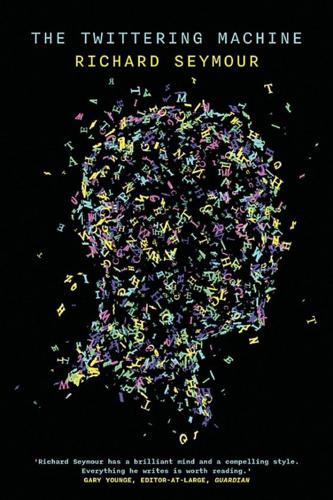
The Twittering Machine
by
Richard Seymour
Published 20 Aug 2019
Thuy Ong, ‘Sean Parker on Facebook: “God only knows what it’s doing to our children’s brains” ’, The Verge, 9 November 2017; Olivia Solon, ‘Ex-Facebook president Sean Parker: site made to exploit human “vulnerability” ’, Guardian, 9 November 2017. 17. It was another former Twitter adviser and Facebook executive . . . Antonio García-Martínez, ‘I’m an ex-Facebook exec: don’t believe what they tell you about ads’, Guardian, 2 May 2017. 18. As the Silicon Valley guru Jaron Lanier puts it . . . Jaron Lanier, You Are Not a Gadget: A Manifesto, Alfred A. Knopf: New York, 2010, p. 11. 19. We would enjoy ‘creative autonomy’ . . . Manuel Castells, Communication Power, Oxford University Press: Oxford, 2009. 20. Multitudes would suddenly swarm . . . Michael Hardt & Antonio Negri, Multitude: War and Democracy in the Age of Empire, Penguin Books: New York, 2004. 21.
…
This situation is completely without precedent, and it is now evolving so quickly that we can barely keep track of where we are. And the more technology evolves, the more that new layers of hardware and software are added, the harder it is to change. This is handing tech capitalists a unique source of power. As the Silicon Valley guru Jaron Lanier puts it, they don’t have to persuade us when they can directly manipulate our experience of the world.18 Technologists augment our senses with webcams, smartphones and constantly expanding quantities of digital memory. Because of this, a tiny group of engineers can ‘shape the entire future of human experience with incredible speed’.
…
We’re supposed to be able to decide what we prefer within the rules – rules which English philosopher Thomas Hobbes, in a pregnant metaphor, compared to the ‘laws of gaming’.39 We may not decide the rules, but we decide where to place our bets and when to ante up. And on the face of it, that surely is what we do on the social industry. No one forces us to be there, and no one tells us what to post, ‘like’ or click. And yet our interactions with the machine are conditioned. Critics of social media like Jaron Lanier argue that the user experience is designed much like the famous ‘Skinner Box’ or ‘operant conditioning chamber’ invented by the pioneering behaviourist B. F. Skinner. In this chamber, the behaviour of laboratory rats was conditioned by stimuli – lights, noises and food. Each of these stimuli constituted a ‘reinforcement’, either positive or negative, which would reward some forms of behaviour and discourage others.
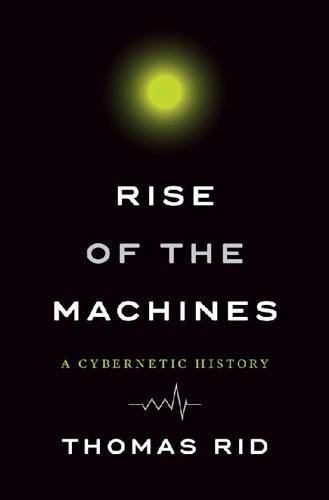
Rise of the Machines: A Cybernetic History
by
Thomas Rid
Published 27 Jun 2016
“William Gibson: Live from the NYPL,” New York Public Library, April 19, 2013, 19:00, YouTube video, posted on July 6, 2013, http://youtu.be/ae3z7Oe3XF4. 41.Ibid. 42.William Gibson, “Burning Chrome,” Omni 4, no. 10 (July 1982): 76. 43.William Gibson, Neuromancer (New York: Ace Books, 1984), 10–11. 44.Ibid., 69. 45.Larry McCaffery, “An Interview with William Gibson,” Mississippi Review 16, no. 2/3 (1988): 224. 46.Ibid. 47.William Gibson, Count Zero (New York: Arbor House, 1986), 33. 48.For a review of the Commodore 64 version of Moondust, see “LGR—Moondust—Commodore 64 Game Review,” YouTube video, posted June 30, 2009, http://youtu.be/DTk4SqKL-PA. 49.Lanier recounts the story in Jaron Lanier, “Virtually There,” Scientific American 284, no. 4 (2001): 68. 50.See Thomas G. Zimmerman, Optical flex sensor, US Patent 4542291 A, filed September 29, 1982, and issued September 17, 1985. 51.“Brain Scan: The Virtual Curmudgeon,” Economist, September 2, 2010. 52.Thomas Zimmerman, interview by the author, April 15, 2014. 53.See Adam Heilbrun’s description in Heilbrun, “An Interview with Jaron Lanier,” Whole Earth Review 64 (Fall 1989): 109. 54.Zimmerman, interview, April 15, 2014. 55.“An Interview with Mitch Altman (Inventor and Virtual Reality Pioneer from the 80’s),” YouTube video, posted January 28, 2015, https://youtu.be/5TrRO_j_efg. 56.For a list of companies, see Rudy Rucker, R.
…
“An Interview with Mitch Altman (Inventor and Virtual Reality Pioneer from the 80’s),” YouTube video, posted January 28, 2015, https://youtu.be/5TrRO_j_efg. 56.For a list of companies, see Rudy Rucker, R. U. Sirius, and Queen Mu, Mondo 2000: User’s Guide to the New Edge (New York: Harper, 1992), 315. 57.“Interview with Mitch Altman.” 58.“Virtual Reality from 1990, Jaron Lanier, Eye Phones,” YouTube video, posted December 3, 2014, https://youtu.be/ACeoMNux_AU?t=29s. 59.Heilbrun, “Interview with Jaron Lanier,” 109. 60.Ibid., 110. 61.Ibid., 114. 62.Ibid., 115. 63.Timothy Leary and Eric Gullichsen, “Artificial Reality Technology,” Reality Hackers 5 (1988): 23. Thanks to Daniel Bilar for pointing out the Buddha allusion. 64.Andrew Pollack, “For Artificial Reality, Wear a Computer,” New York Times, April 10, 1989, A1. 65.John Walker, Through the Looking Glass: Beyond “User Interfaces” (Sausalito, CA: Autodesk, Inc., 1988). 66.Walker referred to Stanley Kandebo’s press article about the Agile Eye in his Autodesk memo, ibid. 67.Walker, Through the Looking Glass. 68.Rudy Rucker, Seek!
…
Vinge’s True Names appealed to a narrower group that became influential only in the long term: those passionate about engineering, gaming, encryption, and privacy. But for now there was a problem. The air force had developed the hardware in secret. Vinge and Gibson had developed the vision in novels without even knowing of the air force’s first steps in virtual space. Vision and prototype needed to be connected. Jaron Lanier embodied what the Whole Earth Catalog stood for: offbeat, dreadlocked, bohemian, raised under a geodesic dome in Mesilla, New Mexico. Lanier went from performing on the streets of Santa Cruz to writing software for Atari, an arcade game company. At Atari, Lanier had created Moondust, a primitive art-music game.

Dreaming in Code: Two Dozen Programmers, Three Years, 4,732 Bugs, and One Quest for Transcendent Software
by
Scott Rosenberg
Published 2 Jan 2006
“very different and radical”: Jaron Lanier talk at Future Salon, April 20, 2004. Information at http://www.futuresalon.org/2004/04/full_salon_with. htm. Video at http://www.archive.org/movies/details-db.php?collection=open source_movies&collectionid=FutureSalon_04_2004. “The moment programs grow beyond”: Lanier, “Gordian Software.” “Little programs are so easy”: Jaron Lanier talk at OOPSLA Conference, October 2004. Daniel Dennett’s critique of “Gordian Software” is at http://www.edge.org/discourse/gordian.htm#dennett. “The fundamental challenge for humanity”: Jaron Lanier, interview with author, October 2005.
…
“Von Neumann languages constantly keep”: John Backus, “Can Programming Be Liberated from the von Neumann Style?” 1977 Turing Award Lecture, Communications of the ACM, August 1978, at http://portal.acm.org/affiliated/citation.cfm?id=359579&dl=ACM&coll=ACM. “When you learn about computer science”: Jaron Lanier, quoted in Janice J. Hess, “Coding from Scratch,” Sun Developer Network, January 23, 2003, at http://java.sun.com/features/2003/01/lanier_qa1.htm. “Gordian software”: Jaron Lanier, “Why Gordian Software Has Convinced Me to Believe in the Reality of Cats and Apples,” Edge.org, November 19, 2003, at http://www.edge.org/3rd_culture/lanier03/lanier_ index.htm. “If you make a small change”: Lanier in Hess, “Coding from Scratch.”
…
Most of us are likely to start with an understandable bias toward the principle of usability: Computers are supposed to make certain kinds of work easier for us; why shouldn’t they do the heavy lifting? But it would be unfair to dismiss Engelbart’s program as “user-hostile” when its whole purpose was to figure out how technology could help make exponential improvements in how people think. Computer scientist Jaron Lanier tells a story about an encounter between the young Engelbart and MIT’s Marvin Minsky, a founding father of the field of artificial intelligence. After Minsky waxed prophetic about the prodigious powers of reason that his research project would endow computers with, Engelbart responded, “You’re gonna do all that for the computers.
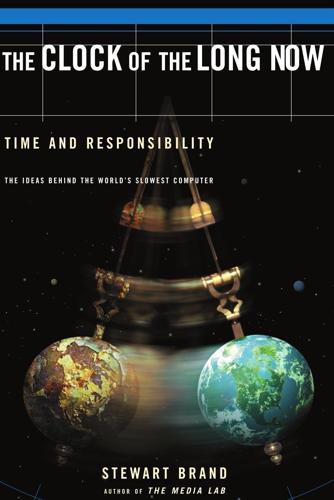
Clock of the Long Now
by
Stewart Brand
Published 1 Jan 1999
If you write something this week with Word in Windows 98 on a Dell computer, what are the chances of anybody being able to read it in 2008? The same doubt hangs over the big iron—the mainframes and minicomputers that process the digits that run and record our world. It doesn’t matter how widely used the machines are. Jaron Lanier, the inventor of immersion technologies called virtual reality , recently reported, I was asked last year by a museum to display an art video game (“Moondust”) that I had written in 1982. It ran on a Commodore 64, a computer that had already sold in the millions by the time of the game’s release.
…
The virtual reality experiment, however, is active; it was probably run on some experimental one-off piece of lab equipment cobbled together in a fragile array of then-current tools. Without that complex of hardware, you can’t replay the experiment. Preservation of such hardware-dependent digital experiences is nearly impossible, says Jaron Lanier. For instance, an elaborate virtual-reality model of Berlin has been used for planning the city for years, but this invaluable artifact will almost certainly be lost eventually. The U.S. Army’s famous computer model of the pivotal tank battle in the Gulf War, refought by countless soldiers in the years following the war, is likewise doomed in its original form.
…
One of Java’s creators, Bill Joy, asserts that the language “is so well specified that if you write a simple version of Java in Java, it becomes a Rosetta Stone. Aliens, or a sufficiently smart human, could eventually figure it out because it’s an implementation of itself.” In other words, “Write once, run anytime.” We’ll see. Exercise is the best preserver. Jaron Lanier notes that documents such as the Torah, the Koran, and the I Ching are impressively persistent because every age copies, analyzes, critiques, and uses them. The books live and are kept contemporary by use. Since digital artifacts are rapidly outnumbering all possible human users, Lanier recommends employing artificial intelligences to keep the artifacts exercised through decades and centuries of forced contemporaneity, kept ever up to date for a potential human user.

Experience on Demand: What Virtual Reality Is, How It Works, and What It Can Do
by
Jeremy Bailenson
Published 30 Jan 2018
There is a sense from many people that VR is sinister—that it represents the nail in the coffin of a natural, social-oriented mode of human life that has been gradually dying away. Why will anyone want to exist in the real world when they can live an immersive fantasy life in VR? I think this view seriously underestimates real life. I’m with Jaron Lanier, who likes to describe the most amazing moment in VR as the moment when you take the HMD off and are flooded with the full gamut of subtle sensory inputs that VR can’t capture—fine gradations of light, smells, the sensation of air moving on your skin, the weight and torque of the headset in your hand—these are all sensations that are incredibly difficult, if not impossible, to effectively simulate in a virtual world.
…
Skip watched for 10 minutes as the normally easily distractible frontal lobe patient sat glued to the game. “I thought, if only I could develop cognitive therapy that could engage folks like this.” Immediately, he began incorporating games like SimCity into his clinical practice. Not long after this experience Skip heard an interview on the radio with Jaron Lanier. Lanier was touting the work of his company, VPL Research, and the transformative possibilities of virtual reality. Immediately Skip saw the therapeutic potential of virtual environments for treating people with cognitive impairments and anxiety disorders: “I thought, what if we could immerse people in functionally relevant environments and do rehab in those contexts?
…
But imagine if the homunculus is suddenly presented with an entirely new body schema: How do we cope when we are suddenly operating a body that isn’t bipedal, say an avatar lobster or octopus? Can the brain adapt to figure out how to control six extra arms? The theory that examines this question is called Homuncular Flexiblity, and it is the brainchild of VR pioneer Jaron Lanier. In the 1980s, Ann Lasko, who worked with Jaron at VPL, had seen a postcard picture of people in lobster suits at a festival. This inspired her to create a lobster avatar in VR, and she set about programming a body map for it. Since the lobster body includes six more limbs than a typical person, there were not enough parameters measured by VPL’s body tracking suit to drive the lobster avatar in a one-to-one mapping.

Life After Google: The Fall of Big Data and the Rise of the Blockchain Economy
by
George Gilder
Published 16 Jul 2018
Peirce explained early in the last century, all symbols and their objects, whether in software, language, or art, require the mediation of an interpretive mind.1 From our minds open potential metaverses, infinite dimensions of imaginative reality—counter-factuals, analogies, interpretive emotions, flights of thought and creativity. The novelist Neal Stephenson, who coined the term metaverse,2 and Jaron Lanier, who pioneered “virtual reality,” were right to explore them and value them. Without dimensions beyond the flat universe, our lives and visions wane and wither. This analogy of the “flat universe” had come to me after reading C. S. Lewis’s essay “Transposition,”3 which posed the question: If you lived in a two-dimensional landscape painting, how would you respond to someone earnestly telling you that the 2D image was just the faintest reflection of a real 3D world?
…
(IPhone8 has sixteen different sensor systems, from an array of radio frequency devices to gyroscopes, accelerometers, barometers, and imagers galore.) A planetary sensorium will give Google a constant knowledge of the physical state of the world, from traffic conditions to the workings of your own biomachine. Jaron Lanier, the inventor of virtual reality, calls Google’s triumphant, capacious, efficient data centers “Siren Servers,” alluding to the bird-women of Greek mythology who with their irresistible song lured sailors to their deaths on the rocks. The sailors in Lanier’s metaphor are not kayakers on the Columbia but the masters of industry who own the servers.
…
For example, I could buy a car from someone for a thousand dollars and then sell it back to him for the same thousand dollars. To the econometrician, this would look as if two cars had been purchased when in fact nothing had changed at all. . . . ” And please, call me Bob. Focusing my mind on velocity’s contribution to the Midas enigma was the work of Jaron Lanier, the shaggy sage who both invented virtual reality and identified the Siren Server. Lanier writes, “Siren Servers are usually gigantic facilities, located in obscure places where they have their own power plants and some special hookup to nature, such as a remote river that allows them to cool a fantastic amount of waste heat.”8 It did not seem to apply to the Renaissance datacenter in Long Island, but I immediately thought of Urs Hölzle’s Google facility in The Dalles by the Columbia River.
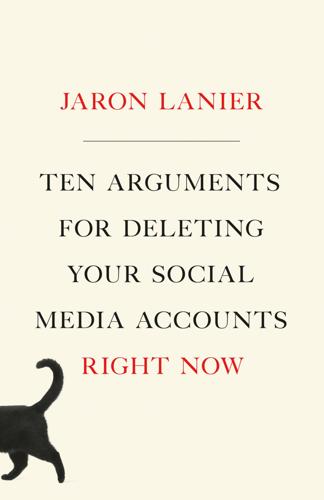
Ten Arguments for Deleting Your Social Media Accounts Right Now
by
Jaron Lanier
Published 28 May 2018
The wrong end of the BUMMER High castle ARGUMENT EIGHT SOCIAL MEDIA DOESN’T WANT YOU TO HAVE ECONOMIC DIGNITY Double BUMMER Baby BUMMER Conflicted BUMMER BUMMER blinders Better than BUMMER The corp perspective The user perspective ARGUMENT NINE SOCIAL MEDIA IS MAKING POLITICS IMPOSSIBLE Arc burn Arab Spring Gamergate LGBTQ Neither left nor right, but down Black Lives Matter If only this game were already over ARGUMENT TEN SOCIAL MEDIA HATES YOUR SOUL I met a metaphysical metaphor The first four principles of BUMMER spirituality BUMMER faith BUMMER heaven Existence without BUMMER BUMMER anti-magic CONCLUSION: CATS HAVE NINE LIVES Thank-yous Notes Also by Jaron Lanier About the Author Copyright TEN ARGUMENTS FOR DELETING YOUR SOCIAL MEDIA ACCOUNTS RIGHT NOW. Copyright © 2018 by Jaron Lanier. All rights reserved. For information, address Henry Holt and Co., 175 Fifth Avenue, New York, N.Y. 10010. www.henryholt.com Cover design by Nicolette Seeback The Library of Congress has cataloged the print edition as follows: Names: Lanier, Jaron, author. Title: Ten arguments for deleting your social media accounts right now / Jaron Lanier. Description: First edition. | New York: Henry Holt and Company, [2018] Identifiers: LCCN 2018007801 | ISBN 9781250196682 (hardcover) Subjects: LCSH: Internet—Social aspects. | Social media.
…
Here is an old piece that describes how I reconcile my views on the specialness of people with my support of abortion rights: https://www.huffingtonpost.com/entry/the-latest-innocent-embry_b_8547.html ALSO BY JARON LANIER Dawn of the New Everything Who Owns the Future? You Are Not a Gadget: A Manifesto Wenn Träume erwachsen werden (When Dreams Grow Up) About the Author JARON LANIER is a scientist, musician, and writer best known for his work in virtual reality and his advocacy of humanism and sustainable economics in a digital context. His 1980s startup VPL Research created the first commercial VR products and introduced avatars, multiperson virtual world experiences, and prototypes of major VR applications such as surgical simulation.
…
http://rsos.royalsocietypublishing.org/content/3/1/150292 6. http://www.ajpmonline.org/article/S0749-3797(17)30016-8/fulltext 7. https://www.theguardian.com/technology/2017/may/01/facebook-advertising-data-insecure-teens 8. http://www.sciencedirect.com/science/article/pii/S0747563214001241 9. https://www.nytimes.com/2014/07/01/opinion/jaron-lanier-on-lack-of-transparency-in-facebook-study.html 10. http://www.pnas.org/content/111/24/8788.full 11. https://newsroom.fb.com/news/2017/12/hard-questions-is-spending-time-on-social-media-bad-for-us/ 12. https://slate.com/human-interest/2018/01/the-facebook-moms-group-that-has-helped-me-raise-kids-without-going-crazy.html 13.
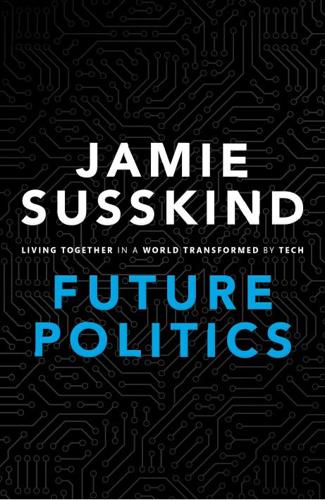
Future Politics: Living Together in a World Transformed by Tech
by
Jamie Susskind
Published 3 Sep 2018
These are not the words of a politician.They’re from the voiceover to ‘Think Different’, a 1997 Apple advertisement featuring iconic footage of rebels including Mahatma Ghandi and Martin Luther King. The ad embodies a worldview, widely held among tech entrepreneurs, that their work is of philosophical as well as commercial importance. ‘It is commonplace in Silicon Valley,’ explains Jaron Lanier, ‘for very young people with a startup in a garage to announce that their goal is to change human culture globally and profoundly, within a few years, and that they aren’t ready yet to worry about money, because acquiring a great fortune is a petty OUP CORRECTED PROOF – FINAL, 26/05/18, SPi РЕЛИЗ ПОДГОТОВИЛА ГРУППА "What's News" VK.COM/WSNWS Introduction 7 matter that will take care of itself.’5 There is something attractive about this way of thinking, partly because it suggests that tech companies might not be as rapacious as they are sometimes made out to be.
…
That a wiki can be refined and adapted over time, much like the common law, is desirable. But the common law moves at a stately OUP CORRECTED PROOF – FINAL, 26/05/18, SPi РЕЛИЗ ПОДГОТОВИЛА ГРУППА "What's News" VK.COM/WSNWS 246 FUTURE POLITICS pace while a wiki may change thousands of times each second. Jaron Lanier rightly invites us to imagine ‘the jittery shifts’ of wiki law: ‘It’s a terrifying thing to consider. Superenergized people would be struggling to shift the wording of the tax code on a frantic, never-ending basis.’56 The practical problems with Wiki Democracy seem overwhelming. But they are only fatal if we try to defend a model of pure Wiki Democracy without any checks or balances.
…
If people and technology are connected in a seamless web, then those with the best technology will always have an advantage. Take the example of financial trading, which now largely takes place online.The rise of automated and high-frequency trading has caused an explosion in financial activity—mostly to the disadvantage of human traders.29 As Jaron Lanier explains:30 ‘if you have a more effective computer than anyone else in an open network [then] Your superior calculation ability allows you to choose the least risky option for yourself, leaving riskier options for everyone else.’ Lanier’s point may remind you of the discussion of bots and democracy in chapter thirteen.
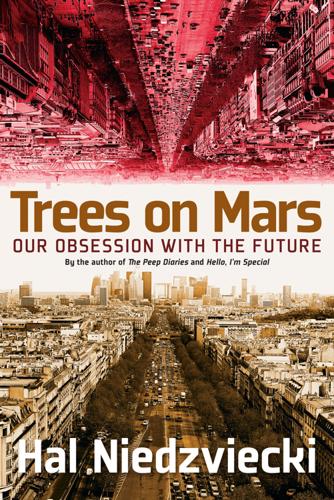
Trees on Mars: Our Obsession With the Future
by
Hal Niedzviecki
Published 15 Mar 2015
But because big data is categorized as a benevolent offshoot of our will to arrive at the future, we are not just accepting of it, we are lining up to contribute to the project. With only the weakest infrastructure as protection for the consumer, big data is expanding in all directions much faster than any person could ever keep up with. Even if you wanted to opt out of big data, it would be impossible. Jaron Lanier makes this point at length in his book Who Owns the Future, arguing that what is stifling opportunity in the twenty-first century is the steadily rising disparity between those with access to—and the ability to profit from—the future in its data form, and the rest of us, who are increasingly being treated primarily as inexhaustible mines, giant open pits feeding the tomorrow machine.42 A seismic and potentially dangerous shift in a short time, and all without any real opposition or even debate.
…
We’ve exponentially increased our consumptive patterns, changing almost nothing as we tore through vast swathes of the world plundering everything in our paths. You can call this innovation, or you can call this the trap of progress—the ratcheting up of the process of doing what we’ve always done, killing and moving on. Writes virtual reality inventor turned technology pundit Jaron Lanier: “We have been obliged to invent our way out of the mess caused by our last inventions since we became human. It is our identity. . . . It is hard to be comfortable accepting the degree of responsibility our species will have to assume in order to survive into the future. The game was entered into long ago and we have no choice but to play.”19 It would seem that the Chumash, by staying relatively stable, by not evolving or adapting or innovating too much, were able to weather the storms and even the environmental depletions they brought on themselves.
…
It’s upgrades in the efficiency and capacity of IT over the last decade that have enabled companies to create hyper-efficient systems in which productivity can be massively increased without the need for more hiring or increases in wages. “The historically strong relationship between changes in GDP and changes in employment appears to have weakened,” note the Race Against the Machine authors, “as digital technology has become more pervasive and powerful.”41 “If,” asks influential inventor Jaron Lanier, “network technology is supposed to be so good for everyone, why has the developed world suffered so much just as the technology has become widespread? Why was there so much economic pain at once all over the developed world just as computer networking dug in to every aspect of human activity, in the early twenty-first century?”
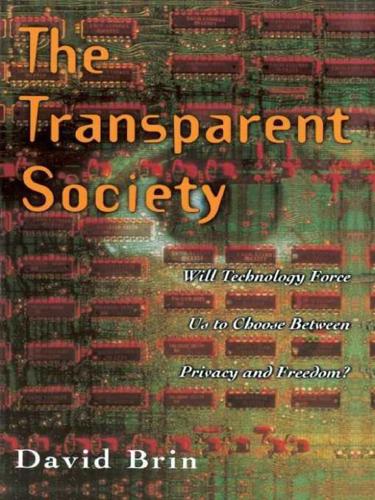
The Transparent Society: Will Technology Force Us to Choose Between Privacy and Freedom?
by
David Brin
Published 1 Jan 1998
What is impossible to be sure of, though, is how much the theory might have limited what people could have become.... The selfcongratulatory fallacies of artificial intelligence are similiar to the ways in which communists fooled themselves into believing they had found the key to paradise, while actually they had only blinded themselves to their own humanity for a time. JARON LANIER Imagine an encounter between two of historyʼs greatest minds, each defending his own view of reality. PLATO: Our senses are defective; therefore, we cannot discover truth through experience. That chair, for instance. Despite all your gritty “experiments,” you will never determine what it is. Not perfectly.
…
Indeed, most are devoted, in their own ways, to fighting vile accumulations of power, and to offering prescriptions for safeguarding liberty. There is nothing wrong with this. But when people start believing in the perfect reality of their metaphors, they take footsteps down the path of Plato and so many others. A path that has, in the long run, led to more harm than good. Recall the quotation from Jaron Lanier that began this section. Go back and replace “artificial intelligence” with “crypto-anarchy,” and Lanier might be describing the latest techno-transcendentalist fetish—a passionate belief that all will be well if only we pledge our faith and trust to encrypted chains of bits and bytes, managed by algorithms of chaste mathematical purity.
…
We have done this by assertively retaining the sovereign powers of sight and control. Such a society is a long way from deserving anyoneʼs contempt. We need to calibrate our idealism for what is possible. So I do not propose that corruption, confusion, or deception can be eliminated, but merely that they can be controlled so that they arenʼt catastrophic. JARON LANIER GUARDING THE GUARDIANS We can illustrate how tools of accountability may offer most citizens increased confidence and control by applying those tools to the gritty world of crime and law enforcement. In July 1997, as a portent of bigger steps to come, the San Diego County Sheriffʼs Department began equipping all deputies with pocket tape recorders, requiring them to turn on the devices during encounters with the public.

The Filter Bubble: What the Internet Is Hiding From You
by
Eli Pariser
Published 11 May 2011
—Bill McKibben, author of The End of Nature and Eaarth and founder of 350.org “The Filter Bubble shows how unintended consequences of well-meaning online designs can impose profound and sudden changes on politics. All agree that the Internet is a potent tool for change, but whether changes are for the better or worse is up to the people who create and use it. If you feel that the Web is your wide open window on the world, you need to read this book to understand what you aren’t seeing.” —Jaron Lanier, author of You Are Not a Gadget “For more than a decade, reflective souls have worried about the consequences of perfect personalization. Eli Pariser’s is the most powerful and troubling critique yet.” —Lawrence Lessig, author of Code, Free Culture, and Remix “Eli Pariser isn’t just the smartest person I know thinking about the relationship of digital technology to participation in the democratic process—he is also the most experienced.
…
The solution to the information overflow of the digital age was smart, personalized, embedded editors. In fact, these agents didn’t have to be limited to television; as he suggested to the editor of the new tech magazine Wired, “Intelligent agents are the unequivocal future of computing.” In San Francisco, Jaron Lanier responded to this argument with dismay. Lanier was one of the creators of virtual reality; since the eighties, he’d been tinkering with how to bring computers and people together. But the talk of agents struck him as crazy. “What’s got into all of you?” he wrote in a missive to the “Wired-style community” on his Web site.
…
And while in many cases this provides for healthier, happier lives, it also provides for the commercialization of everything—even of our sensory apparatus itself. There are few things uglier to contemplate than AugCog-enabled ads that escalate until they seize control of your attention. We’re compelled to return to Jaron Lanier’s question: For whom do these technologies work? If history is any guide, we may not be the primary customer. And as technology gets better and better at directing our attention, we need to watch closely what it is directing our attention toward. 8 Escape from the City of Ghettos In order to find his own self, [a person] also needs to live in a milieu where the possibility of many different value systems is explicitly recognized and honored.
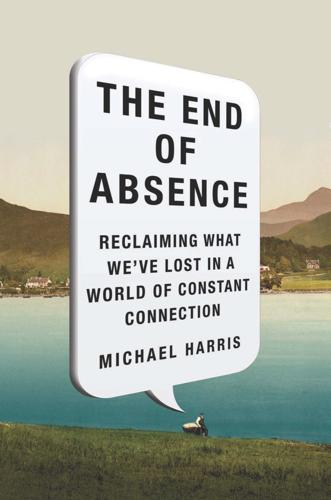
The End of Absence: Reclaiming What We've Lost in a World of Constant Connection
by
Michael Harris
Published 6 Aug 2014
(One friend of mine, David, complains that Google AdSense “treats me like a forty-three-year-old woman because of my personal choices.”) We can presume that in the future much more will be selected by public consensus—and that we’ll be vaguely unaware of those selections, too. The computer scientist (and virtual reality pioneer) Jaron Lanier writes angrily against this “invisible hand” in Who Owns the Future?: If market pricing is the only legitimate test of quality, why are we still bothering with proving theorems? Why don’t we just have a vote on whether a theorem is true? To make it better we’ll have everyone vote on it, especially the hundreds of millions of people who don’t understand the math.
…
“They are but the physical impressions produced by love and fear, and on this gross foundation who could erect a philosophy? Let your ideas be second-hand, and if possible tenth-hand, for then they will be far removed from that disturbing element—direct observation.” Inevitably, the virtuosic Machine begins to fall apart, though, and with it the very walls of their micromanaged underground society. Author Jaron Lanier recalls Forster’s story as a message of hope, a fantasy where mankind casts off its shackles (or has those shackles forced off, anyway). “At the end of the story . . . ,” Lanier recounts, “survivors straggle outside to revel in the authenticity of reality. ‘The Sun!’ they cry, amazed at luminous depths of beauty that could not have been imagined.”
…
And all around me, the young and not so young are banishing their boredom by pouring their attention into games like Angry Birds and Jewel Quest on their phones. The bus rattles around a corner and we all sway in unison, we bump into one another, but nobody looks up. An elderly woman, with perfect white hair, turns to look out the window and appears to disappear. • • • • • Jaron Lanier wrote that “one good test of whether an economy is humanistic or not is the plausibility of earning the ability to drop out of it for a while without incident or insult.” This seems a good gauge to me. And I know that dropping out of our current information economy would indeed damage my livelihood, put me at odds with the “ordinary” lives of my peers.

Dawn of the New Everything: Encounters With Reality and Virtual Reality
by
Jaron Lanier
Published 21 Nov 2017
“reality” world games world music World War II World Wide Web (WWW) Xanadu digital network Xbox Xerox PARC Xiao, Jianxiong You Are Not a Gadget (Lanier) YouTube Zachary, George Zhang, Zhengyou Zimmerman, Tom zither Zombie Apocalypse Zuckerberg, Mark Also by Jaron Lanier Who Owns the Future? You Are Not a Gadget: A Manifesto About the Author JARON LANIER, an interdisciplinary scientist at Microsoft, either coined or popularized the term “virtual reality,” depending on whom you ask. His startup, VPL, created the first commercial VR products, avatars, multiperson virtual world experiences, and prototypes of surgical simulation.
…
They were researchers who would eventually become part of the HIT Lab of University of Washington, an early VR research department started by Tom Furness, a VR pioneer who had previously worked on military simulators. Introduction 1. This is the first of dozens of numbered definitions of VR dispersed in this book. 2. An example of my 1980s usage of the term “mixed reality” is found in “Virtual Reality: An Interview with Jaron Lanier” (Kevin Kelly, Adam Heilbrun, and Barbara Stacks, Whole Earth Review. Fall 1989, no. 64, p. 108[12]). Chapter 2 1. I have no sympathy for the recent campaign to demote Pluto to prominent Kuiper Belt object instead of planet. Its weird orbit out there is an inspiration to every kid who doesn’t fit in.
…
For years everyone in computer graphics used the same teapot model to demonstrate rendering techniques. You can even see one in Pixar’s original Toy Story. 2. A Klein Bottle is a beloved and weird geometric shape; a bottle that is inside itself. 3. An example of my 1980s usage of the term is found in Virtual Reality: An Interview with Jaron Lanier. Kevin Kelly, Adam Heilbrun, and Barbara Stacks. Whole Earth Review, Fall 1999 n64 p108(12). 4. The four candidates were Bill Clinton, Al Gore, Bob Dole, and Jack Kemp, and nothing any of them said would be considered aggressive by today’s standards. 5. Wired renewed the morphology of the early literature of computation: One half was nerdy systems thinking, with a utopian sensibility and a realization that nerds are running the world now, while the other half, which I liked better, was psychedelic revelry from a personal perspective.

Digital Disconnect: How Capitalism Is Turning the Internet Against Democracy
by
Robert W. McChesney
Published 5 Mar 2013
He notes that the Internet works as much or more to promote ignorance as knowledge; hence survey research demonstrates little if any improvement in the knowledge levels of Americans between 1989 and 2007.30 Mark Bauerlein develops this point, noting that study after study confirms that young people today constitute “the dumbest generation,” shockingly ignorant of civics, history, geography, science, literature, the works. To Bauerlein, the emergence of digital media is the main culprit in this sudden transformation. “Dwelling in a world of puerile banter and coarse images,” they “are actively cut off” from world realities like no other generation.31 Jaron Lanier, considered the father of virtual reality technology, also questioned the idea that the Internet is a knowledge factory in 2010’s You Are Not a Gadget. In summarily dismissing Shirky, he notes: Some of my colleagues think a million, or perhaps a billion, fragmentary insults will eventually yield wisdom that surpasses that of any well-thought-out essay, so long as sophisticated secret algorithms recombine the fragments.
…
By the mid-1990s, for media moguls like Rupert Murdoch and Disney’s Michael Eisner, it seemed the world was their oyster. But for all the depth and breadth of the empires they had constructed and despite all their political influence, the Internet seemingly posed a threat to their very existence. As Jaron Lanier put it, “the old-media empires were put on a path of predictable obsolescence.”137 The Internet appeared to pose this threat for three reasons. First, it opened the possibility of making it much easier for new players to enter media markets. As the Internet became the dominant platform, prospective entrants would no longer need major capital to get a broadcasting license or buy an existing film studio.
…
This notion of new digital competition for the media giants was embraced by many digital activists in the 1990s, who thought the big media corporations were getting their just deserts. They would all soon be submerged by the Internet, with its unlimited number of websites.138 All sorts of newcomers could enter what had been a restricted field, and if they could locate a following, they would be able to generate sufficient revenues to make a go of it. Jaron Lanier remembers the idealistic conviction that a digital utopia was around the corner in a cultural system soon to be liberated from the commercial monopolists.139 The second threat to the media conglomerates was the difficulty of getting customers to pay for media content online, because it was so ridiculously easy to copy and distribute perfect digital copies of music, films, TV shows, and the like at no charge.

The People's Platform: Taking Back Power and Culture in the Digital Age
by
Astra Taylor
Published 4 Mar 2014
“We, the armies of digital peasants, scramble for subsistence in digital manor economies, lucky to receive scraps of ad dollars here and there, but mostly getting by, sometimes happily, on social rewards—fun, social connections, online reputations. But when the commons are sold or traded on Wall Street, the vast disparities between us, the peasants, and them, the lords, become more obvious and more objectionable.”13 Computer scientist turned techno-skeptic Jaron Lanier has staked out the most extreme position in relation to those he calls the “lords of the computing clouds,” arguing that the only way to counteract this feudal structure is to institute a system of nanopayments, a market mechanism by which individuals are rewarded for every bit of private information gleaned by the network (an interesting thought experiment, Lanier’s proposed solution may well lead to worse outcomes than the situation we have now, due to the twisted incentives it entails).
…
“The professional is being replaced by the amateur, the lexicographer by the layperson, the Harvard professor by the unschooled populace,” according to Andrew Keen, obstinately oblivious to the failings of professionally produced mass culture he defends. The Internet is decried as a province of know-nothing narcissists motivated by a juvenile desire for fame and fortune, a virtual backwater of vulgarity and phoniness. Jaron Lanier, the technologist turned skeptic, has taken aim at what he calls “digital Maoism” and the ascendance of the “hive mind.” Social media, as Lanier sees it, demean rather than elevate us, emphasizing the machine over the human, the crowd over the individual, the partial over the integral. The problem is not just that Web 2.0 erodes professionalism but, more fundamentally, that it threatens originality and autonomy.
…
Ours is a world that is both everywhere and nowhere, but it is not where bodies live,” John Perry Barlow wrote in his influential Declaration of the Independence of Cyberspace. “The caste system is an artifact of the world of atom,” Nicholas Negroponte declared. Before he reinvented himself as a techno-skeptic, the virtual reality pioneer Jaron Lanier concurred. “The Web was built by millions of people simply because they wanted it, without need, greed, fear, hierarchy, authority figures, ethnic identification, advertising, or any other form of manipulation,” he enthused. New-media enthusiasts have stuck with this attitude. In The Wealth of Networks Yochai Benkler proclaims, “We can live a life more authored by our own will and imagination than by the material and social conditions in which we find ourselves.”

The Internet Is Not the Answer
by
Andrew Keen
Published 5 Jan 2015
“We can more or less know what you’re thinking about.”59 This is the real reason why Google spent $500 million in 2014 on the artificial intelligence startup DeepMind—a technology that, according to The Information’s Amir Efrati, wants to “make computers think like humans.”60 By thinking like us, by being able to join the dots in our mind, Google will own us. And by owning us—our desires, our intentions, our career goals, above all our buying habits—Google will own the networked future. The Silicon Valley insider and technology critic Jaron Lanier argues “the future should be our theater.”61 But the problem with the data factory economy is that we have become the show that is being played in somebody else’s theater. And unlike professional actors, we aren’t even being paid for our labor. No wonder Lanier is nostalgic for a time when we were optimistic about the future.
…
These human beings weren’t infallible, but they were much more likely to come up with serendipitous recommendations than algorithms that know our entire purchasing history and thus just tell us what we already know. Back in 1989, I would often come to Soho, not only to buy and sell music but also to meet with friends who were founding record labels, running clubs, spotting talent, or managing young artists. Like so many other people in my generation, my ambition was to get into the music business. Jaron Lanier describes the future as a theater. But twenty-five years ago, the future looked to me like a concert hall. And I wanted a seat in its front row. Twenty-five years ago, the future of the recorded music industry appeared as richly abundant as Soho’s cultural economy. “Perfect Sound Forever,” Philips and Sony boasted about their new CD format.
…
For the outraged, the knee-jerk answer is smashing the windows of Google buses and calling for the “dismantling of techno-industrial society.”7 For the more contemplative, the answer is switching off the network through “digital detoxes,”8 technology Sabbaths, or joining the “slow Web” movement.9 For idealistic Web pioneers like Tim Berners-Lee, the answer is an online “Magna Carta,” a digital Bill of Rights that protects the Web’s neutrality and openness against both governments and Internet corporations.10 For other publicly spirited technologists, the answer is developing anti-Google or anti-Facebook products like the “no tracking” search engine DuckDuckGo, the open-source and nonprofit social network Diaspora, and even an ambitiously decentralized project called Bitcloud that aims to create a new Internet.11 For curated websites like Popular Science, which have tired of the inanity of most user-generated content, the answer is banning anonymous comments.12 For Germany, the answer is in Chancellor Angela Merkel’s 2014 proposal to build a European network where data wouldn’t pass through the United States.13 The answer for the German government may even lie—irony of ironies—in reverting to the technology of the Stasi and using analog typewriters for secret communications, in an effort to protect itself from foreign snoops.14 For cultural theorists like Jaron Lanier, the answer is in reinventing the business model of online content to “multitudinous, diverse, tiny flows of royalties.”15 For political critics like the technology scholar Tim Wu and the Financial Times columnist John Gapper, the answer lies in Internet entrepreneurs growing out of their “obsessive adolescence” and taking adult responsibility for disruptions like Bitcoin.16 For humanists like Nicholas Carr, the answer lies in us shaping our networked tools before they shape us.
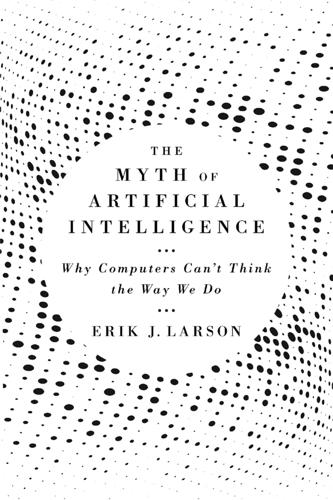
The Myth of Artificial Intelligence: Why Computers Can't Think the Way We Do
by
Erik J. Larson
Published 5 Apr 2021
Unfortunately, Russellians tend to lump human beings into restricted definitions of intelligence, too. This reduces the perceived gap between human and machine, but only by reducing human possibility along with it. Russellians are thought leaders in a cultural trend, which I have called “the simplified world.” As Jaron Lanier puts it, “A new generation has come of age with a reduced expectation of what a person can be, and of who each person might become.”18 Kurzweilians and Russellians alike promulgate a technocentric view of the world that both simplifies views of people—in particular, with deflationary views of intelligence as computation—and expands views of technology, by promoting futurism about AI as science and not myth.
…
As work on AI keeps hitting hurdle after hurdle, however, the Promethean myth of astonishing innovation by individuals is disappearing from cultural archetypes in research and the broader culture. In its place, we have a passive-evolution mythology about AI that grows as belief in human potential shrinks. Thoughtful critics like Jaron Lanier give voice to the central problem, “We should seek instead to inspire the phenomenon of human intelligence.”1 But, already, there are no more heroes. Instead, we have “hives.” OF HIVES AND MACHINES Shifting the locus of intelligence from humans to machines is a gambit—a chess term, meaning the sacrifice of material for better position—which unavoidably has consequences for human culture.
…
“I consider that the leaders of the present trend from individualistic research to controlled industrial research are dominated, or at least seriously touched, by a distrust of the individual which often amounts to a distrust in the human.”4 Wiener diagnosed megabuck science not only as suboptimal for a culture of invention, but as moving directly, and indeed happily, toward what he called an “antihuman” trend. This sentiment is echoed in our time by AI critics like Jaron Lanier, who worry about the tech-inspired erosion of personhood. Hive minds and swarm science would do little to quell Wiener’s worries about the direction of science. As Wiener put it, “The general statistical effect of an anti-intellectual policy would be to encourage the existence of fewer intellectuals and fewer ideas.”5 Such anti-intellectual policies are so clearly evident in modern data-centric treatments of science that the threat is now impossible to ignore.
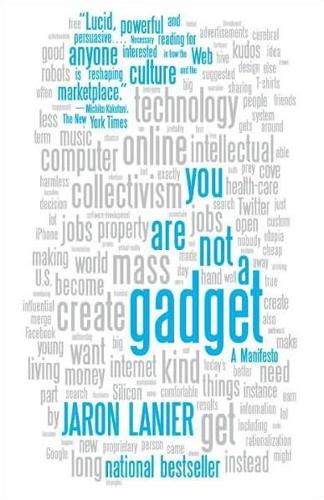
You Are Not a Gadget
by
Jaron Lanier
Published 12 Jan 2010
Lanier received an honorary doctorate from the New Jersey Institute of Technology in 2006, was the recipient of Carnegie Mellon University’s Watson Award in 2001, and was a finalist for the first Edge of Computation Award in 2005. THIS IS A BORZOI BOOK PUBLISHED BY ALFRED A. KNOPF Copyright © 2010 by Jaron Lanier All rights reserved. Published in the United States by Alfred A. Knopf, a division of Random House, Inc., New York, and in Canada by Random House of Canada Limited, Toronto. www.aaknopf.com Knopf, Borzoi Books, and the colophon are registered trademarks of Random House, Inc. Grateful acknowledgment is made to Imprint Academic for permission to reprint material by Jaron Lanier that was originally published in the Journal of Consciousness Studies. Portions of this work also originally appeared in Discover, Think Magazine, and on www.edge.org.
…
Superspecial thanks to early readers of the manuscript: Lee Smolin, Dina Graser, Neal Stephenson, George Dyson, Roger Brent, and Yelena the Porcupine; editors: Jeff Alexander, Marty Asher, and Dan Frank; agents: John Brockman, Katinka Matson, and Max Brockman; at Discover: Corey Powell and Bob Guccione Jr.; and various people who tried to help me finish a book over the last few decades: Scott Kim, Kevin Kelly, Bob Prior, Jamie James, my students at UCSF, and untold others. A note About the Author Jaron Lanier is a computer scientist, composer, visual artist, and author. His current appointments include Scholar at Large for Microsoft Corporation and Interdisciplinary Scholar-in-Residence, Center for Entrepreneurship and Technology, University of California at Berkeley. Lanier’s name is also often associated with research into “virtual reality,” a term he coined.
…
Portions of this work also originally appeared in Discover, Think Magazine, and on www.edge.org. Library of Congress Cataloging-in-Publication Data Lanier, Jaron. You are not a gadget / by Jaron Lanier.—1st ed. p. cm. eISBN: 978-0-307-59314-6 1. Information technology—Social aspects. 2. Technological innovations—Social aspects. 3. Technology—Social aspects. I. Title. HM851.L358 2010 303.48′33—dc22 2009020298 v3.0

Digital Minimalism: Choosing a Focused Life in a Noisy World
by
Cal Newport
Published 5 Feb 2019
Notes INTRODUCTION “An endless bombardment of news”: Andrew Sullivan, “I Used to Be a Human Being,” New York, September 18, 2016, http://nymag.com/selectall/2016/09/andrew-sullivan-my-distraction-sickness-and-yours.html. The techno-philosopher Jaron Lanier convincingly argues: For more on Jaron Lanier’s thoughts about the primacy of negativity in the attention marketplace, see his Vox podcast interview with Ezra Klein from January 16, 2018, https://www.vox.com/2018/1/16/16897738/jaron-lanier-interview. “simplicity, simplicity, simplicity”: Henry David Thoreau, Walden; or, Life in the Woods (New York: Dover Publications, 2012), 59. Because the text of Walden is in the public domain, many different online, ebook, audio, and print editions of the book exist.
…
The constant exposure to their friends’ carefully curated portrayals of their lives generates feelings of inadequacy—especially during periods when they’re already feeling low—and for teenagers, it provides a cruelly effective way to be publicly excluded. In addition, as demonstrated during the 2016 presidential election and its aftermath, online discussion seems to accelerate people’s shift toward emotionally charged and draining extremes. The techno-philosopher Jaron Lanier convincingly argues that the primacy of anger and outrage online is, in some sense, an unavoidable feature of the medium: In an open marketplace for attention, darker emotions attract more eyeballs than positive and constructive thoughts. For heavy internet users, repeated interaction with this darkness can become a source of draining negativity—a steep price that many don’t even realize they’re paying to support their compulsive connectivity.
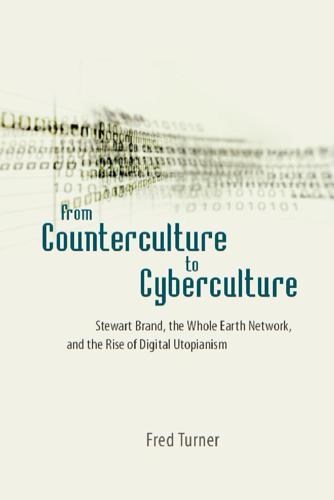
From Counterculture to Cyberculture: Stewart Brand, the Whole Earth Network, and the Rise of Digital Utopianism
by
Fred Turner
Published 31 Aug 2006
Case and his fellow inhabitants of “the Sprawl” struggled to survive in the shadows of a world where large corporations had ruined the natural environment, where government seemed to be breaking down and local Mafias taking over, and where physical suffering was routine.58 For people working in high technology, however, Gibson’s vision of cyberspace held enormous appeal. As Allucquère Rosanne Stone has argued, for example, the idea of cyberspace allowed a geographically dispersed group of individuals working on three-dimensional imaging systems— systems that Jaron Lanier named “virtual reality”—to reimagine themselves as members of a coherent community collaborating on the construction of the future. This community had begun its work in the 1960s, developing flight-simulation gear for the air force. Its members had also developed computer-assisted design (CAD) technology, particularly at Nicholas Negroponte’s Architecture Machine Group—forerunner of the Media Lab— at MIT.
…
In 1982, for instance, Scott Fisher, of the Architecture Machine Group, joined Atari. When the Atari lab closed, he moved to the NASA-Ames View Lab. There engineers had developed a virtual reality helmet and a sensor incorporated into a glove that could give the computer information about a subject’s hand movements. In 1985 NASA contracted to have this glove developed by Jaron Lanier’s Sausalito-based firm VPL Research; they manufactured the first glove in March 1986.59 Another East Coast engineer, Eric Gullichsen, arrived at about the same time. He ultimately joined Autodesk, a San Francisco Bay area maker of CAD systems. In 1988 Autodesk developed a “cyberspace” initiative (quickly dubbed “Cyberia”) in which they tried to build “‘a doorway into cyberspace’ for anyone with $15,000 and a 386 computer.”60 In 1989 Gullichsen went so far as to register the word cyberspace as a trademark.
…
Even if that cyberspace was a dangerous, threatening zone—as it was V i r t u a l i t y an d C o m m u n i t y o n t h e W E L L [ 165 ] in Neuromancer—it could be beautiful, strange, and enticing. In the pages of Mondo 2000, readers learned that this new space was being built right here, right now, and they learned it from at least one writer with solid counterculture credentials: John Perry Barlow. In the summer of 1990 he visited the offices of Jaron Lanier’s VPL Research and donned a pair of VPL Eyephones and a VPL Dataglove. He published the following description of his experience in Mondo: “Suddenly I don’t have a body anymore. All that remains of the aging shambles which usually constitutes my corporeal self is a glowing, golden hand floating before me like Macbeth’s dagger.
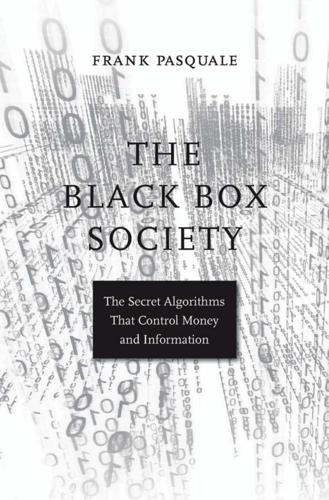
The Black Box Society: The Secret Algorithms That Control Money and Information
by
Frank Pasquale
Published 17 Nov 2014
Fannie and Freddie’s implicit guarantees encouraged similarly “double realities”—government never needed to budget for a bailout, while holders of bonds backed by these government-sponsored entities (GSEs) assumed they’d always get paid.103 Opportunistic modeling and accounting also explains why deal complexity is often pursued for its own sake, and not for a genuine economic or investment purpose. Technologist Jaron Lanier puts the matter starkly: “The wave of fi nancial calamities that took place in 2008 was cloud-based. No one in the pre-digital-cloud era had the mental capacity to lie to himself in the way we are routinely able to now. The limitations of organic human memory and calculation put a cap on the intricacies of self-delusion.”104 Webs of credit and debt become a smoke screen for institutions rendered vulnerable FINANCE’S ALGORITHMS 125 (both individually and collectively) so that privileged parties within them can use leverage to multiply potential upside gains.
…
Maxwell Strachan, “Financial Sector Back to Accounting for Nearly One-Third of U.S. Profits,” Huffington Post (blog), March 30, 2011, http:// www.huffi ngtonpost.com /2011/03/30/fi nancial-profits-percentage _n _841716 .html. Things were even better for the fi nance fi rms in the boom years. 15. Jaron Lanier, Who Owns the Future? (New York: Simon & Schuster, 2013). “At the height of its power, the photography company Kodak employed NOTES TO PAGES 6–10 223 more than 140,000 people and was worth $28 billion. They even invented the first digital camera. But today Kodak is bankrupt, and the new face of digital photography has become Instagram.
…
We should also entertain reconceptualizing our participation in digital platforms as work, since it is often unavoidable, laborious, and value generating. Kevin Kelly, What Technology Wants (New York: Viking, 2010), 331 (“each time we click a link we strengthen a node somewhere in the supercomputer’s mind, thereby programming . . . it”); Trebor Scholz, ed., Digital Labor: The Internet as Playground and Factory (New York: Routledge, 2013); Jaron Lanier, Who Owns the Future? (New York: Simon & Schuster, 2013); Jessica Weisberg, “Should Facebook Pay Its Users?,” The Nation, January 14, 2014 NOTES TO PAGES 79–81 257 (quoting manifesto “WE WANT TO CALL WORK WHAT IS WORK SO THAT EVENTUALLY WE MIGHT REDISCOVER WHAT FRIENDSHIP IS”). 121. Eli Pariser, The Filter Bubble (New York: Penguin, 2011). 122.

Forward: Notes on the Future of Our Democracy
by
Andrew Yang
Published 15 Nov 2021
Social media snippets could be compared to snacking on junk food. Imagine if we surrounded children with an unlimited buffet of Cheetos and Twinkies. What would happen to their health over time? Social media is affecting our mental health. In an interview about his book Ten Arguments for Deleting Your Social Media Accounts Right Now, Jaron Lanier, the technology futurist, said that “the behavior manipulation machine makes you cranky, makes you irritable, makes you paranoid, makes you sad.” The numbers bear this out. As you can see in the graph on page 132, teenage girls have seen an unprecedented surge in anxiety and depression coincident with their internet and social media use.
…
That kid goes back home, shuts the door, and pulls out her smartphone, and her classmates are all in the room with her, talking about things and looking happy. It’s no wonder that anxiety and depression have skyrocketed. Screen time is what’s known in economic terms as an inferior good: the poorer you are, the more of it you consume. As Jaron Lanier, the internet pioneer and futurist, put it in an interview, “A lot of the stuff that people experience when they’re using social media is genuine and positive…[But] there’s this other thing going on, this behind-the-scenes engine that’s getting all your data, constantly surveilling you, and then tweaking what you experience.”
…
This is an area that requires genuine leadership and vision from the public sector, not a sensationalized hearing and browbeating. Another path to reform involves changing the business models of these companies. Social media companies are wired to maximize user engagement. The way to change this is to change their incentives, which right now are based on maximizing advertising revenue. Jaron Lanier, the futurist and internet pioneer, said in an interview, “We were all hippies, and we were trying to figure out a way to make this all free. And the best thing we could think of was to use advertising to pay for everything. And it turns out that was a massive mistake that had enormous implications.”
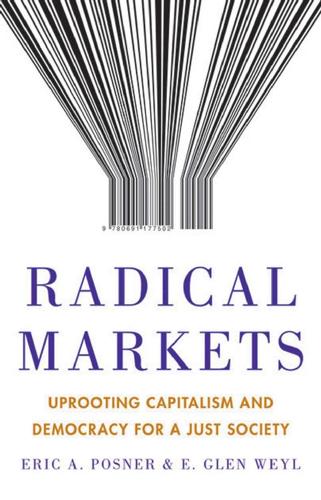
Radical Markets: Uprooting Capitalism and Democracy for a Just Society
by
Eric Posner
and
E. Weyl
Published 14 May 2018
The many co-authors and collaborators on projects that contributed to our vision here are cited throughout, but a few deserve explicit mention here: Anthony Lee Zhang pioneered the idea of the common ownership self-assessed tax with Glen; Steve Lalley proved the fundamental theorems about Quadratic Voting with Glen, and Nick Stephanopoulos together with Eric devised the practical vision of egalitarian election law based on it; Fiona Scott Morton devised the 1% rule for institutional investors with us; and Jaron Lanier has been Glen’s partner every step of the way in Data as Labor. Our editor Joe Jackson and his colleagues at Princeton University Press made this book a reality. Susan Jean Miller did a superb job helping us hone our prose. We are also grateful to a talented team of research assistants. Graham Haviland, Eliot Levmore, Stella Shannon, Han-ah Sumner, and Jill Rogowski provided invaluable assistance.
…
Consider how people think of AI. In some portraits, AIs are autonomous agents built by brilliant and possibly mad programmers like the reclusive genius in the 2014 film Ex Machina, who set into motion a system that runs itself. Reality is different, however, as “the inventor of virtual reality” Jaron Lanier highlights in his brilliant 2013 book Who Owns the Future?,1 which inspired many of our ideas in this chapter.2 AIs run on ML systems that analyze piles of human-produced data. “Programmers” do not write ingeniously self-determining algorithms. Instead, they design the interaction between workers (meaning us, the users who produce data) and machines (computational power) to produce specific information or production services.
…
Companies that started as reluctantly free service providers in search of a revenue model and morphed into advertising platforms are now in the process of becoming data collectors, delivering services that lure users into providing information on which they train AIs using ML. Sirens and Titans Jaron Lanier describes such platforms as “siren servers.” Their allure, he explains, derives from the combination of the free services they offer because of their scale and exceptional data access. Yet Lanier worries about the social and economic consequences of their business model. Because they do not pay their users for data, they do not give their users proper incentives to supply data that are most needed.
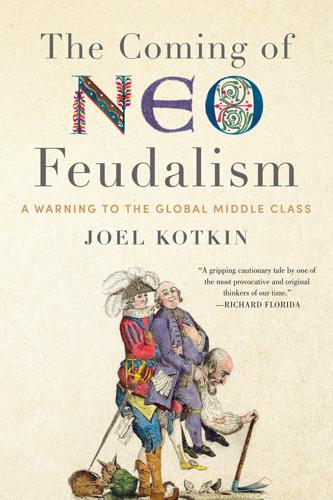
The Coming of Neo-Feudalism: A Warning to the Global Middle Class
by
Joel Kotkin
Published 11 May 2020
When Google and Facebook and other gatekeepers do this collecting, “our behaviour is transformed into a product,” writes one observer.42 This data now accounts for up to 20 percent of Europe’s GDP, and as it becomes more important, we become like serfs living under what the French analyst Gaspard Koenig describes as “digital feudalism.”43 Our daily lives no longer belong to us alone but are relentlessly commodified. This is, of course, the natural goal of all the major tech firms, and as Jaron Lanier suggests, it all serves to “percolate creepiness and inspire justified paranoias.”44 Surveillance might go on with little warning to customers. Facebook already admits to having patented technology that would enable snooping on their users by remotely turning on a smartphone’s microphone to start recording, although they deny using it.45 In 2018, Amazon’s in-home device Alexa was found to be eavesdropping on people’s conversations.46 Once exposed, such intrusions are often ended, at least temporarily, but there is reason to believe that privacy ranks low in tech company priorities.47 Google’s former executive chairman, Eric Schmidt, once told CNBC: “If you have something that you don’t want anyone to know, maybe you shouldn’t be doing it in the first place.”48 The prospect of life under surveillance by technocratic oligarchs is a terrifying one.
…
Not only energy companies but think tanks and dissident scientists have been targeted for criminal prosecution.27 These tactics are all too reminiscent of the medieval Inquisition.28 It is a very poor way to tackle a complex scientific issue, where open inquiry and debate are needed, observes Steve Koonin, President Obama’s undersecretary of energy for science.29 Transhumanism: The Faith of the New Ruling Class? Another contender to be the new faith of the oligarchy is “transhumanism,” the search for eternal life through technology. “The rise to power of net-based monopolies coincides with a new sort of religion based on becoming immortal,” writes Jaron Lanier.30 Potentially the most radical and far-reaching of the emerging creeds, transhumanism is a distinctly secular approach to achieving the long-cherished religious goal of immortality.31 The new tech religion treats mortality not as something to be transcended through moral actions, but as a “bug” to be corrected by technology.32 Although it sounds a bit like a wacky cult, transhumanism has long exercised a strong fascination for the elites of Silicon Valley.
…
Tech Giants Are Helping to Build China’s Surveillance State,” Intercept, July 11, 2019, https://theintercept.com/2019/07/11/china-surveillance-google-ibm-semptian/; Mike Elgan, “Uh Oh: Silicon Valley is building a Chinese-style social credit system,” Fast Company, August 26, 2019, https://www.fastcompany.com/90394048/uh-oh-silicon-valley-is-building-a-chinese-style-social-credit-system; Dan Strumpf and Wenxin Fan, “Who Wants to Supply China’s Surveillance State? The West,” Wall Street Journal, November 1, 2017, https://www.wsj.com/articles/who-wants-to-supply-chinas-surveillance-state-the-west-1509540111. 36 Stewart Brand, “Spacewar,” Rolling Stone, December 7, 1972, http://www.wheels.org/spacewar/stone/rolling_stone.html. 37 Jaron Lanier, Who Owns the Future? (New York: Simon & Schuster, 2013), xii. 38 Will Oremus, “Most Americans Still Don’t Fear Big Tech’s Power,” Slate, March 16, 2018, https://slate.com/technology/2018/03/most-americans-still-dont-fear-big-techs-power-survey-finds.html; Aaron Smith, “Public Attitudes Toward Technology Companies,” Pew Research Center, June 28, 2018, http://www.pewinternet.org/2018/06/28/public-attitudes-toward-technology-companies/. 39 Wolfgang Streeck, How Will Capitalism End?
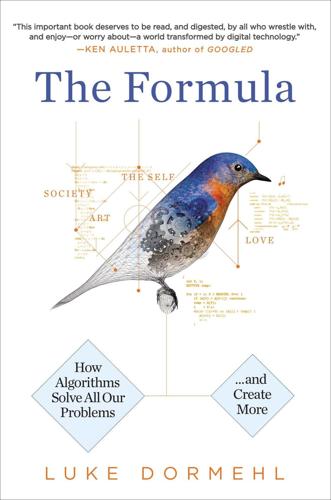
The Formula: How Algorithms Solve All Our Problems-And Create More
by
Luke Dormehl
Published 4 Nov 2014
A person simply moves to the next user in line and begins the process over again, since there are always enough people online (at least in the case of those apps that find success) to counteract the loneliness of any given moment. While most of these apps require that people consciously engage with them, this rule is by no means an absolute. In his most recent book, Who Owns the Future?, computer scientist and virtual reality pioneer Jaron Lanier recalls a panel he served on at UC Berkeley, judging start-up proposals submitted by graduate engineering students enrolled in an entrepreneurial program. A group of three students presented a concept for quantifying nights out so as to ensure maximum romantic success for those involved. “Suppose you’re darting around San Francisco bars and hot spots on a Saturday night,” Lanier remembers the group pitching.
…
Although it can be used to mimic a wide palette of sounds using a single keyboard, it retains the keyboard’s staccato, mosaic qualities, which means that it cannot emulate the type of curvaceous sounds produceable by, say, a talented singer or saxophonist. As virtual-reality innovator (and talented musician) Jaron Lanier observes: Before MIDI, a musical note was a bottomless idea that transcended absolute definition . . . After MIDI, a musical note [is] no longer just an idea, but a rigid, mandatory structure you couldn’t avoid in the aspects of life that had gone digital.43 This sort of technological “lock-in” is an unavoidable part of measurement.
…
: Translation and the Meaning of Everything.8 Even if Google Translate’s results aren’t always perfect, they are often “good enough” to be useful—and are getting better all the time. The Great Restructuring What is notable about The Formula is how, in many cases, an algorithm can replace large numbers of human workers. Jaron Lanier makes this point in his most recent book, Who Owns The Future?, by comparing the photography company Kodak with the online video-sharing social network Instagram. “At the height of its power . . . Kodak employed more than 140,000 people and was worth $28 billion,” Lanier observes. “They even invented the first digital camera.

The Inevitable: Understanding the 12 Technological Forces That Will Shape Our Future
by
Kevin Kelly
Published 6 Jun 2016
The lab turned out to be a couple of rooms in an office complex that were missing most of their desks. The walls were covered by a gallery of neoprene bodysuits embroidered with wires, large gloves sporting electronic components, and rows of duct-taped swimming goggles. The guy I’d gone to see, Jaron Lanier, sported shoulder-length blond dreadlocks. I wasn’t sure where this was going, but Jaron promised me a new experience, something he called virtual reality. A few minutes later Lanier handed me one black glove, a dozen wires snaking from the fingers across the room to a standard desktop PC.
…
He then first uttered his now famous remark: “The future is already here; it’s just not evenly distributed.” VR was so uneven, however, it faded. The next steps never happened. All of us, myself included, thought VR technology would be ubiquitous in five years or so—at least by the year 2000. But no advances happened till 2015, 25 years after Jaron Lanier’s pioneering work. The particular problem with VR was that close enough was not close enough. For extended stays in VR longer than 10 minutes, the coarseness and stuttering motion caused nausea. The cost of gear sufficiently powerful, fast, and comfortable enough to overcome nausea was many tens of thousands of dollars.
…
A few years ago the founder of Second Life, Phil Rosedale, started another VR-ish company trying to harness the social opportunities of an open simulated world and to invent a more convincing VR. Recently I visited the offices of Rosedale’s startup, High Fidelity. As the name implies, the aim of its project is to raise the realism in virtual worlds occupied by thousands—maybe tens of thousands—of avatars at once. Create a realistic thriving virtual city. Jaron Lanier’s pioneering VR permitted two occupants at once, and the thing I noticed (and everyone else who visited) was that other people in VR were far more interesting than other things. Experimenting again in 2015, I found the best demos of synthetic worlds are ones that trigger a deep presence not with the most pixels per inch, but with the most engagement of other people.

Don't Be Evil: How Big Tech Betrayed Its Founding Principles--And All of US
by
Rana Foroohar
Published 5 Nov 2019
I continue to await a clear answer to the fundamental questions: “Are you playing by the same rules as everyone else? And if not, why not?” Silicon Valley has always had a core Ayn Rand libertarianism underneath its hippie patina: It justifies their sense of freedom from any costly social responsibility for the downsides of their products and services. As Jonathan Taplin, Jaron Lanier, and other Silicon Valley critics have written, the tech titans may tend to vote left, but the strong libertarian bias in digital culture cuts right. Theirs is an eighties-style “Greed is good” ethos overlaid with the contempt of a youthful generation of CEOs who’ve never seen government do anything much more ambitious than cut taxes.
…
I can’t tell you how many technologists and venture capitalists I’ve spoken to in the past several years who say that they simply won’t invest in areas that Google or Facebook or Amazon or Apple are likely to play in, because of the difficulties inherent in protecting open-source technology, and/or defending patents against the big guys, who inevitably have more time and legal muscle on their side. As technologist Jaron Lanier has pointed out, the most profitable assets, like Google’s own PageRank algorithms, or the closed system of the iPhone, are almost always proprietary, rather than open. “While the open approach has been able to create lovely, polished copies, it hasn’t been so good at creating notable originals,” says Lanier,16 a fact that underscores the way in which Big Tech firms push open-source to the extent that it aids their ability to profit from others’ innovation, but rarely let competitors anywhere near the code that powers their own key technologies.
…
But it’s true that a growing number of technologists are finally waking up to the sheer force of the destruction they’ve unwittingly unleashed—and working to absolve the sins of their past. Witness techies-turned-activists like Tim Berners-Lee, who created the World Wide Web, and is now trying to wrest it out of Big Tech’s all-too-powerful hands. Or James Williams, a Googler-turned-philosopher who left the Valley for Oxford to research the ethics of persuasive technology. Or Jaron Lanier, the pioneer of virtual reality, whose recent book, Ten Arguments for Deleting Your Social Media Accounts Right Now, argues that social media is creating a culture of victims and diminishing diversity of thought in a way that will undermine not only our economy and democracy, but free thought itself.

The Singularity Is Near: When Humans Transcend Biology
by
Ray Kurzweil
Published 14 Jul 2005
Martine Rothblatt, "Biocyberethics: Should We Stop a Company from Unplugging an Intelligent Computer?" September 28, 2003, http://www.KurzweilAI.net/meme/frame.html?main=/articles/art0594.html (includes links to a Webcast and transcripts) . 11. Jaron Lanier, "One Half of a Manifesto," Edge, http://www.edge.org/3rd_culture/lanier/lanier_index.html; see also Jaron Lanier, "One-Half of a Manifesto," Wired News, December 2000, http://www.wired.com/wired/archive/8.12/lanier.html. 12. Ibid. 13. Norbert Wiener, Cybernetics: or, Control and Communication in the Animal and the Machine (Cambridge, Mass.: MIT Press, 1948). 14.
…
But because we're exposed to only the behavior of others, we can only imagine their subjective experiences. Because it is possible to construct a perfectly consistent, scientific worldview that omits the existence of consciousness, some observers come to the conclusion that it's just an illusion. Jaron Lanier, the virtual-reality pioneer, takes issue (in the third of his six objections to what he calls "cybernetic totalism" in his treatise "One Half a Manifesto") with those who maintain "that subjective experience either doesn't exist, or is unimportant because it is some sort of ambient or peripheral effect."11 As I pointed out, there is no device or system we can postulate that could definitively detect subjectivity (conscious experience) associated with an entity.
…
RAY: Very well, it's reasonable to leave out the entire contents of the GI tract, bacteria and all. That's actually how the body sees it. Even though it's physically inside the body, the body considers the tract to be external and carefully screens what it absorbs into the bloodstream. MOLLY 2004: As I think more about who I am, I kind of like Jaron Lanier's "circle of empathy." RAY: Tell me more. MOLLY 2004: Basically, the circle of reality that I consider to be "me" is not clear-cut. It's not simply my body. I have limited identification with, say, my toes and, after our last discussion, even less with the contents of my large intestine. RAY: That's reasonable, and even with regard to our brains we are aware of only a tiny portion of what goes on in there.

We-Think: Mass Innovation, Not Mass Production
by
Charles Leadbeater
Published 9 Dec 2010
And then there is monarchy – that’s me – but I try to get involved as little as possible. The most contentious question about Wikipedia is the one that really matters: how good an encyclopaedia is it? Sanger argues that its quality is questionable because its experts do not vet amateur contributions. In an influential online essay cultural critic Jaron Lanier branded it a form of digital Maoism on the grounds that it promotes an anonymous collective account of knowledge that on any subject favours the often inaccurate lowest common denominator. Others allege that Wikipedia licenses gossip and falsehoods to masquerade as truth, because contributions are often not checked fully.
…
A closely related fear is that younger generations are growing up with a shrunken sense of individuality, unable to think for themselves until they know what everyone else in their social network is thinking. All too quickly We-Think can become group-think as people blindly follow the herd. The web could enforce conformity rather than encouraging individuality. Jaron Lanier, in a widely read online essay published in May 2006, alleged that ‘digital Maoism’ was promoting collective stupidity. People were taking their lead, Lanier argued, from the all-wise ‘collective’ rather than bothering to think for themselves. His case is only strengthened by web advocates, such as Kevin Kelly, the original editor of Wired, who claim that the web is creating a ‘hive mind’, that of an anonymous collective in which individuals are like bees or ants.
…
Available from http:// www.msnbc.msn.com/id/12015774/site/newsweek 16 Fred Turner, From Counterculture to Cyberculture (Chicago, IL/London: University of Chicago Press, 2006) 17 Patrice Flichy, The Internet Imaginaire (Cambridge, MA: MIT Press, 2007) 18 Charles Leadbeater, ‘The DIY State’, Prospect 130, January 2007 19 Fred Turner, op. cit. 20 John Markoff, What the Dormouse Said: How the Sixties Counterculture Shaped the Personal Computer Industry (Penguin, 2006) 21 Patrice Flichy, The Internet Imaginaire (Cambridge, MA: MIT Press, 2007) 22 Jonathan Lethem, ‘The Ecstasy of Influence’, Harper’s Magazine, February 2007 23 Garrett Hardin, ‘The Tragedy of the Commons’, Science 162 (1968), pp. 1243–48 24 Elenor Ostrom, Governing the Commons (Cambridge University Press, 1990) 25 Lawrence Lessig, Code and Other Laws of Cyberspace (New York, NY: Basic Books, 1999) and Free Culture (New York, NY: Penguin Press, 2004) 26 Melvyn Bragg, The Routes of English (BBC Factual and Learning, 2000); Melvyn Bragg, The Adventure of English (Hodder & Stoughton Ltd, 2003) 27 Jonathan Lethem, ‘The Ecstasy of Influence’, Harper’s Magazine, February 2007 28 Cory Doctorow et al., ‘On “Digital Maoism: The Hazards of the New Online Collectivism” By Jaron Lanier’, Edge (2006). http://www.edge.org/discourse/digital_ maoism.html 29 Paul A. David, ‘From Keeping “Nature’s Secrets” to the Institutionalization of “Open Science”‘, in Rishab Aiyer Ghosh (Ed.), Code (Cambridge, MA/London: MIT Press, 2005) 30 Alessandro Nuvolari, ‘Open Source Software Development: Some Historical Perspectives’, Eindhoven Centre for Innovation Studies Working Paper 03.01 (2003); Koen Frenken and Alessandro Nuvolari, ‘The Early Development of the Steam Engine: An Evolutionary Interpretation Using Complexity Theory’, Eindhoven Centre for Innovation Studies Working Paper 03.15 (2003) Chapter 3 1 Andrew Brown, In the Beginning Was the Worm (Pocket Books, 2003) 2 Eric S.

The New Class Conflict
by
Joel Kotkin
Published 31 Aug 2014
Ware’s proposals for greater controls for privacy were largely ignored, and they seem unlikely to be re-imposed given the economic benefits of personal data for both Oligarchs and advertisers, not to mention the requirements of the state security apparat.52 Essentially we now have not so much a “surveillance state” as what David Lyons has termed a “surveillance society,” where those who control information include not only state players but also certain well-positioned private ones.53 Similarly, hopeful models of entrepreneurship and competition from technology have morphed more to an oligarchic structure, with huge concentrations of both corporate market share and enormous wealth. The hopes for a more open, less intrusive reality for computer users—now the vast majority of people—have vanished, not only due to government but through the profit-seeking activities of the Oligarchal class. “The clamor for online attention only turns into money,” notes technology analyst Jaron Lanier, for “a new tiny class of people who always benefit.”54 Lanier suggests that the current Oligarchical ascendency rests increasingly on efforts to penetrate the private lives of every individual consumer. Google has already been caught bypassing Apple’s privacy controls on phones and computers, and handing the data over to advertisers.
…
Yet at the same time, the individual companies and organizations in Silicon Valley have bargained and evaded paying their own taxes while the higher taxes fall on the heads of the middle class.116 Founders of even newer companies, such as Twitter, have developed elaborate plans to avoid taxation and protect their suddenly vast estates as their companies went public.117 Facebook, for example, paid no taxes in 2012, despite making a profit of over $1 billion.118 Apple, which the New York Times recently described as “a pioneer in tactics to avoid taxes,”119 has kept much of its cash hoard abroad to help avoid taxes.120 Microsoft has shaved nearly $7 billion off its U.S. tax bill since 2009 by using loopholes to shift profits offshore, a Senate panel said in a recent report.121 People: “Flies in the Ointment” “People are the flies in Moore’s Law’s ointment,” notes Jaron Lanier, referring to the oft-cited principle of inexorably greater computer power.122 Technological change has had a devastating effect on many workers, yet the Oligarchs have not, at least until recently, faced any strong criticism for how they deal with their own employees. Ironically, one reason lies with the nature and relatively small size of their workforce.
…
These, he suggests, created hosts of industries and opportunities for working- and middle-class people in ways that social media, for example, has not.79 Equally critical, the fact that these industries are increasingly dominated by a handful of firms—Amazon, Apple, Google, Facebook—tends to benefit an ever smaller group of people with unprecedented access to the information of the vast majority. As Jaron Lanier points out, the leading digital companies tend to view people as “small elements in a bigger information machine.” He suggests that the modern oligopolies are excused in part by the promise of a future blessed, at least for an influential few, by “high-tech abundance”—what he describes as “the price of heaven.”80 What is needed instead is a notion that the Internet and core information age technologies be treated as something like a highway—paid for by taxpayers and constructed by government—that should be kept as open as possible to newcomers.

Artificial Unintelligence: How Computers Misunderstand the World
by
Meredith Broussard
Published 19 Apr 2018
Guardian (US edition), November 22, 2010. https://www.theguardian.com/media/2010/nov/22/data-analysis-tim-berners-lee. Barlow, John Perry. “A Declaration of the Independence of Cyberspace.” Electronic Frontier Foundation, February 8, 1996. https://www.eff.org/cyberspace-independence. Been, Eric Allen. “Jaron Lanier Wants to Build a New Middle Class on Micropayments.” Nieman Lab, May 22, 2013. http://www.niemanlab.org/2013/05/jaron-lanier-wants-to-build-a-new-middle-class-on-micropayments/. Bench, Shane W., Heather C. Lench, Jeffrey Liew, Kathi Miner, and Sarah A. Flores. “Gender Gaps in Overestimation of Math Performance.” Sex Roles 72, no. 11–12 (June 2015): 536–546. doi:10.1007/s11199-015-0486-9.
…
If self-driving cars are programmed to save the driver over a group of kindergarteners, why? What does it mean to accept that programming default and get behind the wheel? Plenty of people, including technologists, are sounding warnings about self-driving cars and how they attempt to tackle very hard problems that haven’t yet been solved. Internet pioneer Jaron Lanier warned of the economic consequences in an interview: The way self-driving cars work is big data. It’s not some brilliant artificial brain that knows how to drive a car. It’s that the streets are digitized in great detail. So where does the data come from? To a degree, from automated cameras. But no matter where it comes from, at the bottom of the chain there will be someone operating it.
…
Lowy and Krisher, “Tesla Driver Killed in Crash While Using Car’s ‘Autopilot.’” 20. Liu et al., “CAAD: Computer Architecture for Autonomous Driving” 21. Sorrel, “Self-Driving Mercedes Will Be Programmed to Sacrifice Pedestrians to Save the Driver.” 22. Taylor, “Self-Driving Mercedes-Benzes Will Prioritize Occupant Safety over Pedestrians.” 23. Been, “Jaron Lanier Wants to Build a New Middle Class on Micropayments.” 24. Pickrell and Li, “Driver Electronic Device Use in 2015.” 25. Dadich, “Barack Obama Talks AI, Robo Cars, and the Future of the World.” 9 Popular Doesn’t Mean Good How can you take a “good” selfie? In 2015, several prominent American media outlets covered the results of an experiment that purported to answer this question using data science.

How to Fix the Future: Staying Human in the Digital Age
by
Andrew Keen
Published 1 Mar 2018
It “all comes down to people and values,” he explains about the impact of digital technology on jobs,22 which is why we need what he calls “a human narrative” to fix its problems.23 To write a human narrative in today’s age of smart machines requires a definition of what it means to be human. “As soon as you start defining the question what is human, it becomes a belief,” the writer and inventor Jaron Lanier once warned me over lunch in New York as we prepared for a debate about the impact of AI on humanity. Lanier may be right. But in a world in which we’ve invented technology that is almost human, it seems only natural that we would want to compare ourselves with smart machines in an effort to define both ourselves and this new technology.
…
“The internet is broken”: thus conclude digital pioneers such as Twitter cofounder Evan Williams and Wikipedia cofounder Jimmy Wales.5 Like Williams and Wales, more and more technologists are recognizing that today’s networked transformation is writing us out of our own story. The internet might have been described as the “people’s platform,”6 these critics say, but in fact it has a people problem. Jaron Lanier, the inventor of virtual reality and Silicon Valley’s most poignant thinker, even admits to a nostalgia for that halcyon time in the last century when technology did, indeed, put people first. “I miss the future,” Lanier confesses.7 He’s far from alone. Even Tim Berners-Lee, the inventor of the World Wide Web, is nostalgic for the open, decentralized technological future he imagined he’d fathered in 1989.
…
If Price’s arguments are correct and time does, indeed, travel backward, then he and I—by eating lunch together in what I wistfully described as the “metaphysical” Hall, with its “hallowed” air—might, in fact, be the “historic” ones influencing the Reformation, the Renaissance, and the Enlightenment. If time’s arrow really is directed backward, then nostalgia for tomorrow would be entirely logical. Jaron Lanier certainly wouldn’t be the only person who missed the future. Just as the classical Greek mathematician Archimedes called for a vantage point in the universe, the so-called Archimedes point, to be able to objectively examine the physical world—a “view from nowhere” as one contemporary philosopher put it—so Price believes that physicists and philosophers need to establish a similarly authoritative place, a point outside time, where we can think about the temporal world.
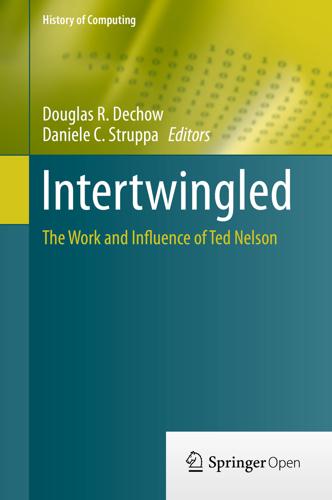
Intertwingled: The Work and Influence of Ted Nelson (History of Computing)
by
Douglas R. Dechow
Published 2 Jul 2015
LS: The existing web as a set of containers for simulated pre-internet media. Yup. PS: Which brings us right back to James Joyce and Marcel Proust, authors whose writings swung toward multimedia…seamless multimedia; virtual reality…virtual reality not in the sense of Jaron Lanier, but Antonin Artaud. Most people believe Jaron Lanier coined the term virtual reality in the early 1980s. Indeed, virtual reality is considered synonymous with the interface glove and head-mounted. But Artaud put those two words together – “virtual” and “reality” – back in the early 1930s. Artaud’s virtual reality was a modern equivalent of alchemy.
…
Forty years after Computer Lib, computers are far more sophisticated and the networks among digital objects are much richer and more complex. It is time to revisit fundamental assumptions of networked computing, such as the directionality of links, a point made by multiple speakers at the symposium—Wendy Hall, Jaron Lanier, Steve Wozniak, and Rob Akcsyn amongst them.1 Fig. 10.3Ordinary hypertext, with multi-directional links. From Literary Machines (Used with permission) 10.2.3 Managing Research Data Managing research data is similarly a problem of defining and maintaining relationships amongst multi-media objects.
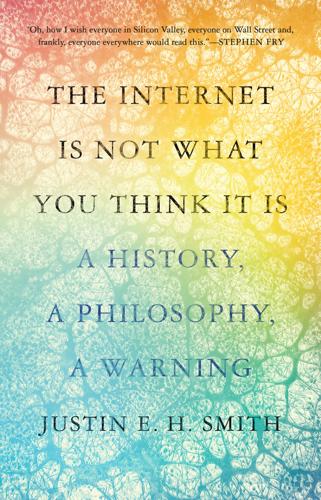
The Internet Is Not What You Think It Is: A History, a Philosophy, a Warning
by
Justin E. H. Smith
Published 22 Mar 2022
Diogenes Laertius, Lives of Eminent Philosophers, vol. 2, Books 6–10, trans. R. D. Hicks, Loeb Classical Library, 185, Cambridge, MA: Harvard University Press, 1925. Ganaele Langlois, “Distributed Intelligence: Silk Weaving and the Jacquard Mechanism,” Canadian Journal of Communication 44, 4 (2019): 555–566. Jaron Lanier, You Are Not a Gadget: A Manifesto, New York: Penguin Random House, 2011. Jaron Lanier, Ten Arguments for Deleting Your Social Media Accounts Right Now, New York: Henry Holt and Company, 2018. Frank La Rue, Report of the Special Rapporteur on the Promotion and Protection of the Right to Freedom of Opinion and Expression, Human Rights Council, Seventeenth Session Agenda, item 3, United Nations General Assembly, May 16, 2011.
…
We use this word when we want to discuss tools as such, and to do so in a mildly mocking and diminutive way. Such a comic tint is there wherever, in particular, gadgethood is projected back on the users of gadgets, when so to speak the waterer gets watered, and human beings begin to be conceptualized on the same ontological model as the tools they have created. When Jaron Lanier warns that “you are not a gadget,” as he does in the title of a well-received book,32 he is attempting to win back something, let us call it the irreducible human essence, that has long been perceived to be under threat, from Descartes’s thought experiment of the automaton that walks outside his window under a hat and cloak, to the cultural representation of the comical, but also uncanny and horrifying, 1980s cartoon figure of Inspector Gadget, also under a hat and cloak, laying bare his mechanical inner workings in order to fight crime.
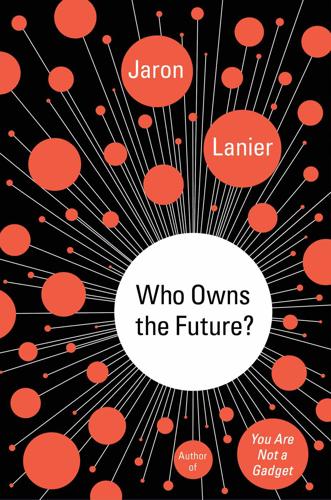
Who Owns the Future?
by
Jaron Lanier
Published 6 May 2013
Lanier also writes orchestral music and plays a large variety of rare acoustic musical instruments. He is currently at work with colleagues at Microsoft Research on intriguing unannounced projects. www.jaronlanier.com FORE MORE ON THIS AUTHOR: Authors.SimonandSchuster.com/Jaron-Lanier MEET THE AUTHORS, WATCH VIDEOS AND MORE AT SimonandSchuster.com Also by Jaron Lanier You Are Not a Gadget: A Manifesto We hope you enjoyed reading this Simon & Schuster eBook. * * * Join our mailing list and get updates on new releases, deals, bonus content and other great books from Simon & Schuster. CLICK HERE TO SIGN UP or visit us online to sign up at eBookNews.SimonandSchuster.com Notes First Interlude: Ancient Anticipation of the Singularity 1.
…
Conclusion: What Is to Be Remembered? All This, Just for the Whiff of Possibility The Economics of the Future Is User Interface Design The Tease of the Tease Know Your Poison Is There a Test for Whether an Information Economy Is Humanistic? Back to the Beach Appendix: First Appearances of Key Terms Acknowledgments About Jaron Lanier Notes Index To everyone my daughter will know as she grows up. I hope she will be able to invent her place in a world in which it’s normal to find success and fulfillment. Prelude Hello, Hero An odd thing about this book is that you, the reader, and I, the author, are the immediate protagonists.
…
Thanks to my early readers: Brian Arthur, Steven Barclay, Roger Brent, John Brockman, Eric Clemons, George Dyson, Doyne Farmer, Gary Flake, Ed Frenkel, Dina Graser, Daniel Kahneman, Lena Lanier, Dennis Overbye, David Rothenberg, Lee Smolin, Jeffrey Soros, Neal Stephenson, Eric Weinstein, and Tim Wu. Thanks to the musical instrument makers and dealers of Berkeley, Seattle, New York City, and London for providing delightful opportunities for procrastination. © JONATHAN SPRAGUE Jaron Lanier is a computer scientist and musician, best known for his work in virtual reality research. He coined and popularized the term, and he received a Lifetime Career Award from the IEEE in 2009 for his contributions to the field. Time named him as one of the “Time 100” in 2010. A profile in Wired described him as “the first technology figure to cross over to pop-culture stardom.”
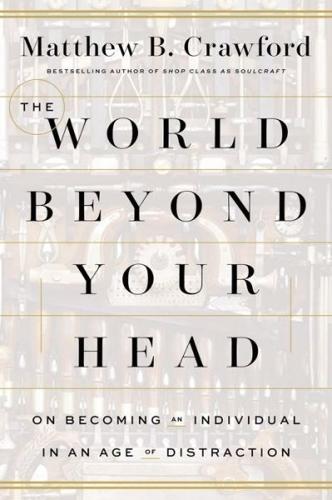
The World Beyond Your Head: On Becoming an Individual in an Age of Distraction
by
Matthew B. Crawford
Published 29 Mar 2015
If Polanyi is right about how scientists and other thinkers are formed, then to weaken the local authority of teachers and traditions that embody “personal knowledge” is a bad idea, on both epistemic and political grounds. It is part of our Enlightenment heritage that we are taught to take an intransigent stance against the authority of other people. In the budding romance between Silicon Valley and our universities, there is an exciting prospect that “the scent of people might be removed altogether” (as Jaron Lanier said in another context). If you can’t smell it and you can’t touch it, whatever authority is acting must be that of reason itself! Quite apart from the business appeal of MOOCs for universities (payroll is a lamentable thing), mechanizing instruction is appealing also because it fits with our ideal of epistemic self-responsibility.
…
In countless little ways, any single one of which seems trivial, this liberal arts college is unthinkingly repeating bits of Silicon Valley ideology that would seem to undermine the rationale for studying the liberal arts. The university has become “the brilliant ally of its own gravediggers,” to borrow a phrase from Milan Kundera.6 Jaron Lanier criticizes what he calls “digital Maoism,” a “new online collectivism” that shows up, for example, in the way Wikipedia is regarded and used, and is the guiding spirit of firms such as Google as well. The analogy with Maoism is quite apt and precise. The ideologists of the Web have always been antielitists, eager to brush the “gatekeepers” of knowledge into the dustbin of history.
…
In the Anglo-American universe, the French are lampooned for their regulatory zeal. But they have a robust sense of the common good, and are sensitive to the small but important ways in which the fabric of everyday life can be degraded if they are not vigilant in defending it. 5. A similar argument has been made by Jaron Lanier in his book Who Owns the Future? (New York: Simon & Schuster, 2013). He argues that digital networks that make information appear to be “free” have had the effect of making it harder for people to be compensated for their talents. We become laborers who cheerfully contribute to the value of the network (consider the staggering array of talent on display on YouTube), but that value accrues to whoever owns the network.

Artificial Intelligence: A Guide for Thinking Humans
by
Melanie Mitchell
Published 14 Oct 2019
Ekbia, Artificial Dreams: The Quest for Non-biological Intelligence (Cambridge, U.K.: Cambridge University Press, 2008). 6. Lucid company’s webpage: lucid.ai. 7. P. Domingos, The Master Algorithm (New York: Basic Books, 2015), 35. 8. From “The Myth of AI: A Conversation with Jaron Lanier,” Edge, Nov. 14, 2014, www.edge.org/conversation/jaron_lanier-the-myth-of-ai. 9. For example, see N. Watters et al., “Visual Interaction Networks,” Advances in Neural Information Processing Systems 30 (2017): 4539–47; T. D. Ullman et al., “Mind Games: Game Engines as an Architecture for Intuitive Physics,” Trends in Cognitive Sciences 21, no. 9 (2017): 649–65; and K.
…
Bostrom, “Future Progress in Artificial Intelligence: A Survey of Expert Opinion,” in Fundamental Issues of Artificial Intelligence (Basel, Switzerland: Springer, 2016), 555–72. 18. N. Bostrom, “How Long Before Superintelligence?,” International Journal of Future Studies 2 (1998). 19. D. R. Hofstadter, Gödel, Escher, Bach: an Eternal Golden Braid (New York: Basic Books, 1979), 677–78. 20. From “The Myth of AI: A Conversation with Jaron Lanier,” Edge, Nov. 14, 2014, www.edge.org/conversation/jaron_lanier-the-myth-of-ai. 21. P. Domingos, The Master Algorithm (New York: Basic Books, 2015), 285–86. 22. From “Panel: Progress in AI: Myths, Realities, and Aspirations,” Microsoft Research video, accessed Dec. 18, 2018, www.youtube.com/watch?v=1wPFEj1ZHRQ&feature=youtu.be. 23.
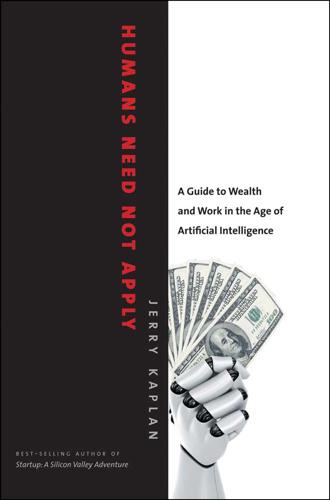
Humans Need Not Apply: A Guide to Wealth and Work in the Age of Artificial Intelligence
by
Jerry Kaplan
Published 3 Aug 2015
In principle, all these developments will not only free you from drudgery but make you more efficient and effective, if you’re lucky enough to be able to afford them. Bespoke electronic agents may promote your personal interests, represent you in negotiations, and teach you calculus—but not all such systems will be working on your behalf. Humans are suckers for the quick win. What Jaron Lanier presciently calls “siren servers” will custom-tailor short-term incentives to your desires, persuading you to do things that may not be in your long-term interests.1 The irresistible lure of temporary bargains and faster delivery may obscure the gradual destruction of the lifestyle that you hold near and dear.
…
Last but not least, thanks to my amazing wife, Michelle Petti-grew-Kaplan, for permitting me to jot down ideas on index cards during what might otherwise be construed as romantic moments. Let’s hope she doesn’t read the personal portions of this manuscript until it’s too late to make changes. Oops, forgot to mention the kids—Chelsea, Jordan, Lily, and Cami—hi, guys, guess what? I finished the book! Notes INTRODUCTION 1. Jaron Lanier, Who Owns the Future? (New York: Simon and Schuster, 2013). 2. For instance, they may execute a “short squeeze” by bidding up a stock that investors have sold short, forcing them to close out their positions at ever-higher prices to contain their losses. 3. Marshall Brain, Manna (BYG, 2012). 4.
…
Meltzer, “Open to Exploitation: American Shoppers Online and Offline,” Annenberg Public Policy Center of the University of Pennsylvania, 2005, http://repository.upenn.edu/asc_papers/35. 6. The French phrase laissez-faire literally translates as “Let it be” or “Let them do it,” meaning to permit the market to operate freely, without government interference. 7. This effect is meticulously detailed in Jaron Lanier, Who Owns the Future? (New York: Simon and Schuster, 2013). 8. Kaiser Permanente, my health maintenance organization, has taken this to its logical extreme: it won’t even tell you what your medications cost until after it has shipped them to you. As a result of plan changes required by the Affordable Care Act, Kaiser Permanente actually charged me $2,431.85 for a refill that a month earlier had cost only $40.95.

Zucked: Waking Up to the Facebook Catastrophe
by
Roger McNamee
Published 1 Jan 2019
Insights gathered this way changed the nature of ad targeting. More important, though, all that data goes into Facebook’s (or Google’s) artificial intelligence and can be used by advertisers to exploit the emotions of users in ways that increase the likelihood that they purchase a specific model of car or vote in a certain way. As the technology futurist Jaron Lanier has noted, advertising on social media platforms has evolved into a form of manipulation. Google+ was Google’s fourth foray into social networking. Why did Google try so many times? Why did it keep failing? By 2011, it must have been obvious to Google that Facebook had the key to a new and especially valuable online advertising business.
…
Even the smallest changes to one algorithm can trigger profound ripple effects through the rest of the system. A clear case where moving fast can break things in unpredictable ways. While Facebook argues that its technology is “value neutral,” the evidence suggests the opposite. Technology tends to reflect the values of the people who create it. Jaron Lanier, the technology futurist, views the role of algorithms as correlating data from individual users and between users. In an opinion piece in The Guardian, Lanier wrote, “The correlations are effectively theories about the nature of each person, and those theories are constantly measured and rated for how predictive they are.
…
The platforms were still deflecting responsibility and that would not change without dramatically more public awareness and pressure. 7 The Facebook Way The problem isn’t any particular technology, but the use of technology to manipulate people, to concentrate power in a way that is so nuts and creepy that it becomes a threat to civilization. —JARON LANIER Thanks to the hearings, the press took a greater interest in the role of internet platforms in the Russian interference. Every story added to public awareness and gradually increased the pressure on policy makers to do something. We met with many politicians, which helped us appreciate one of the rules of politics: if you want to bring about change and don’t have a huge lobbying budget, there is no substitute for pressure from voters.

Dataclysm: Who We Are (When We Think No One's Looking)
by
Christian Rudder
Published 8 Sep 2014
Women are using apps My discussion of menstruation apps is based on Jenna Wortham, “Our Bodies, Our Apps: For the Love of Period-Trackers,” New York Times, January 23, 2014. there’s a startup that says it can infer This fact is from Jaron Lanier, “How Should We Think About Privacy?” Scientific American, November 2013, 65–71. all the analysis was done anonymously and in aggregate It bears repeating that at no time was any data tied back to any individual. For the user photos and text cited in the book see the notes above related to them. Jaron Lanier My discussion of Lanier’s work focuses on his article “How Should We Think About Privacy?” “Using data drawn from queries” See John Markoff, “Unreported Side Effects of Drugs Are Found Using Internet Search Data, Study Finds,” New York Times, March 7, 2013, nytimes.com/2013/03/07/science/unreported-side-effects-of-drugs-found-using-internet-data-study-finds.html.
…
And in any analysis the scope of the data was limited to only the essential variables, so nothing could be tied back to any individual. I never wanted to connect the data back to individuals, of course. My goal was to connect it back to everyone. That’s the value I see in the data and therefore in the privacy lost in its existence: what we can learn. Jaron Lanier, author of Who Owns the Future? and a computer scientist currently working at Microsoft Research, wrote in Scientific American that “a stupendous amount of information about our private lives is being stored, analyzed and acted on in advance of a demonstrated valid use for it.” He’s unquestionably right about the “tremendous amount,” but I take issue with his final clause.
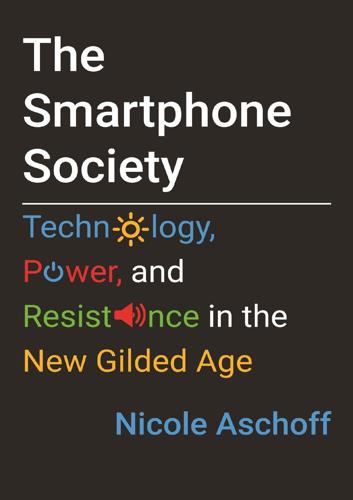
The Smartphone Society
by
Nicole Aschoff
Our choices are not as free as we think they are.”26 Guillaume Chaslot, also a former Google employee, says YouTube’s recommender algorithm keeps people glued to the page by showing them increasingly extreme content.27 Chaslot claims that he was fired for pushing too hard to get the company to address his ethical concerns regarding the algorithm.28 Jaron Lanier, a longtime tech insider, recently published a book, Ten Arguments for Deleting Your Social Media Accounts Right Now, in which he denounces social media and warns readers that they are destroying our character, our ability to empathize, our soul.29 The growing consensus is that we’re in thrall to a technology that we are psychologically incapable of handling.
…
They see you bought your man headphones, that you two are planning to see a comedy show for his upcoming birthday, and that you spent the rest of the train ride on WhatsApp. And finally, that you got off near the Boston University Bridge and walked the rest of the way home. These things that tech companies know about you are a mere taste, a tiny slice, of the information that is gleanable from one afternoon in the life of a moderate smartphone user. Jaron Lanier gives a sense of tech companies’ omniscience: Algorithms gorge on data about you, every second. What kind of links do you click on? What videos do you watch all the way through? How quickly are you moving from one thing to the next? Where are you when you do these things? Who are you connecting with in person and online?
…
It leaves these questions to be decided by whoever is left, which in practice means the private corporations who are already in control, and who, as history has shown, have little incentive or propensity to regulate themselves. The fact is smartphones aren’t going anywhere. Like the automobile they’ve become integrated into life. We have the power—if we take it—to shape what that integration looks like. Jaron Lanier, a virtual reality pioneer, is on the retreat bandwagon, but he advocates a more circumscribed retreat. He urges us to teach companies like Facebook and Google a lesson by becoming social media refuseniks until they agree to give us back control over our data. Only when they agree to pay us for our data, Lanier argues, should we agree to return: “I won’t have an account on Facebook, Google, or Twitter until . . .
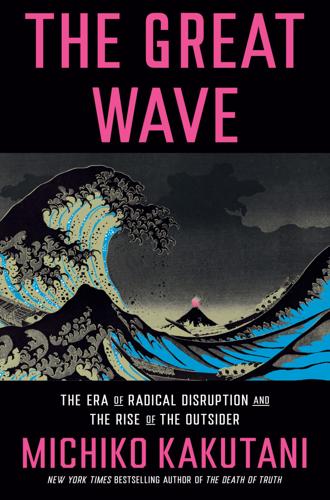
The Great Wave: The Era of Radical Disruption and the Rise of the Outsider
by
Michiko Kakutani
Published 20 Feb 2024
GO TO NOTE REFERENCE IN TEXT “firehose of falsehood”: Christopher Paul and Miriam Matthews, “The Russian ‘Firehose of Falsehood’ Propaganda Model: Why It Might Work and Options to Counter It,” RAND Corporation, 2016, rand.org/pubs/perspectives/PE198.html. GO TO NOTE REFERENCE IN TEXT One particularly fateful decision: Jaron Lanier, “How We Need to Remake the Internet,” TED2018, ted.com/talks/jaron_lanier_how_we_need_to_remake_the_internet?language=en. GO TO NOTE REFERENCE IN TEXT “What might once have been called”: Ten Arguments for Deleting Your Social Media Accounts Right Now (New York: Picador/Henry Holt and Co., 2018), 6. GO TO NOTE REFERENCE IN TEXT He argues that social media: Ibid., 20.
…
As Wall Street types began to displace the hippies in Silicon Valley and an ethos of growth at any cost took hold, the internet became a labyrinth of algorithms designed to optimize ad revenues, collect data, and sell us more stuff. And our loss of privacy was only one of many multiplying concerns. “What might once have been called advertising must now be understood as continuous behavior modification on a titanic scale,” writes Jaron Lanier (Ten Arguments for Deleting Your Social Media Accounts Right Now), a pioneer in the development of virtual reality and a member of Silicon Valley’s founding generation. He argues that social media “is biased, not to the Left or the Right, but downward,” and that the ease of using negative emotions online “for the purposes of addiction and manipulation” has resulted in a digital ecosystem in which “information warfare units sway elections, hate groups recruit, and nihilists get amazing bang for the buck when they try to bring society down.”
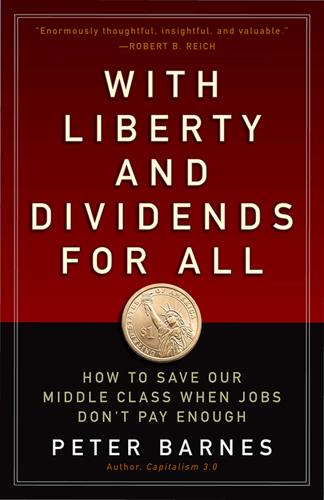
With Liberty and Dividends for All: How to Save Our Middle Class When Jobs Don't Pay Enough
by
Peter Barnes
Published 31 Jul 2014
Using taxes and fees on several large wind farms, the county pays a yearly dividend of $590 to every household. “It’s modeled after Alaska,” says the county judge, adding that the county can afford to pay more but keeps the checks under $600 to spare its clerks from filing hundreds of federal tax forms.12 Other imaginative ideas are abroad. Tech visionary Jaron Lanier writes that Google, Facebook, and other “Siren Servers” have turned a magnificent piece of public infrastructure—the Internet—into a private rent-collecting machine, without paying to use the machine or compensating those whose data and attention they profit from. “Ordinary people ‘share,’ while elite network presences generate unprecedented fortunes,” he observes.
…
New York Times, January 18, 2014, http://opin-ionator.blogs.nytimes.com/2014/01/18/what-happens-when-the-poor-receive-a-stipend/. 12. Lee Van Der Voo, “Money Blows in to a Patch of Oregon Known for Its Unrelenting Winds,” New York Times, May 30, 2011, http://www.nytimes.com/2011/05/31/us/31wind.html. 13. Jaron Lanier, Who Owns the Future? (New York: Simon & Schuster, 2013). 14. Fund rankings, Sovereign Wealth Institute, http://www.sw-finstitute.org/fund-rankings/. Alistair Doyle, “All Norwegians become crown millionaires in oil saving landmark,” Reuters, January 8, 2014, http://www.reuters.com/article/2014/01/08/us-norway-millionaires-idUSBREA0710U20140108. 15.

The Death of Truth: Notes on Falsehood in the Age of Trump
by
Michiko Kakutani
Published 17 Jul 2018
Tim Berners-Lee, who drew up a proposal in 1989 for what would become the World Wide Web, envisioned a universal information system, connecting people across boundaries of language and location and sharing information that would lead to unprecedented creativity and problem solving. A sort of benevolent version of Borges’s infinite library, where everything existed but, in this case, could also be retrieved and put to practical and imaginative use. “The rise of the web was a rare instance when we learned new, positive information about human potential,” Jaron Lanier wrote in his book You Are Not a Gadget. “Who would have guessed (at least at first) that millions of people would put so much effort into a project without the presence of advertising, commercial motive, threat of punishment, charismatic figures, identity politics, exploitation of the fear of death, or any of the other classic motivators of mankind.
…
“If algorithms are going to curate”: Eli Pariser, “Beware Online ‘Filter Bubbles,’ ” TED2011, ted.com. 7. ATTENTION DEFICIT “When you want to know”: William Gibson, Zero History (New York: Putnam, 2010), 212. Tim Berners-Lee: “History of the Web: Sir Tim Berners-Lee,” World Wide Web Foundation. “The rise of the web”: Jaron Lanier, You Are Not a Gadget (New York: Alfred A. Knopf, 2010), loc. 332–33, Kindle. “We don’t see the forest”: Nicholas Carr, The Shallows: What the Internet Is Doing to Our Brains (New York: W. W. Norton, 2010), 91. “urge to share was activated”: Wu, Attention Merchants, 320. “a commons that fostered”: Ibid., 322.

System Error: Where Big Tech Went Wrong and How We Can Reboot
by
Rob Reich
,
Mehran Sahami
and
Jeremy M. Weinstein
Published 6 Sep 2021
We generate meaning in life not merely from the felt experience of pleasure, pain, or anything in between but also from knowing that our actions, our very intentions and efforts, imperfect though they may be, are directly and causally connected to what we experience. One of the pioneers of virtual reality is Jaron Lanier, now one of the most trenchant critics of the development of technology in the past decade. Lanier’s 2010 book You Are Not a Gadget: A Manifesto, written before Facebook had turned a profit, anticipated many of the privacy-abusing practices so familiar in technology today. It also made the startling claim that certain features of digital technology “tend to pull us into life patterns that gradually degrade the ways that each of us exists as individuals.”
…
The next time you get a pop-up on a website asking you to “Accept cookies,” read the warning and be deliberate about what information you actually want to provide to the site and potential advertisers or whether you want to go there at all. You can also set your Web browser to reject all cookies, making it more difficult for websites to track information about you or build a profile of your behavior over time. In his 2018 book, Jaron Lanier provided “ten arguments for deleting your social media accounts right now.” And the popular 2020 documentary The Social Dilemma sensationally cast social media as a deliberately engineered form of addiction that could be used to control users’ actions and emotions. Such characterizations lead us to believe that the only way for us to wrest technology’s control over our lives is to disengage with it altogether.
…
“Everyone wants to have a happy life”: Wagner James Au, “VR Will Make Life Better—or Just Be an Opiate for the Masses,” Wired, February 25, 2016, https://www.wired.com/2016/02/vr-moral-imperative-or-opiate-of-masses/. no one would plug into the experience machine: Robert Nozick, The Examined Life: Philosophical Meditations (New York: Simon & Schuster, 2006), 106. “importantly connected to reality”: Ibid. “gradually degrade the ways”: Jaron Lanier, You Are Not a Gadget: A Manifesto (New York: Knopf Doubleday Publishing Group, 2010), x. economist Gregory Clark: Gregory Clark, A Farewell to Alms: A Brief Economic History of the World (Princeton: Princeton University Press, 2007), 1. rising levels of wealth: Angus Deaton, The Great Escape: Health, Wealth, and the Origins of Inequality (Princeton: Princeton University Press, 2015).

Paper Knowledge: Toward a Media History of Documents
by
Lisa Gitelman
Published 26 Mar 2014
This is a harder question to answer than the question “How does the English language influence the thoughts of native English speakers?” At least you can compare English speakers to Chinese speakers, but files are universal. The idea of the file has become so big that we are unable to conceive of a frame large enough to fit around it in order to assess it empirically. —Jaron Lanier, You Are Not a Gadget Today, rather than print and distribute, we distribute and then print. In other words, we send the file electronically to the recipient, who then prints it out. This is underlined by the fact that between 1988 and 1993, the worldwide installed base of copiers increased by only 5 percent, whereas the worldwide installed base of printers increased by 600 percent.
…
Bush’s National Guard service, which fooled Dan Rather’s team at cbs —but no famous pdf s as such, as far as I can recall. Why not? Chalk it up to a failure of imagination on my part or an accident of history if you like, or consider that pdf s are digitally processural entities and so in some sense break the mold of earlier, analog forms.14 They may require that we think differently. Or maybe, as Jaron Lanier observes (see the epigraph to this chapter), the idea of the file in general has simply gotten too big to reckon with.15 Like xerography or photo-offset, pdf is 116 CHAPTER FOUR certainly a “near print” technology of the sort that Binkley celebrated in the 1930s for internal or specialized contexts, yet pdf is also different because it is constituent of putatively paperless work practices that Binkley and his contemporaries could hardly have imagined.16 pdf represents a “format” in a context where that term refers more to dense layers of technical specifications—the result of “decisions that affect the look, feel, experience and workings of a medium”17—than it does to specific bibliographical codes, such as the size and weight of paper onto which Harpel might have printed his jobs.
…
I explore this question in Lisa Gitelman, Always Already New: Media, History, and the Data of Culture (Cambridge, MA: mit Press, 2006), chapter 4. “Processural,” I believe, is a coinage by N. Katherine Hayles. See “Materiality Has Always Been in Play, An Interview with N. Katherine Hayles by Lisa Gitelman,” 2002, accessed 26 June 2013, http://iowareview.uiowa.edu/TIRW/TIRW _ Archive/tirweb/feature/hayles/interview.htm. Jaron Lanier, You Are Not a Gadget: A Manifesto (New York: Alfred A. Knopf, 2010), 13. Robert C. Binkley, “New Tools for Men of Letters,” Yale Review 24 (March 1935): 519. N OT E S TO C H A P T E R F O U R 17. Jonathan Sterne, mp3: The Meaning of a Format (Durham, NC: Duke University Press, 2012), 7. 18.

The End of Big: How the Internet Makes David the New Goliath
by
Nicco Mele
Published 14 Apr 2013
Such waiting is inconceivable now, thanks to radical connectivity. 3. http://www.workplaceethicsadvice.com/2011/10/flash-mobs-threaten-retail-industry-retailers-are-facing-a-new-threat-this-holiday-season-swarms-of-teenagers-and-young-adu.html 4. A number of thinkers and writers have begun to explore the implications of our technology, perhaps most notably Sherry Turkle, Jaron Lanier, and Clay Shirky, all of whom have different points of view on the subject. 5. Jaron Lanier, “The Hazards of Nerd Supremacy: The Case of WikiLeaks,” The Atlantic, 20 Dec. 2010. 6. http://www.mcsweeneys.net/articles/in-which-i-fix-my-girlfriends-grandparents-wifi-and-am-hailed-as-a-conquering-hero 7. With apologies to Benjamin Nugent, author of American Nerd: The Story of My People. 8.
…
It’s about grasping the thinking underneath the actual technology—the values, mind-sets, worldviews, and arguments embedded in all those blinking gadgets and cool Web sites.4 Without realizing it, citizens and elected leaders have abdicated control over our political and economic destinies to a small band of nerds who have decided, on our own, that upstarts and renegades should triumph over established power centers and have designed technology to achieve that outcome. “Cyber-activists are perceived to be the underdogs, flawed and annoying, perhaps, but standing up to overbearing power,” says the tech pioneer Jaron Lanier. “I actually take seriously the idea that the Internet can make non-traditional techie actors powerful. Therefore, I am less sympathetic to hackers when they use their newfound power arrogantly and non-constructively.”5 Indeed, in our arrogance and optimism, we nerds haven’t considered the impact of our designs, nor have we thought through the potential for chaos, destabilization, fascism, and other ills.

Listen, Liberal: Or, What Ever Happened to the Party of the People?
by
Thomas Frank
Published 15 Mar 2016
In my fiscally challenged hometown of Kansas City, Google even got the rights to set up a local fiber-optic broadband system, making Google a public utility by definition, although one that is not obliged to provide service to everyone.7 Then there’s the spying. In his important 2013 book, Who Owns the Future?, the tech writer Jaron Lanier describes the emerging Internet giants of our time as “third-party spy service[s].” Many of them, he argues, make their profits via “the creation of ultrasecret mega-dossiers about what others are doing”;8 everything else they offer—retail sales, connecting with friends, searching the Internet—is secondary.
…
One of the great attractions of credit default swaps—a big financial innovation of the last decade—is that they were completely unregulated. Monopoly is the telos of innovation, the holy grail fervently sought after by every young coder sweating away in the incubator. The reason is plain enough: monopoly is the most direct road to profit, and the online world offers countless opportunities to achieve it. Jaron Lanier has described all the ways dominant digital networks can use market power to coerce customers, users, and advertisers; in his account the powerful players are all patterned after Wal-Mart, which so effectively dominates its suppliers and ruins its small-town competitors.16 With Amazon, the Wal-Mart comparison is obvious.
…
Eric Schmidt and Jonathan Rosenberg with Alan Eagle, How Google Works (Grand Central Publishing, 2014), pp. 5, 42. 6. Ibid., pp. 17, 18–19. 7. See “Only Connect,” an “Annotation” on the subject by Whitney Terrell and Shannon Jackson, Harper’s Magazine, April 2013. See also Scott Canon, “Within its Fiberhoods, Google Rules the Roost, Survey Says,” Kansas City Star, May 6, 2014. 8. Jaron Lanier, Who Owns the Future? (Simon & Schuster, 2013), pp. 44, 52. 9. Eric Schmidt and Jared Cohen, The New Digital Age: Reshaping the Future of People, Nations and Business (Knopf, 2013), p. 36. 10. Interview with Maria Bartiromo, December 3, 2009. 11. Andreessen: Alessandra Stanley, “The Tech Gods Giveth,” New York Times, November 1, 2015.

The Long History of the Future: Why Tomorrow's Technology Still Isn't Here
by
Nicole Kobie
Published 3 Jul 2024
And that meant there was suddenly an oversupply of extremely intelligent people with very specific skill sets and large corporate redundancy payouts. Some of them teamed up to build an industry. They included Jaron Lanier and Tom Zimmerman, who went on to set up VPL Research; Scott Fisher, who went on to NASA’s Ames lab; Brenda Laurel, who co-founded Telepresence Research with Fisher and is considered a trailblazer in game design, and Michael Naimark, who worked on that interactive map of Aspen and later with Google, Apple and LucasFilm on virtual projects. The first-named of those figures, Jaron Lanier, is a key person here, and he often gets the ‘father of virtual reality’ title that the media (again, sorry) loves to bestow, in part because he’s credited with coining the phrase ‘virtual reality’, though he himself disputes this.
…
Apparently, the plan was to release both the Vision Pro and the AR glasses simultaneously, but the latter may now take years to come to market – if they make it at all. * * * Will the hype of AR glasses, Apple or Meta or otherwise, one day live up to the reality? Probably – these are engineering challenges, and with a few more Jaron Laniers or Palmer Luckeys, perhaps they’re the solvable kind. But it remains to be seen whether we want to see a digital overlay in front of our eyes as we go about our days. For the answer is … yeah, probably. If you’d asked someone in the 1970s if they’d carry around a small glass rectangle and spend most of their day staring at it, they likely would have focused on the downsides – what about battery life?
…
WIRED, September 6, 2019. https://biturl.top/nueuQ3 Index 1X Technologies - EVE and NEO here 510 Systems here A* algorithm here Abovitz, Rony here Ackland, Nigel here activism here, here ADALINE and MADALINE neural networks here Advanced Micro Devices (AMD) here Advanced Research Projects Agency Network (ARPANET) here, here Al Jaber, Sultan here Aldebaran Robotics here Alderson, Samuel W. here Alef Aeronautics here Allende, Salvador here Alphabet here, here, here Sidewalk Labs here, here see also Google Alphago algorithm, DeepMind here Altman, Sam here Amazon here, here, here American Institute Fair (1867) here American Research and Development Corporation (ARDC) here American Society of Automotive Engineers (SAE) here Anderson, Sterling here Anthony’s Robots here Antonov, Michael here Apple here, here, here, here, here, here, here, here, here augmented reality headsets here, here APT-E (Advanced Passenger Train) project, British Rail here Arcadio (aka Stelarc), Stelios here Argo AI here ARPA see DARPA (Defense Advanced Research Projects Agency) ARPANET (Advanced Research Projects Agency Network) here, here artificial intelligence (AI) here, here, here, here, here, here, here Alan Turing here Alphabet/Google here, here, here, here, here, here, here, here ‘Blocks World’ here chess challenges here, here, here, here computer vision here concerns and misuse here, here, here, here, here, here, here, here data resources and ImageNet here deep and machine learning here, here, here, here, here ‘expert systems’ and rules based models here, here, here ‘general’ intelligence here, here, here, here, here graphics processing units (GPUs) here John McCarthy here, here, here, here, here, here, here large language models (LLM) here Lighthill report (1973) and opposition here, here narrow AI here, here, here natural language processing (NLP) here, here neural networks here, here, here, here convolutional here OpenAI and ChatGPT here, here, here, here, here, here, here Perceptron model here pre-1970s here, here SRI Shakey robot here, here strong vs weak here, here symbolic here, here Timnit Gebru et al AI paper controversy here, here Asimo robot, Honda here ASKA here Asseily, Alex here Atari here, here augmented reality (AR) and virtual reality (VR) here, here Apple here, here, here Atari here, here computer graphics quality here, here development costs here Eric Howlett and the LEEP system here, here Facebook and Meta here, here, here, here Google Glass smart spectacles here, here, here Ivan Sutherland VR headsets here, here Jaron Lanier here, here, here Jonathan Waldern here metaverse the here Microsoft HoloLens here motion sickness here, here, here, here, here, here, here NASA here, here, here, here Nintendo and Virtual Boy here Palmer Luckey and Oculus Rift headsets here, here, here, here PTSD treatment here Rony Abovitz and Magic Leap here Samsung Gear VR here, here Sebastian Thrun here Sega VR here, here Snap and Vergence Labs here Sony PlayStation VR here Virtual Visual Environment Display (VIVED) here VPL DataGlove and EyePhone here, here, here, here Aurora here, here Aviauto roadable aircraft here Babbage, Charles here Bagnell, Drew here Baidu here Bakken, Earl here, here Balsillie, Jim here Banavar, Guru here banking industry here, here Barcelona, Spain here Bard LLM, Google here, here BASIC (Beginners’ All-purpose Symbolic Instruction Code) here battery technology here, here, here Beach, Alfred here, here Becker, Allen here Behringer, Reinhold here, here, here, here, here, here, here Bel Geddes, Norman here, here, here, here Bell Helicopter here Labs here, here Nexus here, here Bender, Emily here Bengio, Yoshua here Benz, Carl here Berlichingen, Götz von here Berners-Lee, Tim here Bertin, Jean here Bezos, Jeff here bionic technology here Blackrock Neurotech here ‘Blocks World’ AI development here Blomfield, Tom here ‘Blue Cruise’ automation system, Ford here Boeing here, here, here Bombe and Colossus decrypting machines here, here Boring Company here, here Boston Dynamics here, here, here, here, here, here, here, here Atlas robot here, here, here BigDog robot here, here RHex here Sandflea here Spot here, here, here, here Stretch here, here Bostrom, Nick here BrainGate/Utah Array implants here, here Branson, Richard here Bria, Francesca here Brin, Sergey here British army 2222 British Medical Journal here British Rail here, here Brooks, Harry here Brooks, Rodney here Brunel, Isambard Kingdom here Bryan, Leland here Buchanan, Bruce here Buolamwini, Joy here, here, here Burdett, Ricky here Canella, Judge John here carbon emissions here, here, here, here Cardboard, Google here Carmack, John here Carnegie Mellon University (CMU) here, here, here, here, here, here Carson, Johnny here Catalyst Research Corporation here Catanzaro, Bryan here CAVForth project, Forth Bridge here Cavoukian, Ann here CeBIT (2010) trade show here Central Intelligence Agency (CIA) here Cereproc here Chambless, Edgar here Chan Wolf, Helen here, here ChatGPT here, here, here, here Cisco here, here Claydon, Tony here Clegg, Samuel here, here climate crisis here, here Clinton Foundation here Clynes, Manfred here cochlear implants here Commodore here Convair (Consolidated Vultee Aircraft) here, here convolutional neural networks here Cook, Tim here Cornelius, Nancy here COVID-19 global pandemic here, here, here, here Cray 1 supercomputer here Crevier, Daniel here, here, here Crow, Steven here Croydon Times here Cruise, GM here, here, here, here, here Cubitt, Sir William here Cummings, Bob here Curtiss, Glenn here Cyberjaya, Malaysia here cybernetics here cyborgs and brain computer interfaces (BCIs) here BCIs here Blackrock Neurotech here Elon Musk and Neuralink here, here, here, here, here g.tec intendiX interface here, here Kevin Warwick here Mark Zuckerberg and Facebook here, here, here, here medical applications here, here, here, here, here, here, here, here Neil Harbisson and colourblindness here origins of the term ‘cyborg’ here pacemakers here Peter Scott-Morgan and ALS treatment here prosthetics and bionic technology here RFID chips here, here, here Utah Array/BrainGate implant here, here William House and cochlear implants here Cyc AGI here da Vinci, Leonardo here, here Daimler-Benz/Mercedes-Benz here, here Dally, Bill here DARPA (Defense Advanced Research Projects Agency) here, here, here, here, here, here, here, here, here, here, here, here, here Grand Challenge here, here DataGloves, VPL Research here, here Davis, Ruth here Dean, Jeffrey here DEC here Deep Blue AI here, here DeepMind, Google here, here, here DeGray, Dennis here Dendral algorithm here Desforges, Abbé here Devol, George here Dickmanns, Ernst here, here, here, here, here Dietrich, Carl here Difference Engine here Digital Equipment Corporation (DEC) here Dirks, Susanne here diversity, lack of tech industry here Djourno, Dr André here DNNresearch here, here Doctoroff, Dan here, here, here Dolgov, Dmitri here Dreyfuss, Henry here driverless cars/technology here, here, here, here 4D system here Anthony Levandowski here, here, here Anthony’s Robots pizza delivery here Argo AI here artificial intelligence (AI) here, here, here autonomy spectrum here, here current motivation for innovation here DARPA and DARPA Grand Challenge here, here Ernst Dickmanns and VaMoRs here, here, here fatalities here, here, here, here General Motors and Cruise (RCA) here, here, here, here global cost of development here Google/Alphabet and Waymo here, here, here, here, here, here, here, here, here, here motorways here, here, here, here, here NavLab 5 System and RALPH here ‘no hands across America’ trip here Norman Bel Geddes here Prometheus project here public transport here, here, here, here Road Research Laboratory (RRL), UK here Tesla here, here, here, here TRL GATEway pods here Tsukuba Mechanical Engineering Lab here Uber here, here, here US Congress here VaMP and VITA-2 here World’s Fair, New York (1939) here Dugan, Regina here Electronic Age magazine here Electronic Numerical Integrator and Computer (ENIAC) here, here Eliot, George here ELIZA here Elmqvist, Rune here Em, David here EMIEW, Hitachi here Engelberger, Joe here, here Engineer magazine here Enigma cypher here Entscheidungsproblem here ERCO Ercoupe here Ermisse, Daniel here Evans, Dave here Exhibition of the Society of Model Engineers (1928) here Eyriès, Dr Charles here Facebook here, here, here, here, here see also Meta Fairchild Semiconductor here, here Federal Aviation Administration (FAA), US here, here, here, here, here Fei-Fei Li here, here Feigenbaum, Edward here Fenton, Robert here, here Ferrer, Josep-Ramon here Fifth Generation Computer Project, Japan here Firefly driverless car here, here, here Fisher, Scott here, here Flood, Joe here Flow, Sidewalk Labs here flying cars here, here, here, here air-traffic control here Alef Aeronautics Model A here battery technology here business model operation here Carl Dietrich – Terrafugia Transition here EHang 184 (AAV) here Glenn Curtiss – Autoplane (1917) here Hafner Rotabuggy here Henry Ford – Flivver here, here Henry Smolinski Cessna/Ford here Jaunt Air Mobility Journey here Juan de la Cierva – autogyro (1923) here Ken Wernicke – AirCar here landing space and vertiports here Lilium Jets here, here, here, here, here, here, here Luigi Pellarini – Aeronova here Moulton Taylor – Aerocar here, here Opener BlackFly (later Pivotal Helix) here Paul Moller inventions here post-WWII small aircraft sales here potential practical applications here regulatory authorities here, here, here, here, here René Tampier – Avion-automobile (1921) here ‘roadable aircraft’ here, here Robert Edison Fulton – Airphibian here Sebastian Thrun – Kitty Hawk here Steven Crow – Starcar 4 here Theodore Hall and the ConvAirCar here, here Trajan Vuia – aeroplane-automobile (1902) here Vladimir Tatrinov – Aeromobile (1909) here Volocity – Volocopter here VTOLs and eVTOLs here, here, here Waldo Waterman inventions here Forbes Nash Jr, John here Ford, Henry here, here, here Ford Motor Company here, here, here Forest City, Malaysia here Forrester, Jay here Fortnite here Fortran here Foster + Partners here, here, here Foster, Quintin here, here Fox Dunn, Angela here Fujitsu here Fulton, Robert Edison here ‘Futurama’ exhibition, World’s Fair (1939) here Gaffney, Christopher here gaming industry here, here, here, here, here, here see also augmented reality (AR) and virtual reality (VR) Garrett AiResearch here Gasson, Mark here Gates, Bill here Gebru, Timnit here, here, here General Motors (GM) here, here, here, here, here, here, here General Problem Solver here generative adversarial network (GAN) here Gerhardt, Marcus here Glass smart spectacles, Google here, here Goddard, Robert here Goodfellow, Ian here Google here, here, here artificial intelligence (AI) here, here, here, here, here, here, here augmented reality and Glass smart spectacles here, here, here driverless cars here, here, here, here, here, here, here, here robots/robotics here, here, here X Labs here, here Gow, David here Graphics Processing Units (GPUs) here, here, here Greatbatch, Wilson here Greenfield, Adam here Gregory, Richard here Grumman TACRV (Tracked Air Cushion Research Vehicle) here g.tec here, here the Guardian here, here Guger, Dr Christoph here Günel, Gökçe here, here Hall, Dave and Bruce here, here, here Hall, Theodore here, here Harbisson, Neil here Hart, Peter here, here, here, here, here Harvard University here, here Hashme, Shariq here Hassabis, Demis here Hebb, Donald here Heilig, Morton here Heim, Michael here Henn na Hotel, Japan here Herzberg, Elaine here, here Heseltine, Michael here Hilbert, David here Hinton, Geoffrey here, here, here, here Hitachi here Hoff, Marcian here Hommet, Christophe here, 2241 Honda here, here, here Hopps, John here House, William here Howlett, Eric here HTC Vive VR headset here Hyman, Albert here hyperloops here, here, here 20th century pneumatic trains here Beach Pneumatic Transit Company here cable systems here Dalkey Atmospheric Railway (DAR) here Elon Musk here, here, here, here Eric Laithwaite and Tracked Hovercraft here, here European Hyperloop Week (EHW) (2023) here, here George Medhurst and Victorian pneumatic transport here, here, here, here Hyperloop TT here Isambard Kingdom Brunel here Jean Bertin and Aérotrain here John Vallance’s air-propelled carriage, Brighton (1826) here maglev technology here pneumatic postal shuttles here, here Rammel and Latimer Clark here, here Rohr Industries here, here Samuda brothers and Samuel Clegg here Shinkansen here, here, here Tracked Air Cushion Vehicles (TACV) programme here TransPod here Victorian atmospheric and pneumatic transport here, here, here Virgin Hyperloop One here IBM here, here, here, here ImageNet here Industry on Parade TV programme here the Information website here Ingels, Bjarke here Intel here, here International Conference on Robotics and Automation (2023), IEEE here, here internet here Iribe, Brendan here iRobot here Ishiguro, Hiroshi here, here Jaguar i-Pace here Joby Aviation here, here Kalinske, Tom here Kasparov, Garry here Kates, Josef here Kawasaki Heavy Industries here Kay, Alan here, here Keeling, Mary here Kese, Peter here Kim, John here Kitano, Hiroaki here Kitty Hawk here Kline, Nathan here Kobrinski, Alexander here Koppen, Otto here Krizhevsky, Alex here Krueger, Myron here Kuala Lumpur, Malaysia here Kuiken, Dr Todd here La Cierva, Juan here Laithwaite, Eric here, here languages, early computer here Lanier, Jaron here, here Larsson, Arne here Latimer Clark, Josiah here, here Laurel, Brenda here Laverde, Alberto Vejarano here Le Corbusier here LeCun, Yann here Leg Lab here Legg, Shane here Lenat, Doug here Levandowski, Anthony here, here, here, here, here, here Lidwill, Mark here Life magazine here, here Lighthill, James here, here Lilium here, here, here, here, here, here, here Linden Lab here the Line, Saudi Arabia here linear cities here linear induction motor (LIM) here, here, here Linear Induction Motor Research Vehicle (LIMRV) here Link, Sidewalk Labs here lithium batteries here, here Llama, Facebook here Lobban, Joan here Lockheed Missiles here London Pneumatic Despatch Railway (LPDR) here longtermism here Los Angeles Community Analysis Bureau (CAB) here Lovelace, Ada here LS3, Boston Dynamics’ here Luckey, Palmer here, here, here, here Lyft here Lyons here M-PESA here MacWilliam, John Alexander here Macy’s here Magic Leap here maglev technology here Mahan, Steve here Maisonnier, Bruno here Malapert, Etienne here Manchester Mark here Markoff, John here Marsh, Burton here Masdar City, UAE here Maslow, Abraham here Mattel here Mattern, Shannon here, here Mauchly, John here McCarthy, John here, here, here, here, here, here, here McClelland, James L. here McCulloch, Warren here, here McGreevy, Michael here McMillan-Major, Angelina here McShane, Clay here Mechanical Turk, Amazon here Mechanics Magazine here Medhurst, George here, here Medtronic here, here Meta here, here metaverse here Michie, Donald here, here Microsoft here artificial intelligence (AI) here, here, here HoloLens here Windows here military, US here, here, here, here, here, here, here, here, here, here, here, here, here, here, here, here, here, here Minadoi, Giovanni Tommaso here Minsky, Marvin here, here, here, here, here, here MIT (Massachusetts Institute of Technology) here, here, here, here, here Mitchell, Claudia here Mitchell, Margaret here, here Mitchell, Nate here Mitsubishi here Moller, Paul here Montandon, Adam here Montemerlo, Mike here Monzo here Moore and Moore’s Law, Gordon here Morgan, Garret here Musk, Elon here, here, here, here, here, here, here, here, here, here, here, here, here, here, here Mustang Mach-E, Ford here MYCIN here, here Nagle, Matt here Naimark, Michael here, here NASA (National Aeronautics and Space Administration) here, here, here, here, here National Transport Safety Board (NTSB), US here Nature here NerveGear headset here NetJets here neural networks here, here, here, here convolutional here Neuralink here, here, here New Scientist here New York City fires, 1970s here New York Times here, here, here, here, here, here, here, here, here Newell, Allen here, here Ng, Andrew here Nilsson, Nils here Nintendo here Virtual Boy here Normann, Richard here, here Nvidia here Ocado Technologies here Oculus Rift AR smart glasses here Oculus Rift VR headsets here, here O’Hagan, John here, here O’Kane, Josh here, here Okhitovich, Mikhail here Olson, Karl here, here Open Bionics here OpenAI here, here, here, here, here, here Opener BlackFly/Pivotal Helix here Optimize3D here Optimus robot, Tesla here Osborne 1 here Otto here Ottobock here pacemakers here Paes, Eduardo here Page, Larry here, here, here, here, here, here Papert, Seymour here Paré, Ambroise here PDP-8 and PDP-10 ‘microcomputers’ here Pellarini, Luigi here Penoyre, Slade here perceptrons, AI here Permobil F5 Corpus here Petman, Boston Dynamics’ here Pichai, Sundar here, here Pinkus, Henry here Pitcairn, Harold here Pittau, Rev.

Throwing Rocks at the Google Bus: How Growth Became the Enemy of Prosperity
by
Douglas Rushkoff
Published 1 Mar 2016
All the value we create—either directly, through our writing, music, and other online contributions, or indirectly, through the passive data trail we leave behind us—is basically “off the books.” Only those with the platforms and apps to gather this data profit from it. How are human producers and consumers supposed to assert ourselves in a landscape programmed to remove us from both sides of commerce? Are humans an impediment to economic growth? Programmer and avowed humanist Jaron Lanier thinks the answer is for us all to start participating in the game. Instead of freely providing social media sites and apps with data, which they in turn sell to analysts, we should demand to be cut in on the revenue. In the current system, we don’t even have access to the data or the correlations that might be of value to us.
…
I am: http://rushkoff.com, douglas@rushkoff.com, and @rushkoff on Twitter. For implanting the dream of how a digital society and economy might function, I thank Internet cultural pioneers including Howard Rheingold, Mark Pesce, David Pescovitz, Mark Frauenfelder, Xeni Jardin, Cory Doctorow, John Barlow, Jaron Lanier, RU Sirius, Andrew Mayer, Richard Metzger, Evan Williams, everyone on the Well, Richard Stallman, George P’or, Neal Gorenflo, Marina Gorbis, and Michel Bauwens. For leading digital enterprises in ways worth writing about, thanks to Scott Heiferman, Ben Knight, Zach Sims, Slava Rubin, the Robin Hood Cooperative, Enspiral, and Jimmy Wales.
…
Joshua Clover, “Amanda Palmer’s Accidental Experiment with Real Communism,” newyorker.com, October 2, 2012. 32. Natasha Singer, “Mapping, and Sharing, the Consumer Genome,” nytimes.com, June 16, 2012. 33. Brian Womack, “Google Updates Flu Trends to Improve Accuracy,” businessweek.com, November 1, 2014. 34. Jaron Lanier, Who Owns the Future? (New York: Simon and Schuster, 2013), 286. 35. Ibid., 227. 36. Ibid., 20. 37. Jason Clampet, “Airbnb in NYC: The Real Numbers Behind the Sharing Story,” skift.com, February 13, 2014. 38. Ron Miller, “An Uber Valuation Comes with Uber Problems,” techcrunch.com, December 16, 2014. 39.

Power and Progress: Our Thousand-Year Struggle Over Technology and Prosperity
by
Daron Acemoglu
and
Simon Johnson
Published 15 May 2023
“Water-Mills and Windmills in the West Midlands, 1086‒1500.” Economic History Review 44, no. 3: 424‒444. Lanier, Jaron. 2018. Ten Arguments for Deleting Your Social Media Accounts Right Now. New York: Hoffmann. Lanier, Jaron. 2019. “Jaron Lanier Fixes the Internet.” New York Times, September 23. www.nytimes.com/interactive/2019/09/23/opinion/data-privacy-jaron-lanier.html. Lanier, Jaron, and E. Glen Weyl. 2020. “How Civic Technology Can Help Stop a Pandemic. Taiwan’s Initial Success Is a Model for the Rest of the World.” Foreign Affairs, March 20. www.foreignaffairs.com/articles/asia/2020-03-20/how-civic-technology-can-help-stop-pandemic.
…
There is another fundamental reason why privacy protection is difficult: platforms obtain information from users about others, either because they are indirectly revealing information about their friends or because they enable the platform to learn more about the specifics of their demographic groups, which can be used for targeting ads or products to others with similar characteristics. This type of “data externality” is often ignored by users. A related idea, centered on providing ownership rights to users for their data, may be more effective than privacy regulations. Data ownership, originally proposed by the computer scientist Jaron Lanier, can simultaneously protect how user data are harvested and prevent large tech companies from corralling their data as a free input for their AI programs. It can also limit the ability of tech companies to collect vast amounts of data from the web and public records without the consent of the people involved.
…
We have also been inspired by and greatly benefited from the work of Joel Mokyr, to whom we are deeply grateful. Several people have read and generously provided excellent and very constructive comments on earlier drafts. We are particularly grateful to David Autor, Bruno Caprettini, Alice Evans, Patrick François, Peter Hart, Leander Heldring, Katya Klinova, Tom Kochan, James Kwak, Jaron Lanier, Andy Lippman, Aleksander Madry, Joel Mokyr, Jacob Moscona, Suresh Naidu, Cathy O’Neil, Jonathan Ruane, Jared Rubin, John See, Ben Shneiderman, Ganesh Sitaraman, Anna Stansbury, Cihat Tokgöz, John Van Reenen, Luis Videgaray, Glen Weyl, Alex Wolitzky, and David Yang for their detailed suggestions, which have immeasurably improved the manuscript.

Consent of the Networked: The Worldwide Struggle for Internet Freedom
by
Rebecca MacKinnon
Published 31 Jan 2012
Also see his most recent book, Program or Be Programmed: Ten Commands for a Digital Age (New York: OR Books, 2010). 233 “The invention of a tool doesn’t create change”: Clay Shirky, Here Comes Everybody: The Power of Organizing Without Organizations (New York: Penguin Press, 2008), 105. 233 “cute-cat theory of digital activism”: Ethan Zuckerman, “The Cute Cat Theory Talk at ETech,” My Heart’s in Accra blog, March 8, 2008, www.ethanzuckerman.com/blog/2008/03/08/the-cute-cat-theory-talk-at-etech. 234 in 2007 WITNESS launched its own Video Hub: http://hub.witness.org; Yvette Alberdingk Thijm, “Update on the Hub and WITNESS’ New Online Strategy,” August 18, 2010, http://blog.witness.org/2010/08/update-on-the-hub-and-witness-new-online-strategy; Ethan Zuckerman, “Public Spaces, Private Infrastructure—Open Video Conference,” My Heart’s in Accra blog, October 1, 2010, www.ethanzuckerman.com/blog/2010/10/01/public-spaces-private-infrastructure-open-video-conference. 234 “Protecting Yourself, Your Subjects and Your Human Rights Videos on YouTube”: http://youtube-global.blogspot.com/2010/06/protecting-yourself-your-subjects-and.html. 234 2010 Global Voices Citizen Media Summit: Sami Ben Gharbia, “GV Summit 2010 Videos: A Discussion of Content Moderation,” Global Voices Advocacy, May 7, 2010, http://advocacy.globalvoicesonline.org/2010/05/07/gv-summit-2010-videos-a-discussion-of-content-moderation; and Rebecca MacKinnon, “Human Rights Implications of Content Moderation and Account Suspension by Companies,” RConversation blog, May 14, 2010, http://rconversation.blogs.com/rconversation/2010/05/human-rights-implications.html; 235 “Digital Maoism”: Jaron Lanier, “Digital Maoism: The Hazards of the New Online Collectivism,” Edge: The Third Culture, May 30, 2006, www.edge.org/3rd_culture/lanier06/lanier06_index.html. Also see Jaron Lanier, You Are Not A Gadget: A Manifesto (New York: Random House, 2010). 238 Students for Free Culture: http://freeculture.org. 238 In 2009 Sweden’s Pirate Party won two seats in the European Parliament: Tom Sullivan, “Sweden’s Pirate Party Sets Sail for Europe,” The Christian Science Monitor, June 8, 2009, www.csmonitor.com/World/Europe/2009/0608/p06s08-woeu.html (accessed August 15, 2011). 238 green parties have taken up Internet freedom: German Green Party politician Malte Spitz, for example, has taken up the fight against surveillance and censorship as a signature issue.
…
Earlier in the twentieth century, revolutionary attempts to create capitalism-free societies in the former Soviet Union, Eastern Europe, China, and elsewhere were rather disastrous when it came to human rights, let alone economic prosperity. Utopian ideologies such as Marxism-Leninism and Maoism produced demagoguery, totalitarianism, and genocide. In a controversial 2006 essay about what he calls “Digital Maoism,” and later in his 2010 book, You Are Not a Gadget, technologist Jaron Lanier warned of a “new online collectivism,” the digital variant of a concept that “has had dreadful consequences when thrust upon us from the extreme Right or the extreme Left in various historical periods.” Though there is much idealism and enthusiasm around the idea of the Internet being a place where the evils, hypocrisies, and general messiness of human economics, politics, and social relations can somehow be transcended, there is little evidence that human nature is any more virtuous or selfless in cyberspace than it is in the physical world.

Falter: Has the Human Game Begun to Play Itself Out?
by
Bill McKibben
Published 15 Apr 2019
“Because if I pull the plug, there will be fewer paper clips in the world and that’s bad.”28 You’ll be pleased to know that not everyone is worried. Steven Pinker ridicules fears of “digital apocalypse,” insisting that “like any other technology,” artificial intelligence is “tested before it is implemented and constantly tweaked for safety and efficacy.”29 The always lucid virtual reality pioneer Jaron Lanier is dubious about the danger, too, but for precisely the opposite reason. AI, he says, is “a story we computer scientists made up to help us get funding once upon a time.”30 Imperfect software, Lanier says, not ever-faster hardware, puts an effective limit on our danger. “Software is brittle,” he says.
…
This is by far the largest change in the texture of everyday life during my six decades on earth; nothing else comes close. The artificial intelligences at the other end, the giant algorithms that run Google and Facebook and the like, by now know when we’re bored; they understand that we crave the positive reinforcement of “likes”; they know what to feed us to keep us clicking. As Jaron Lanier points out, because the business models of the social media giants prize “engagement” above all, they’ve learned to shovel negative information at us because “emotions such as fear and anger well up more easily and dwell in us longer than positive ones.… Fight-or-flight responses occur in seconds,” which is about the right time frame for Twitter, as opposed to, say, a novel or a record album.11 In the political realm, they’ve learned that we respond to an ever-greater sense of outrage; hence, Trump.
…
Pei Wang, Ben Goertzel, and Stan Franklin (Amsterdam: IOS Press, 2008), available online at selfawaresystems.files.wordpress.com/2008/01/ai_drives_final.pdf, p. 9. 25. Anders Sandberg, “Why We Should Fear the Paperclipper,” sentientdevelopments.com, February 14, 2011. 26. Dowd, “Elon Musk’s Billion Dollar Crusade,” p. 89. 27. Barrat, Our Final Invention, p. 19. 28. Ibid., p. 265. 29. Pinker, Enlightenment Now, p. 300. 30. Jaron Lanier, Ten Arguments for Deleting Your Social Media Accounts Right Now (New York: Henry Holt, 2018), p. 135. 31. Damien Cave, “Artificial Stupidity,” Salon, October 4, 2000. 32. Dowd, “Elon Musk’s Billion Dollar Crusade,” p. 90. 33. Sam Thielman, “Is Facebook Even Capable of Stopping an Influence Campaign on Its Platform?”
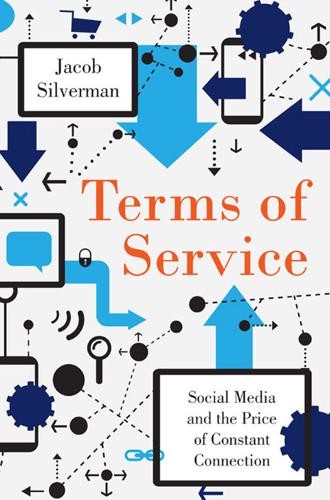
Terms of Service: Social Media and the Price of Constant Connection
by
Jacob Silverman
Published 17 Mar 2015
A June 2012 story from the Economist recounts how Rigi Capital Partners, a Swiss insurance company, decided not to purchase the life insurance policy of an elderly woman with dementia. The reason? Her Facebook profile “suggested she had a vibrant social life, not dementia.” Perhaps the insurance company employee who examined the woman’s profile was correct. Or perhaps, as Jaron Lanier proposed, “information underrepresents reality,” and the Facebook profile was inaccurately interpreted. Who knows if the woman controls her own profile? Maybe she does tinker with her own Facebook page, but her grandson tagged her in some photos and checked her in at some events. Regardless of other possible explanations, the incident emphasizes the foolishness of trusting social-media data as a definitive depiction of someone’s life and of using that data to inform important decisions.
…
The dreamers “haven’t even reached the level of hypocrisy,” as the avuncular science fiction author Bruce Sterling told the assembled faithful at SXSW Interactive, the industry’s premier festival, in March 2013. “You’re stuck at the level of childish naïveté.” Adopting a populist stance, some commentators, such as Jaron Lanier, say that to escape the tyranny of a data-driven society, we must expect to be paid for our data. We should put a price on it. Never mind that this is to give into the logic of Big Data. Rather than trying to dismantle or reform the system—one which, as Lanier acknowledges in his book Who Owns the Future?
…
May 26, 2013. bits.blogs.nytimes.com/2013/05/26/disruptions-at-odds-over-privacy-challenges-of-wearable-computing. 138 “point-of-view lifestyle” device: Panasonic. A100: Point-of-View Lifestyle Wearable Full HD Camcorder. shop.panasonic.com/shop/model/HX-A100D. 138 “a vibrant social life”: Economist. “Very Personal Finance.” June 2, 2012. economist.com/node/21556263. 138 “information underrepresents reality”: Jaron Lanier. You Are Not a Gadget. New York: Random House, 2010, 69. 139 data-mining is ineffective: Ryan Singel. “Data-Mining for Terrorists Not ‘Feasible,’ DHS-Funded Study Finds.” Wired. Oct. 7, 2008. wired.com/2008/10/data-mining-for. 142 “hid from the telescreens”: Walter Kirn. “Little Brother Is Watching.”

If Then: How Simulmatics Corporation Invented the Future
by
Jill Lepore
Published 14 Sep 2020
John McPhee, “Link with Local History Lost,” Alamogordo [NM] Daily News, April 10, 1998. Wendy McPhee, interview with the author, July 16, 2018. Epilogue: Meta Data Jaron Lanier, “Jaron Lanier Fixes the Internet,” NYT, September 23, 2019. NM to AS, March 25, 1959, Stevenson Papers, Box 38, Folder 7. “The People Machine,” Newsweek, April 2, 1962. Lanier states this as an axiom: “Behaviorism is an inadequate way to think about society.” Jaron Lanier, Ten Arguments for Deleting Your Social Media Accounts Right Now (New York: Henry Holt, 2018), 19. Behavioral scientists, while admitting that there are no proven laws of human behavior, nevertheless often propose them.
…
Simulmatics failed, but not before its scientists built a very early version of the machine in which humanity would in the early twenty-first century find itself trapped, a machine that applies the science of psychological warfare to the affairs of ordinary life, a machine that manipulates opinion, exploits attention, commodifies information, divides voters, fractures communities, alienates individuals, and undermines democracy. “What does it take for people to recognize a dystopia?” the virtual reality pioneer Jaron Lanier asked in 2019, anguished, heartbroken.1 Long before the age of quarantine and social distancing, Simulmatics helped atomize the world. It had begun sixty years before, with the best of intentions. In 1959, hoping to build a better America, Simulmatics pioneered the use of computer-run simulation, pattern detection and prediction in American political campaigning, segmenting the electorate into voter types and issues into clusters in order to advise candidates about strategies for voter-targeted issues.
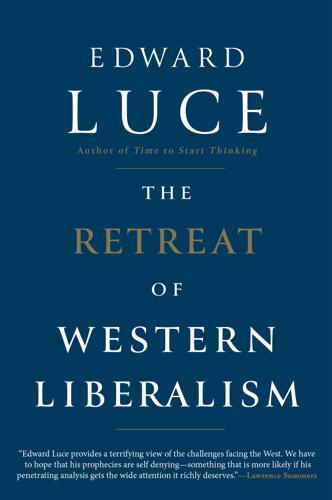
The Retreat of Western Liberalism
by
Edward Luce
Published 20 Apr 2017
Reporters are losing jobs to algorithmic content farms that write news reports based on keywords that push them to the top of the Google search page. Advertising representatives are being made redundant by mobile social media advertisements that know exactly where you are and will match their pitch to your location. Facebook is now able to use your friends’ faces in ads aimed specifically at you. Jaron Lanier, a pioneer of virtual technology, yet one of the most grounded voices in Silicon Valley, calls the big firms that are cornering the consumer data market the ‘siren servers’ – after the creatures of Greek myth.68 The rest of us are sailors being lured onto the rocks. In exchange for access to social media, we surrender more and more of our personal data for free.
…
, Financial Times, 19 February 2016, <https://www.ft.com/content/80c3164e-d644-11e5-8887-98e7feb46f27>. 63 Gordon, The Rise and Fall of American Growth, p. 13. 64 James Manyika, Susan Lund, Jacques Bughin, Kelsey Robinson, Jan Mischke and Deepa Mahajan, ‘Independent Work: Choice, necessity and the gig economy’, McKinsey Global Institute report, October 2016, <http://www.mckinsey.com/global-themes/employment-and-growth/independent-work-choice-necessity-and-the-gig-economy>. 65 Ibid. 66 Ibid. 67 Ibid. 68 Jaron Lanier, Who Owns the Future? (Simon & Schuster, New York, 2013 (ebook)). 69 Edward Luce, ‘Obama must face the rise of the robots’, Financial Times, 3 February 2013, <https://www.ft.com/content/f6f19228-6bbc-11e2-a17d-00144feab49a>. 70 Lee Drutman and Yascha Mounk, ‘When the Robots Rise’, National Interest, 144 (July–August 2016), <http://nationalinterest.org/feature/when-the-robots-rise-16830>. 71 Espen Barth Eide, ‘2015: the year geopolitics bites back?’

Rise of the Robots: Technology and the Threat of a Jobless Future
by
Martin Ford
Published 4 May 2015
Historical data on General Motors can be found at http://money.cnn.com/magazines/fortune/fortune500_archive/snapshots/1979/563.html. GM earned $3.5 billion in 1979, which is equivalent to about $11 billion in 2012 dollars. 11. Scott Timberg, “Jaron Lanier: The Internet Destroyed the Middle Class,” Salon.com, May 12, 2013, http://www.salon.com/2013/05/12/jaron_lanier_the_internet_destroyed_the_middle_class/. 12. This video can be found at https://www.youtube.com/watch?v=wb2cI_gJUok, or search YouTube for “Man vs. Machine: Will Human Workers Become Obsolete?” Kurzweil’s remarks can be found at about 05:40. 13.
…
As more people lose the dependable income stream that anchors them into the middle class, they are likely to increasingly turn to these long-tail opportunities in the digital economy. A lucky few will provide the anecdotal success stories we will hear about, but the vast majority will struggle to maintain anything approaching a middle-class lifestyle. As techno-visionary Jaron Lanier has pointed out, a great many people are likely to be forced into the type of informal economy that is found in third-world nations.11 Young adults who find the freedom of the informal economy alluring will quickly discover its drawbacks when they begin to think in terms of maintaining a home, raising children, or planning for retirement.
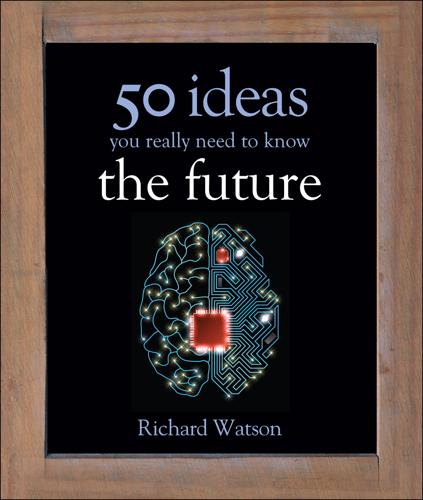
50 Future Ideas You Really Need to Know
by
Richard Watson
Published 5 Nov 2013
Hence, a more general shift away from individual ownership to shared access, which, coincidently, links with a shift from products in general to the more ethereal world of experiences. “If the books in the cloud are accessed via user interfaces that encourage mashups of fragments that obscure the context and authorship of each fragment, there will be only one book.” Jaron Lanier, computer scientist and author The trend even extends to human relationships, which are increasingly facilitated, consummated, mediated and terminated in a virtual rather than a physical manner. For example, voice-based communication (i.e. phone calls to other people), is declining in many countries, while text-based communications are exploding.
…
It’s YOUtube and MYspace and everyone is famous for 15 minutes and to 15 people. At its worst, this is postmodernism and subjectivism gone mad. It’s a world where idiocy, shallowness and superficiality reign supreme, because everyone’s life, skill or opinion is as good as everyone else’s. Digital Maoism? Jaron Lanier, sometimes referred to as the creator of the term “virtual reality,” believes that crowd intelligence is something of a fallacy analogous with the belief of hyperlibertarians that the free market is all-wise and ultimately benefits all. To quote Lanier: “The beauty of the Internet is that it connects people.
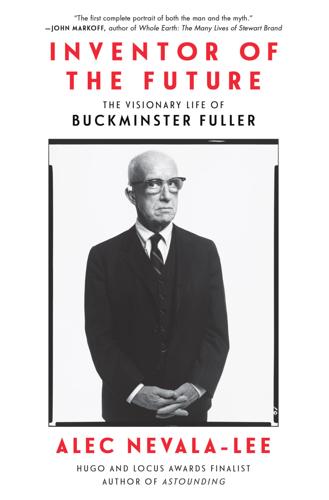
Inventor of the Future: The Visionary Life of Buckminster Fuller
by
Alec Nevala-Lee
Published 1 Aug 2022
When Manock opened his consulting business after college, he printed business cards that said “Manock, Comprehensive Design” (Manock, email to author, January 11, 2021). “He was kind of an intuitive”: Alan Kay, interviewed by author, December 3, 2019. “My dad was more”: Jennifer Kahn, “The Visionary,” New Yorker, July 11, 2011, 53. “very much in reference to Fuller”: Jaron Lanier, interviewed by author, March 12, 2019. “The way everything is triangulated”: Ibid. “enchanted by Buckminster Fuller”: Jaron Lanier, Dawn of the New Everything: Encounters with Reality and Virtual Reality (New York: Henry Holt, 2017), 86. “For those who have context”: Lanier, author interview. Andy Hertzfeld of Apple recalled RBF as a more marginal presence: “I was vaguely familiar with Fuller’s work and have a hazy recollection of folks talking about him at Apple, but I don’t remember anything specific” (email to author, March 23, 2019).
…
Manock’s team later took a leading role in developing the upright case of the Macintosh, but on the inside, its operating system resembled the graphical user interface created at Xerox PARC by Alan Kay, who also acknowledged Fuller as an influence, saying, “He was kind of an intuitive systems guy, at a time when nobody really thought in terms of systems.” Another major player was Jaron Lanier, whose father had met Fuller through friends in architecture. Lanier was raised on Fuller’s books, and after his mother died in a car accident, he and his father relocated to an acre of desert in New Mexico. Although Lanier was only eleven years old, he was given permission to design their house, which he decided to base on a dome.
…
It held staff meditation sessions in a dome and announced a “future cities initiative” by the Israeli designer and artist Dror Benshetrit, who consulted on redeveloping the Montreal Biosphere, but a fumbled public offering resulted in the ouster of Neumann, who had warned his employees, “The universe does not allow waste.” As Jaron Lanier noted, during his lifetime, Fuller had been famous “maybe in the way of a figure like Elon Musk.” Fuller and Musk both promoted themselves as outsiders who disrupted established fields—including the automotive industry—and presented a dream of innovation to counter the inability of existing systems to effect change.
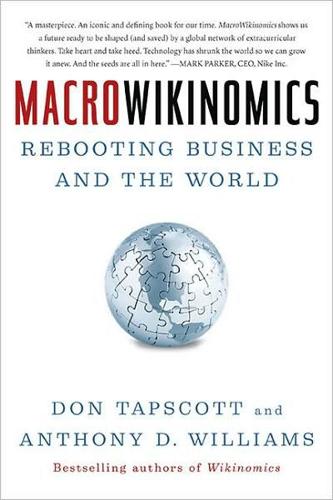
MacroWikinomics: Rebooting Business and the World
by
Don Tapscott
and
Anthony D. Williams
Published 28 Sep 2010
Jeanine Plant, “Top 5 Issues That Motivate Young Voters Today,” WireTap (October 23, 2006). 7. Jackie Crosby, “Entrepreneur turned Geek Squad into a geek army,” Los Angeles Times (April 1, 2010). Chapter 19 1. See YouTube video: “Starlings on Otmoor” (February 21, 2007). 2. Dan Reed, “The 2010 Time 100: Jaron Lanier,” Time (April 29, 2010). 3. Jaron Lanier, You Are Not a Gadget: A Manifesto (Knopf Doubleday, 2010). 4. Joshua Topolsky, “Live from Apple’s iPhone OS 4 event!”, Engadget (April 8, 2010). 5. Jean Tate, “Click on Hubble: Galaxy Zoo Now Includes HST Images,” Universe Today (April 22, 2010). 6. David Morgan, “Nearly 20 percent of U.S. workers underemployed,” Thomson Reuters (February 23, 2010). 7.
…
They focus their internal staff on value integration and orchestration and treat the world as their R&D department. All of this adds up to a new kind of collaborative enterprise—one that is constantly shaping and reshaping clusters of knowledge and capability to compete on a global basis. To be clear, collaborative innovation is not about “everybody doing everything,” as critics such as Jaron Lanier have suggested. Nor is it a wholesale replacement for cutting-edge R&D or the art of a good marketing campaign. It’s not about putting product duds in the public domain and hoping that someone will turn them into gold. Nor is it about enticing smart and talented people to give away their valuable ideas for free.
…
But in tackling each of these “dark side” issues, it is also clear that solutions for each are at hand and, if anything, macrowikinomics provides the right framework for deriving fresh thinking. The Hive Mind, Collective Consciousness, and Collectivism There are many critics of the digital age, but one of the most articulate is Jaron Lanier, who, unlike many pundits, has a lot of street cred. Being a forerunner in virtual reality, he can’t be dismissed as a Luddite. In fact, in 2010 Time magazine chose him as one of the one hundred most influential people in the world.2 His much-awaited first book You’re Not a Gadget is certainly the most erudite discussion of the downside of the digital age to date.

More Everything Forever: AI Overlords, Space Empires, and Silicon Valley's Crusade to Control the Fate of Humanity
by
Adam Becker
Published 14 Jun 2025
Nonetheless, the idea is astonishingly common in Silicon Valley and across the entire tech industry. Kurzweil isn’t some kind of marginal figure. He is a director of engineering at Google, and his books on the Singularity have been bestsellers. “The Singularity is a new religion—and a particularly kooky one at that,” said computer scientist and artist Jaron Lanier. “The Singularity is the coming of the Messiah, heaven on Earth, the Armageddon, the end of times. And fanatics always think that the end of time comes in their own lifetime.”38 This religion is predicated on growth. And the Singularity and longtermism are far from its only manifestations. Rhetoric about the necessity of limitless growth to save the world is commonplace among some of the most prominent tech CEOs.
…
Singularity University, where “technology experts and entrepreneurs with a passion for solving humanity’s grand challenges” can “exchange ideas and facilitate the use of rapidly developing technologies,” was cofounded by Kurzweil in 2008 with funding from Google, Autodesk, and other Silicon Valley firms.60 And in 2012, Kurzweil took up a job at Google as a director of engineering, upon the personal invitation of Google cofounder and then CEO Larry Page.61 “These are ideas with tremendous currency in Silicon Valley; these are guiding principles, not just amusements, for many of the most influential technologists,” explains the computer scientist Jaron Lanier.62 Many leaders in tech—including Bill Gates and Elon Musk—think highly of Kurzweil and his ideas. “Ray Kurzweil’s Moore’s Law abstraction is the most important thing ever graphed,” says billionaire and tech venture capitalist Steve Jurvetson. “Its continuity—over his lifetime of writing—is the greatest take-away for the future of humanity, and the future of intelligence.”63 The idea of the Singularity has even made its way into the halls of academia, where the concept has received some attention from philosophers.
…
The dedication to Campbell is at the top of the page. 58 Asimov, I, Robot, 271 (emphasis his). 59 Kurzweil, Singularity Is Near, 14. 60 NASA, “NASA Ames Becomes Home to Newly Launched Singularity University,” news release, February 3, 2009, www.nasa.gov/news-release/nasa-ames-becomes-home-to-newly-launched-singularity-university/; Nokia Research Center, “Nokia Supports Singularity University as Fifth Corporate Founder,” news release, archived January 27, 2013, at the Wayback Machine, https://web.archive.org/web/20130127224419/http://research.nokia.com/news/11357. 61 David J. Hill, “Exclusive Interview: Ray Kurzweil Discusses His First Two Months at Google,” Singularity Hub, March 19, 2013, https://singularityhub.com/2013/03/19/exclusive-interview-ray-kurzweil-discusses-his-first-two-months-at-google/. 62 Jaron Lanier, “The First Church of Robotics,” New York Times, August 9, 2010, www.nytimes.com/2010/08/09/opinion/09lanier.html. 63 “The Singularity Is Nearer: When We Merge with AI,” Amazon, accessed June 13, 2024, www.amazon.com/Singularity-Nearer-Ray-Kurzweil-ebook/dp/B08Y6FYJVY. 64 Dylan Matthews, “This Oxford Professor Thinks Artificial Intelligence Will Destroy Us All,” Vox, August 19, 2014, www.vox.com/2014/8/19/6031367/oxford-nick-bostrom-artificial-intelligence-superintelligence. 65 David J.

Thinking Machines: The Inside Story of Artificial Intelligence and Our Race to Build the Future
by
Luke Dormehl
Published 10 Aug 2016
Whether it’s uploading photos to Facebook or typing in a block of twisted letters to prove our humanity to a CAPTCHA, we’re all helping to train the robot successors who are after our jobs. At some point in the near future, a serious conversation needs to be had about the value we place on data. If, as is often said, data is the oil of the digital economy, then we need to place a proper valuation on it. Virtual reality pioneer Jaron Lanier has suggested one way to do this would be a universal micropayment system. Lanier has given a few illustrations of how this might work. Imagine, he suggests, that you sign up for an online dating service where the data you provide to refine your own romantic matches also helps the company perfect its algorithms for attracting other users.
…
Implemented correctly, there’s no reason this shouldn’t aid companies as well as individuals. The real value in many twenty-first century businesses is the analysable data they hold. If users were financially compensated for feeding data into these businesses, it would add an extra incentive for using them. If the kind of universal micropayments Jaron Lanier describes were applied to every piece of data we generate, it is not unthinkable that Mechanical Turkers could go from making £1.00 per hour to earning an amount closer to the UK minimum wage of £6.70, or even more. This would be a key step in establishing a digital framework in which AI systems get smarter, but humans are able to share in the wealth created.
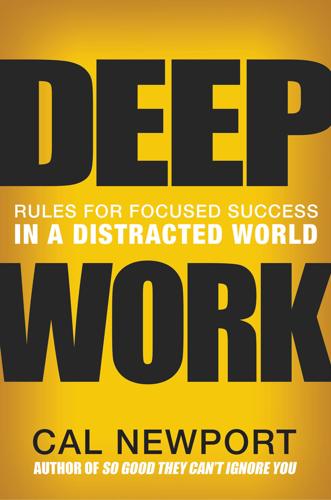
Deep Work: Rules for Focused Success in a Distracted World
by
Cal Newport
Published 5 Jan 2016
Given this existing body of evidence, I will not spend more time in this book trying to establish this point. We can, I hope, stipulate that network tools negatively impact deep work. I’ll also sidestep any grand arguments about the long-term societal consequence of this shift, as such arguments tend to open impassible rifts. On one side of the debate are techno-skeptics like Jaron Lanier and John Freeman, who suspect that many of these tools, at least in their current state, damage society, while on the other side techno-optimists like Clive Thompson argue that they’re changing society, for sure, but in ways that’ll make us better off. Google, for example, might reduce our memory, but we no longer need good memories, as in the moment we can now search for anything we need to know.
…
The American Economic Review 71.5 (December 1981): 845–858. “Hearing a succession of mediocre singers does not add up to a single outstanding performance”: Ibid., 846. The Instagram example and its significance for labor disparities were first brought to my attention by the writing/speaking of Jaron Lanier. How to Become a Winner in the New Economy Details on Nate Silver’s tools: • Hickey, Walter. “How to Become Nate Silver in 9 Simple Steps.” Business Insider, November 14, 2012. http://www.businessinsider.com/how-nate-silver-and-fivethityeight-works-2012-11. • Silver, Nate. “IAmA Blogger for FiveThirtyEight at The New York Times.
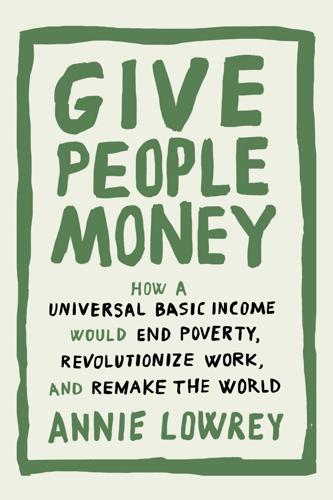
Give People Money
by
Annie Lowrey
Published 10 Jul 2018
Robots are designing and building these new self-driving cars, not just driving them. That same dynamic is writ large around the country. Brick-and-mortar retailing giant Walmart has 1.5 million employees in the United States, while Web retailing giant Amazon had a third as many as of the third quarter of 2017. As famously noted by the futurist Jaron Lanier, at its peak, Kodak employed about 140,000 people; when Facebook acquired it, Instagram employed just 13. The scarier prospect is that more and more jobs are falling to the tide of tech-driven obsolescence. Studies have found that almost half of American jobs are vulnerable to automation, and the rest of the world might want to start worrying too.
…
Walmart has 1.5 million employees: Walmart, “Company Facts,” https://corporate.walmart.com/newsroom/company-facts, accessed Nov. 7, 2017. Amazon had a third: Amazon, Third Quarter Earnings Report, Oct. 26, 2017, http://phx.corporate-ir.net/phoenix.zhtml?c=97664&p=irol-reportsother. Instagram employed just 13: Jaron Lanier, Who Owns the Future? (New York: Simon & Schuster, 2014), 2. “Premature deindustrialization”: Dani Rodrik, “Premature Deindustrialization” (NBER Working Paper no. 20935, Feb. 2015). “East Asian growth model”: Mike Kubzansky, telephone interview by author, Feb. 10, 2017. automated chatbots: Mike Lewis, Denis Yarats, Yann N.
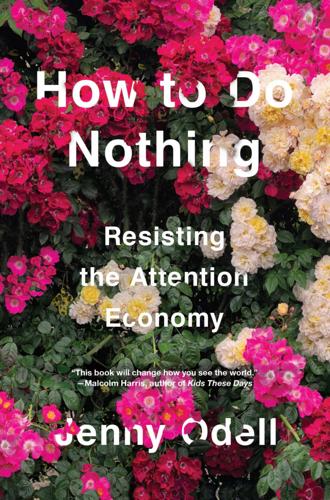
How to Do Nothing
by
Jenny Odell
Published 8 Apr 2019
In that chapter I begin to identify some of my most serious grievances with the attention economy, namely its reliance on fear and anxiety, and its concomitant logic that “disruption” is more productive than the work of maintenance—of keeping ourselves and others alive and well. Written in the midst of an online environment in which I could no longer make sense of anything, the essay was a plea on behalf of the spatially and temporally embedded human animal; like the technology writer Jaron Lanier, I sought to “double down on being human.” One reaction to all of this is to head for the hills—permanently. In the second chapter, I look at a few different people and groups who took this approach. The countercultural communes of the 1960s in particular have much to teach us about the challenges inherent in trying to extricate oneself completely from the fabric of a capitalist reality, as well as what was sometimes an ill-fated attempt to escape politics altogether.
…
Option 1 (offending an unintended audience) is what happens with those whose old tweets are dug up; Option 2 (“bland enough to offend no one”) is the professional social media star, a person reverse-engineered from a formula of what is most palatable to everyone all the time. Taken to its logical conclusion, Option 2 would eventually create a race to the mediocre bottom that has been repeatedly decried by cultural critics like Jaron Lanier. The surprise homecoming party is an example of the useful architectural metaphor that Meyrowitz employs in No Sense of Place: it’s as if all of the walls around different social environments have come down. Unfortunately, those rooms and walls were precisely what provided the spatial context for what was said in them, since they summoned a distinct audience out of the anonymous masses by only letting some people in.

Free Speech: Ten Principles for a Connected World
by
Timothy Garton Ash
Published 23 May 2016
They use it not to oppress you politically but to sell you to advertisers as a potential consumer. Facebook, for example, shares your data with a company called Datalogix to establish what percentage of those who view an ad actually go on to buy a product from that advertiser.142 In a bracing book called You Are Not a Gadget, the virtual reality pioneer turned cybersceptic Jaron Lanier describes Google and Facebook as ‘spying/advertising empires’.143 These information businesses claim the data and results are all anonymised, but somewhere some machine and therefore potentially some person knows it is you. Hence the disconcerting experience that, minutes after searching for, buying online or simply emailing about, say, sandals, advertisements for sandals start popping up on our screens.
…
(A similar complaint was made after the spread of printing in sixteenth-century Europe.) Nicholas Carr and Andrew Keen deplore the online ‘cult of the amateur’, which inordinately privileges mass participation over authority, openness over expertise, Wikipedia over Britannica.91 And the former, they argue, is eroding the latter. Jaron Lanier writes caustically of colleagues who believe that ‘a million, or perhaps a billion, fragmentary insults will eventually yield wisdom’.92 As we are tempted into what Nicholas Carr calls ‘the shallows’ of the online world, so we might all succumb to attention deficit disorder. ‘Homo Zappiens’ is the nice coinage of two Dutch scholars for the generations that have grown up since the 1990s ‘zapping’ between multiple channels and devices.93 Just as social intercourse may be diminished by people’s endless darts to tap or check something on their äppäräti, so the quest for knowledge is subverted by multiple distractions.
…
‘We build systems that spy on people in exchange for services. Corporations call it marketing’.1 He compares us to tenant farmers on the great estates of Google or Facebook. The rent we pay is our personal data, which they use for targeted advertising.2 The more the technical capacity to collect ‘big data’ grows, the more what Jaron Lanier calls ‘spying/advertising empires’ will know about us and, in that elementary sense, the less privacy we will have. A lot then depends on the approach taken by these big cats. ‘Privacy is dead—get over it’: as with so many famous quotations, it seems that Scott McNealy, then chief executive of Sun Microsystems, did not say exactly this when asked about privacy at the end of the last century.

How to Speak Money: What the Money People Say--And What It Really Means
by
John Lanchester
Published 5 Oct 2014
Then you close the factory and move the manufacturing to China, where the quality control maybe isn’t as good but it costs a tenth as much to make, and because you still own the brand and control the distribution network, none of your customers will notice.” That is hollowing out: the process by which jobs disappear from an economy while external appearances remain largely the same. Whole sectors of the economy have been hollowed out by the Internet and by outsourcing abroad. There’s a very good description of it in Jaron Lanier’s book Who Owns the Future?: At the height of its power, the photography company Kodak employed more than 140,000 people and was worth $28 billion. They even invented the first digital camera. But today Kodak is bankrupt, and the new face of digital photography has become Instagram. When Instagram was sold to Facebook for a billion dollars in 2012, it employed only thirteen people.
…
From there, it is a short move towards the politics of economics, maybe beginning with Ha-Joon Chang’s 23 Things They Don’t Tell You about Capitalism, a highly effective account of the arguments and evidence against neoliberal free-market orthodoxies. A number of very good recent books look at the effect of these policies in terms of their impact at the top end of the income distribution, and the consequences of that inequality for everyone else: Chrystia Freedland’s Plutocrats, Robert Frank’s Richistan, Jaron Lanier’s Who Owns the Future?, and George Packer’s The Unwinding. Spring 2014 saw the publication of Thomas Piketty’s masterpiece Capital in the Twenty-First Century, an important, powerful, and densly argued study of the shift in the balance of power between capital and labor. There is a notable gap in the market here: there are attacks on the existing neoliberal order, but there doesn’t seem to be a powerful popular counternarrative.

The Digital Party: Political Organisation and Online Democracy
by
Paolo Gerbaudo
Published 19 Jul 2018
Third, in order to gather data, digital companies vastly rely on the free labour of their members and ‘user-generated content’, namely information that is produced not by paid staff, but by ordinary people as they interact on the platform. Theorists such as Italian cultural studies scholar Tiziana Terranova has thus spoken of internet users as ‘net slaves’147 whose free labour is exploited, while digital gurus such as Jaron Lanier have campaigned for digital companies to pay users in exchange for their data.148 Reliance on free labour goes a long way to explain how these companies, though titanic in market size, have very limited salaried staff. These structural features can be better understood when approaching the functional logic of digital companies and the disintermediation process which lies at their core.
…
Network effect describes the way in which a product becomes more valuable as more people use it, hence the alternate definition as demand-side economy of scale. See Albert-László Barabási and Réka Albert, ‘Emergence of scaling in random networks’. Science 286, no.5439 (1999): 509–512. 147. Tiziana Terranova, ‘Free labor: producing culture for the digital economy’, Social Text 18, no.2 (2000): 33–58. 148. Jaron Lanier, Who owns the future? (New York: Simon and Schuster, 2014). 149. Nick Srnicek, Platform capitalism (New York: John Wiley & Sons, 2017). 150. John Hagel and Marc Singer have coined the term infomediaries to point to the presence of new processes of intermediation or ‘re-intermediation’. John Hagel and Marc Singer, Net worth: shaping markets when customers make the rules (Cambridge, MA: Harvard Business School Press, 1999). 151.

Data and Goliath: The Hidden Battles to Collect Your Data and Control Your World
by
Bruce Schneier
Published 2 Mar 2015
Pinterest pages have public: Serge Malenkovich (25 Jan 2013), “How to protect your privacy on Pinterest,” Kaspersky Lab Daily, http://blog.kaspersky.com/protect-your-privacy-on-pinterest. In 2014, a presidential review group: US Executive Office of the President (1 May 2014), “Big data: Seizing opportunities, preserving values,” http://www.whitehouse.gov/sites/default/files/docs/big_data_privacy_report_may_1_2014.pdf. Jaron Lanier proposes a scheme: Jaron Lanier (2013), Who Owns the Future? Simon and Schuster, http://books.google.com/books?id=w_LobtmRYmQC. US Consumer Privacy Bill of Rights: US Executive Office of the President (Feb 2012), “Consumer data privacy in a networked world: A framework for protecting privacy and promoting innovation in the global digital economy,” http://www.whitehouse.gov/sites/default/files/privacy-final.pdf.
…
Standardizing this is important. In 2012, the White House released a “Consumer Privacy Bill of Rights.” In 2014, a presidential review group on big data and privacy recommended that this bill of rights be the basis for legislation. I agree. It’s easy to go too far with this concept. Computer scientist and technology critic Jaron Lanier proposes a scheme by which anyone who uses our data, whether it be a search engine using it to serve us ads or a mapping application using it to determine real-time road congestion, automatically pays us a royalty. Of course, it would be a micropayment, probably even a nanopayment, but over time it might add up to a few dollars.
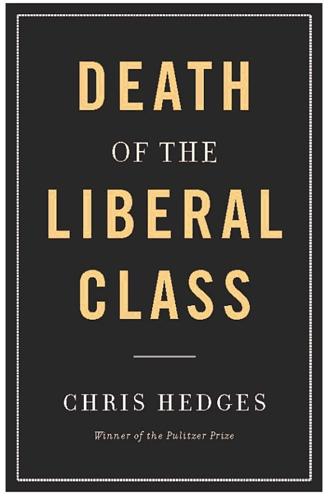
Death of the Liberal Class
by
Chris Hedges
Published 14 May 2010
Racism toward Muslims is as evil as anti-Semitism, but try to express this simple truth on a partisan Palestinian or Israeli Web site. These kinds of truths, that acknowledge human complexity, are what the liberal class once sought to protect. Social scientists have a name for this retreat into ideologically pure and intolerant ghettos: cyberbalkanization. I spoke with Jaron Lanier, the father of virtual-reality technology. He warns of this frightening new collectivism in You Are Not a Gadget. He notes that the habits fostered by the Internet have further reconfigured how we relate to one another. He writes that the philosophy behind terms of art such as Web 2.0, open culture, free software, and the long tail have become enablers of this new collectivism.
…
Lifton, and Tom Artin; James Cone, one of our nation’s most important theologians; Ray Close, the Reverend Michael Granzen, the Reverend Karen Hernandez, Joe and Heidi Hough, Mark Kurlansky, Margaret Maurer, Irene Brown, Sam Hynes, the great graphic novelist Joe Sacco, Dennis Kucinich, Ernest Logan Bell, Sonali Kolhatkar, Francine Prose, Russell Banks, Celia and Bernard Chazelle, Esther Kaplan, James Ridgeway; the Reverend Jeremiah Wright, who became a friend when we received honorary doctorates together at Starr King School for the Ministry; Paul Woodruff; Sheldon Wolin, our greatest living political philosopher; “Rocky” Anderson; Tom Cornell; Noam Chomsky, who sets the intellectual gold standard for the rest of us; Father Michael Doyle and Father Daniel Berrigan, two Catholic priests who remind us that the church can once in a while produce prophets; Pam Diamond, James Kane, the Reverend Davidson Loehr, and Karen Malpede; Stuart Ewen, whose books proved vital to my understanding of the rise of the propaganda state; Norman Finkelstein, whose moral courage I admire; John Ralston Saul, a philosopher who gave me a vocabulary to understand much of what is happening in contemporary culture; the uncompromising Cindy Sheehan; Sydney Schanberg, Malalai Joya, Michael Moore, Jeremy Scahill, Sam Smith, Rob Shatterly, Alan Magee, Doug McGill, Jaron Lanier, Mae Sakharov, Kasia Anderson, and Charlie and Catherine Williams, as well as Dorothea von Moltke and Cliff Simms, whom we are fortunate to have as friends and owners of one of the nation’s best independent bookstores. Lisa Bankoff of International Creative Management, whom I have been with since I published my first book nearly a decade ago, is a talented, smart, and gracious agent who negotiated contracts and manages an end of this industry that still mystifies me.

Squeezed: Why Our Families Can't Afford America
by
Alissa Quart
Published 25 Jun 2018
MIT’s Julie Shah and her coauthors: Adam Conner-Simons, “Robot Helps Nurses Schedule Tasks on Labor Floor,” MIT News, July 13, 2016. http://news.mit.edu/2016/robot-helps-nurses-schedule-tasks-on-labor-floor-0713. their mechanical rivalry: The tech intellectual Jaron Lanier calls the winners of the rise of the robots the “siren servers.” He dubs this tech ruling class—those who produce and finance these machines—“narcissists; blind to where value comes from, including the web of global interdependence that is at the core of their own value.” (Those who reap the most from this efficiency are, by and large, rich technologists.) Jaron Lanier, Who Owns the Future? (New York: Simon & Schuster, 2013.) up from $691 billion in 2012: Deborah Bach, “Study Reveals Surprising Truths about Caregivers,” UWNews, June 16, 2015, https://www.washington.edu/news/2015/06/16/study-reveals-surprising-truths-about-caregivers/.

Uberland: How Algorithms Are Rewriting the Rules of Work
by
Alex Rosenblat
Published 22 Oct 2018
Because Uber’s practices are representative of more common dynamics of how we use technology today, the company’s actions have pulled the veil off of the way practices that bring us so many valuable services can also take advantage of us. There are rich privacy debates in academia on whether companies should be able to resell the data they collect about us, a practice that can take advantage of users.49 Some thinkers, like computer scientist and philosophy writer Jaron Lanier, envision a future where people are paid for the data they generate online.50 As digital labor scholar and computer scientist Mary L. Gray observes publicly on Twitter, however, “We have no evidence that people want to commodify their online lives. Does cash back make it OK for companies to resell my family pics or shopping history, as they choose?
…
Plays with Fire,” New York Times, April 23, 2017, www.nytimes.com/2017/04/23/technology/travis-kalanick-pushes-uber-and-himself-to-the-precipice.html. 49. See, e.g., Julie E. Cohen, Configuring the Networked Self: Law, Code, and Play of Everyday Practice (New Haven, CT: Yale University Press, 2012); Evan Selinger, Jules Polonetsky, and Omer Tene, eds., The Cambridge Handbook of Consumer Privacy (New York: Cambridge University Press, 2018). 50. Jaron Lanier, Who Owns the Future? (New York: Simon and Schuster, 2013). 51. Mary L. Gray (@marylgray), Twitter, December 29, 2017, https://twitter.com/marylgray/status/946904792118460416. 52. Portions of this section of the chapter originally appeared as an article I wrote for Fast Company. See Alex Rosenblat, “The Network Uber Drivers Built,” Fast Company, January 9, 2018, www.fastcompany.com/40501439/the-network-uber-drivers-built.
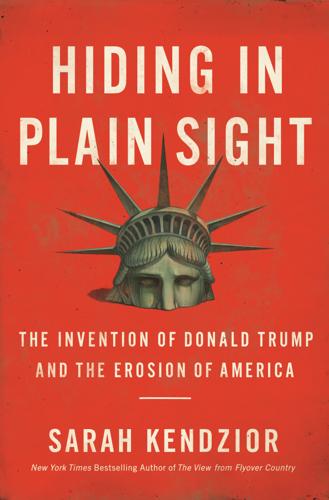
Hiding in Plain Sight: The Invention of Donald Trump and the Erosion of America
by
Sarah Kendzior
Published 6 Apr 2020
American exceptionalism was always an illusion, and Americans had long been prone to paranoid conspiracies, but even I was surprised by the quickness with which US political culture came to mirror that of surveillance states. I had not anticipated how quickly the cyber-utopianism embraced by internet corporations would turn into nihilist abdication of the public good. Among the few who saw the threat clearly was computer scientist Jaron Lanier, who, in 2010, warned the public of a new danger: WikiLeaks. At the time, free speech advocates were hailing WikiLeaks, and its founder, Julian Assange, as defenders of government transparency. Their lionization of the leaker organization was largely due to frustration with the criminal impunity of the Bush administration.
…
Peter Pomerantzev, Nothing Is True and Everything Is Possible: The Surreal Heart of the New Russia (Philadelphia: PublicAffairs, 2015). 8. Sarah Kendzior, “The Strange Saga of a Made-Up Activist and Her Life—and Death—as a Hoax,” The Atlantic, December 20, 2011, https://www.theatlantic.com/international/archive/2011/12/the-strange-saga-of-a-made-up-activist-and-her-life-and-death-as-a-hoax/250203/. 9. Jaron Lanier, “The Hazards of Nerd Supremacy: The Case of WikiLeaks,” The Atlantic, December 20, 2010, https://www.theatlantic.com/technology/archive/2010/12/the-hazards-of-nerd-supremacy-the-case-of-WikiLeaks/68217/. 10. Malcolm Nance, The Plot to Destroy Democracy: How Putin and his Spies Are Undermining America and Dismantling the West (New York: Hachette Books, 2018). 11.

The End of Nice: How to Be Human in a World Run by Robots (Kindle Single)
by
Richard Newton
Published 11 Apr 2015
Like it or not, the problem is that there’s so much information available that your news feeds and your searches need some form of management. But any form of curation is a form of censorship. So who is doing this and why? Well it’s the “siren servers”, of course. They want to keep you on their websites and using their services by making you happy. The writer Jaron Lanier coined the phrase “Siren Servers” to describe the giant social networks and search engines such as Facebook, Twitter and Google. Like the sirens of legends sung sweet songs to lure sailors to crash on the rocky shore of their island, so Lanier thinks we must be wary of the attractions of the siren servers.

WTF?: What's the Future and Why It's Up to Us
by
Tim O'Reilly
Published 9 Oct 2017
shared=Xmjr9tlVlXs. 90 watch more video on YouTube: Andy Smith, “13–24 Year Olds Are Watching More YouTube than TV,” Tubular Insights, March 11, 2015, http://tubu larinsights.com/13-24-watching-more-youtube-than-tv/. 90 world’s most valuable retailer: Shannon Pettypiece, “Amazon Passes Wal-Mart as Biggest Retailer by Market Value,” Bloomberg Technology, July 24, 2015, https://www.bloomberg.com/news/articles/2015-07-23/amazon-surpasses-wal-mart-as-biggest-retailer-by-market-value. 91 “publish, then filter”: Clay Shirky, Here Comes Everybody (New York: Penguin, 2008), 98. 93 6,300 companies operating 171,000 taxicabs: 2014 TLPA Taxicab Fact Book, available from https://www.tlpa.org/TLPA-Bookstore. 94 total number of tellers: James Pethokoukis, “What the Story of ATMs and Bank Tellers Reveals About the ‘Rise of the Robots’ and Jobs,” AEI Ideas, June 6, 2016, http://www.aei.org/publication/what-atms-bank-tellers-rise-robots-and-jobs/. 95 making house calls to deliver flu shots: “Uber Health,” Uber, November 21, 2015, https://newsroom.uber.com/uberhealth/. 95 bringing elderly patients to doctors’ appointments: Zhai Yun Tan, “Hospitals Are Partnering with Uber to Get Patients to Checkups,” Atlantic, August 21, 2015, https://www.theatlantic.com/health/archive/2016/08/hospitals-are-partnering-with-uber-to-get-people-to-checkups/495476/. 95 from having 1,400 robots in its warehouses to 45,000: Sara Kessler, “The Optimist’s Guide to the Robot Apocalypse,” Quartz, March 19, 2017, https://qz.com/904285/the-optimists-guide-to-the-robot-apocalypse/. 95 It added 110,000: Todd Bishop, “Amazon Soars to More than 341K Employees—Adding More than 110K People in a Single Year,” Geekwire, February 2, 2017, http://www.geekwire.com/2017/amazon-soars-340k-employees-adding-110k-people-single-year/. 96 the comparison between Kodak: Scott Timberg, “Jaron Lanier: The Internet Destroyed the Middle Class,” Salon, May 12, 2013, http://www.salon.com/2013/05/12/jaron_lanier_the _internet_destroyed_the_middle_class/. 97 5% of GDP in developed countries: “The Internet Economy in the G20,” BCG Perspectives, retrieved March 30, 2017, https://www.bcgperspectives.com/content/articles/media_entertainment_strategic _planning_4_2_trillion_opportunity _internet_economy_g20/?
…
Science fiction writer Kim Stanley Robinson captures this moment perfectly in his novel Green Mars, when one of the original settlers of Mars has a shock of insight: “He realized then that history is a wave that moves through time slightly faster than we do.” If we are honest with ourselves, each of us has many such moments, when we realize that the world has moved on and we are stuck in the past. It is this mental hiccup that leads to many a failure of insight. Famously, Jaron Lanier (and many others) have made the comparison between Kodak, which at its height had 140,000 employees, and Instagram, which had only 13 when it was sold to Facebook for $1 billion in 2012. It’s easy to overlay the afterimage of Kodak, and say, as Lanier did, that the jobs have gone away. Yet for Instagram to exist and thrive, every phone had to include a digital camera and to be connected to a communications network, and that network had to be pervasive and data centers had to provide hosting services that allow tiny startups to serve tens of millions of users.

Reinventing Discovery: The New Era of Networked Science
by
Michael Nielsen
Published 2 Oct 2011
The sheer number of ideas, the complexity, and the contribution it has made to chess make it the most important game ever played.” p 19: James Surowiecki, The Wisdom of Crowds, [214]. p 20: Nicholas Carr’s book The Shallows [35] is an expanded version of an earlier article, “Is Google Making Us Stupid?” [34]. Related arguments have also been made by Jaron Lanier [117]. Chapter 3. Restructuring Expert Attention p 22: On ASSET India, InnoCentive, and Zacay Brown: [29, 222]. The text on InnoCentive is a much expanded and adapted version of text from my article [153]. p 23 Many of the successful solvers report, as Zacary Brown did, that the Challenges they solve closely match their skills and interests: see [116] for more on the characteristics of successful solvers.
…
The greatest game in the history of chess, parts I, II, and III. Available at http://www.cse.buffalo.edu/~regan/chess/K-W/KHR99i.html, 1999. [116] Karim R. Lakhani, Lars Bo Jeppesen, Peter A. Lohse, and Jill A. Panetta. The value of openness in scientific problem solving. Harvard Business School Working Paper 07–050, 2007. [117] Jaron Lanier. You Are Not a Gadget: A Manifesto. Toronto: Random House of Canada, 2010. [118] Hadley Leggett. Aug. 18, 1868: Helium discovered during total solar eclipse. Wired, August 18, 2009. http://www.wired.com/thisdayintech/2009/08/dayintech_0818/. [119] Jonah Lehrer. Making connections. Nature, 457:524–527, January 28, 2009
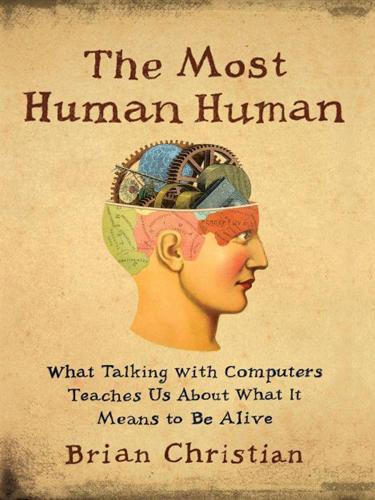
The Most Human Human: What Talking With Computers Teaches Us About What It Means to Be Alive
by
Brian Christian
Published 1 Mar 2011
Nietzsche spoke of this as “giving style to one’s character,” comparing people to works of art, which we often judge according to their “concinnity,” the way their parts fit together to make a whole: “In the end, when the work is finished, it becomes evident how the constraint of a single taste governed and formed everything large and small.” Computer culture critics like Jaron Lanier are skeptical, for instance, of decentralized projects like Wikipedia, arguing: The Sims, … the iPhone, the Pixar movies, and all the other beloved successes of digital culture … are personal expressions. True, they often involve large groups of collaborators, but there is always a central personal vision—a Will Wright, a Steve Jobs, or a Brad Bird conceiving the vision and directing a team of people earning salaries.
…
Skerrett, “Whimsical Software Wins a Prize for Humanness,” Popular Science, May 1992. 8 Rollo Carpenter, personal interview. 9 Rollo Carpenter, in “PopSci’s Future of Communication: Cleverbot,” Science Channel, October 6, 2009. 10 Bernard Reginster (lecture, Brown University, October 15, 2003). 11 “giving style to one’s character”: Friedrich Nietzsche, The Gay Science, translated by Walter Kaufman (New York: Vintage, 1974), sec. 290. 12 Jaron Lanier, You Are Not a Gadget: A Manifesto (New York: Knopf, 2010). 13 Eugene Demchenko and Vladimir Veselov, “Who Fools Whom?” in Parsing the Turing Test, edited by Robert Epstein et al. (New York: Springer, 2008). 14 Say Anything …, directed and written by Cameron Crowe (20th Century Fox, 1989). 15 Robert Lockhart, “Integrating Semantics and Empirical Language Data” (lecture at the Chatbots 3.0 conference, Philadelphia, March 27, 2010). 16 For more on Google Translate, the United Nations, and literature, see, e.g., David Bellos, “I, Translator,” New York Times, March 20, 2010; and Miguel Helft, “Google’s Computing Power Refines Translation Tool,” New York Times, March 8, 2010. 17 The Office, directed and written by Ricky Gervais and Stephen Merchant, BBC Two, 2001–3. 18 Hilary Stout, “The End of the Best Friend,” also titled “A Best Friend?
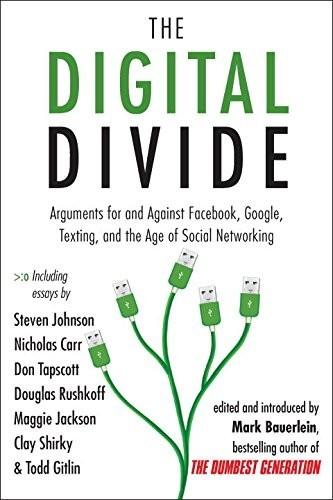
The Digital Divide: Arguments for and Against Facebook, Google, Texting, and the Age of Social Netwo Rking
by
Mark Bauerlein
Published 7 Sep 2011
It lasted for four weeks before he realized the person with whom he was conversing was a sixteen-year-old boy from Tokyo. It felt as though we were wiring up a global brain. Techno visionaries of the period, such as Ted Nelson—who coined the word hypertext —told us how the Internet could be used as a library for everything ever written. A musician named Jaron Lanier invented a bizarre interactive space he called “virtual reality” in which people would be able to, in his words, “really see what the other means.” The Internet was no longer a government research project. It was alive. Out of control and delightfully chaotic. What’s more, it promoted an agenda all its own.
…
This kind of coarseness and vulgarity is commonplace on social networking sites for a reason: it’s an easy way to set oneself apart. Pharaohs and kings once celebrated themselves by erecting towering statues or, like the emperor Augustus, placing their own visages on coins. But now, as the insightful technology observer Jaron Lanier has written, “Since there are only a few archetypes, ideals, or icons to strive for in comparison to the vastness of instances of everything online, quirks and idiosyncrasies stand out better than grandeur in this new domain. I imagine Augustus’ MySpace page would have pictured him picking his nose.”
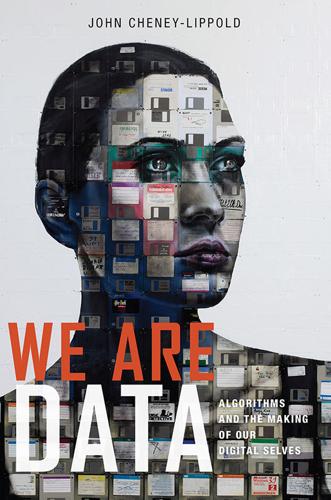
We Are Data: Algorithms and the Making of Our Digital Selves
by
John Cheney-Lippold
Published 1 May 2017
Tim Berners-Lee, inventor of the World Wide Web and leading voice against the commercialization of the Internet, believes our data belongs to you or me or whoever births it.11 In a way, our datafied lives are mere by-products of our mundane entrepreneurial spirits, a tradable commodity whose value and use we, and we alone, decide. One step further, computer scientist Jaron Lanier has argued for a reconceptualized economic infrastructure in which we not only own but ought to be paid for our data—that the profits reaped by the million-/billionaires in the tech world should trickle down to those who make them their millions/billions.12 Whether owned by a corporation or ourselves, our data (and by default our privacy) finds comfortable accommodations in the swell of capitalist exchange.
…
Ethan Zuckerman, “The Internet’s Original Sin,” Atlantic, August 14, 2014, www.theatlantic.com. 10. Christian Fuchs, “The Political Economy of Privacy on Facebook,” Television & New Media 13, no. 2 (2012): 139–159. 11. Alex Hern, “Sir Tim Berners-Lee Speaks Out on Data Ownership,” Guardian, October 8, 2014, www.theguardian.com. 12. Jaron Lanier, Who Owns the Future? (New York: Simon and Schuster, 2014). 13. Tiziana Terranova, Network Culture: Politics for the Information Age (London: Pluto, 2004); Trebor Scholz, ed., Digital Labor: The Internet as Playground and Factory (New York: Routledge, 2012). 14. Mario Tronti, “Capitale Sociale,” Telos 17 (1973): 98–121; David Palazzo, “The ‘Social Factory’ in Postwar Italian Radical Thought from Operaismo to Autonomia,” Ph.D. diss., Graduate Center, CUNY, 2014; Rosalind Gill and Andy Pratt, “In the Social Factory?

Enlightenment Now: The Case for Reason, Science, Humanism, and Progress
by
Steven Pinker
Published 13 Feb 2018
Disability-adjusted life years (DALYs) for 291 diseases and injuries in 21 regions, 1990–2010: A systematic analysis for the Global Burden of Disease study 2010. The Lancet, 380, 2197–2223. Musolino, J. 2015. The soul fallacy: What science shows we gain from letting go of our soul beliefs. Amherst, NY: Prometheus Books. Myhrvold, N. 2014. Commentary on Jaron Lanier’s “The myth of AI.” Edge. https://www.edge.org/conversation/jaron_lanier-the-myth-of-ai#25983. Naam, R. 2010. Top five reasons “the singularity” is a misnomer. Humanity+. http://hplusmagazine.com/2010/11/11/top-five-reasons-singularity-misnomer/. Naam, R. 2013. The infinite resource: The power of ideas on a finite planet.
…
Cellan-Jones, “Stephen Hawking Warns Artificial Intelligence Could End Mankind,” BBC News, Dec. 2, 2014, http://www.bbc.com/news/technology-30290540. 20. In a 2014 poll of the hundred most-cited AI researchers, just 8 percent feared that high-level AI posed the threat of “an existential catastrophe”: Müller & Bostrom 2014. AI experts who are publicly skeptical include Paul Allen (2011), Rodney Brooks (2015), Kevin Kelly (2017), Jaron Lanier (2014), Nathan Myhrvold (2014), Ramez Naam (2010), Peter Norvig (2015), Stuart Russell (2015), and Roger Schank (2015). Skeptical psychologists and biologists include Roy Baumeister (2015), Dylan Evans (2015a), Gary Marcus (2015), Mark Pagel (2015), and John Tooby (2015). See also A. Elkus, “Don’t Fear Artificial Intelligence,” Slate, Oct. 31, 2014; M.
…
C., Michalos, A. C., & Sirgy, J., eds. 2012. Handbook of social indicators and quality of life research. New York: Springer. Lane, N. 2015. The vital question: Energy, evolution, and the origins of complex life. New York: Norton. Lanier, J. 2014. The myth of AI. Edge. https://www.edge.org/conversation/jaron_lanier-the-myth-of-ai. Lankford, A. 2013. The myth of martyrdom. New York: Palgrave Macmillan. Lankford, A., & Madfis, E. 2018. Don’t name them, don’t show them, but report everything else: A pragmatic proposal for denying mass shooters the attention they seek and deterring future offenders. American Behavioral Scientist.

Is the Internet Changing the Way You Think?: The Net's Impact on Our Minds and Future
by
John Brockman
Published 18 Jan 2011
Sampson The Collective Nature of Human Intelligence: Matt Ridley Six Ways the Internet May Save Civilization: David Eagleman Better Neuroxing Through the Internet: Samuel Barondes A Gift to Conspirators and Terrorists Everywhere: Marcel Kinsbourne The Ant Hill: Eva Wisten I Can Make a Difference Because of the Internet: Bruce Hood Go Virtual, Young Man: Eric Weinstein My Internet Mind: Thomas A. Bass “If You Have Cancer, Don’t Go on the Internet”: Karl Sabbagh Incomprehensible Visitors from the Technological Future: Alison Gopnik “Go Native”: Howard Gardner The Maximization of Neoteny: Jaron Lanier Wisdom of the Crowd: Keith Devlin Weirdness of the Crowd: Robert Sapolsky The Synchronization of Minds: Jamshed Bharucha My Judgment Enhancer: Geoffrey Miller Speed Plus Mobs: Alan Alda Repetition, Availability, and Truth: Daniel Haun The Armed Truce: Irene M.
…
But all persons who want to understand their children or their grandchildren must make the effort to “go native”—and at such times we digital immigrants or digital paleoliths can feel as fragmented, as uncertain about privacy, as pulled by membership in diverse and perhaps incommensurate communities, as any fifteen-year-old. The Maximization of Neoteny Jaron Lanier Musician, computer scientist; pioneer of virtual reality; author, You Are Not a Gadget: A Manifesto The Internet, as it evolved up to about the turn of the century, was a great relief and comfort to me and influenced my thinking positively in a multitude of ways. There were the long-anticipated quotidian delights of speedy information access and transfer, but also the far more important optimism born from seeing so many people decide to create Web pages and become expressive—proof that the late twentieth century’s passive society on the couch in front of the TV was only a passing bad dream.

This Will Make You Smarter: 150 New Scientific Concepts to Improve Your Thinking
by
John Brockman
Published 14 Feb 2012
Kosslyn Constraint Satisfaction When moving into a new house, my wife and I had to decide how to arrange the furniture in the bedroom. Daniel C. Dennett Cycles The secret ingredient of improvement is always the same: practice, practice, practice. Jennifer Jacquet Keystone Consumers A relative few can . . . ruin a resource for the rest of us. Jaron Lanier Cumulative Error Our brains have unrealistic expectations of information transformation. Dan Sperber Cultural Attractors In spite of variations, an Irish stew is an Irish stew, Little Red Riding Hood is Little Red Riding Hood, and a samba is a samba. Giulio Boccaletti Scale Analysis It is through scale analysis that we can often make sense of complex nonlinear phenomena in terms of simpler models.
…
Biologists identify keystone species as conservation priorities because their disappearance could cause the loss of many other species. In the marketplace, keystone consumers should be priorities because their disappearance could lead to the recovery of the resource. Humans should protect keystone species and curb keystone consumption. The lives of others depend on it. Cumulative Error Jaron Lanier Musician, computer scientist; virtual reality pioneer; author, You Are Not a Gadget: A Manifesto It is the stuff of children’s games. In the game of “Telephone,” a secret message is whispered from child to child until it is announced out loud by the final recipient. To the delight of all, the message is typically transformed into something new and bizarre, no matter the sincerity and care given to each retelling.

Some Remarks
by
Neal Stephenson
Published 6 Aug 2012
Rowling’s and Greg Bear’s and a few other people’s) at the 2000 Hugo Awards, and on top of that he knows more physics than I ever will. So I don’t for a moment think that he is peddling any such ideas with his prediction of a singularity. I am only telling you why I have a personal mental block as far as the Singularity prediction is concerned. My thoughts are more in line with those of Jaron Lanier, who points out that while hardware might be getting faster all the time, software is shit (I am paraphrasing his argument). And without software to do something useful with all that hardware, the hardware’s nothing more than a really complicated space heater. RIGHT TO KEEP AND BEAR CODE—BY ARASHIAKARI Do you think that hacking tools should be protected (in the United States) under the Second Amendment?
…
There might be reasons why it would be worth taking a second crack at the idea, perhaps hybridizing it with other innovations from other fields. Hence the virtues of Galapagan isolation. The counterpart to Galapagan isolation is the struggle for survival on a large continent, where firmly established ecosystems tend to blur and swamp new adaptations. Jaron Lanier, a computer scientist, composer, visual artist, and author of the recent book You Are Not a Gadget: A Manifesto, has some insights about the unintended consequences of the Internet—the informational equivalent of a large continent—on our ability to take risks. In the pre-Net era, managers were forced to make decisions based on what they knew to be limited information.

Reset
by
Ronald J. Deibert
Published 14 Aug 2020
Cal Newport’s book Digital Minimalism suggests users follow his guidelines for a thirty-day “digital declutter” process, followed by a conservative approach to the use of social media that includes regular, lengthy periods of solitude.394 Recognizing the growing demand arising out of the retreat movement, social media platforms have even begun to build in tools and techniques to assist in the digital cleanse. Apple’s Screen Time feature gives warnings to those who use an application beyond an allotted period of time, as does an Android app called Digital Wellbeing. These don’t go far enough for virtual reality pioneer Jaron Lanier, whose book Ten Arguments for Deleting your Social Media Accounts Right Now refers to all social media by the acronym “BUMMER,” which stands for “Behaviors of Users Modified, and Made into an Empire for Rent.”395 His recommendation is to just dump them all. At the heart of these recommendations to retreat is a familiar kind of romanticism, a plea for going “back to nature” that has a long pedigree, stretching back at least to the eighteenth-century philosopher Jean-Jacques Rousseau, and echoed in criticism of popular entertainment and mass consumer culture going back decades, as in Bill McKibben’s The Age of Missing Information, written largely in response to television, or Lewis Mumford’s The Pentagon of Power, which advocates for a return to a Da Vinci–inspired arts and crafts communitarianism.396 The concept of a digital retreat is appealing on many levels.
…
The welfare effects of social media. American Economic Review, 110(3), 629–76; Hill, K. (2019). I cut the ‘Big Five’ tech giants from my life. It was hell. Retrieved from https://gizmodo.com/i-cut-the-big-five-tech-giants-from-my-life-it-was-hel-1831304194 These don’t go far enough for virtual reality pioneer Jaron Lanier: Lanier, J. (2018). Ten arguments for deleting your social media accounts right now. Henry Holt. Bill McKibben’s The Age of Missing Information … or Lewis Mumford’s The Pentagon of Power: McKibben, B. (2006). The age of missing information. Random House; Mumford, L. (1970). The pentagon of power: The myth of the machine.

Who’s Raising the Kids?: Big Tech, Big Business, and the Lives of Children
by
Susan Linn
Published 12 Sep 2022
As Tristan Harris, co-founder of the Center for Humane Technology, says about self-control and the lure of our digital devices, “You could say that it’s my responsibility … but that’s not acknowledging that there’s a thousand people on the other side of the screen whose job is to break down whatever responsibility I can maintain.”14 And don’t forget the billions of dollars riding on their success. Facebook alone generated $86 billion in 2020, more than ten times its revenue in 2013, most of which comes from advertising.15 Jaron Lanier, often called the “father of virtual reality,” put it even more bluntly: “It’s important to remember that these devices are designed to be addictive, in the formal sense. That’s the acknowledged truth from executives at these companies. Rather than thinking it’s the kids’ fault or the parents’ fault, we have to recognize that these are cruel systems that prey on universal human frailties.”16 More than fifteen years ago, I was at a marketing conference and attended a session on cell phones, where the speaker made the following point: The adult cell phone market was becoming saturated and, like all markets, it needed to expand.
…
He’s Determined to Make It Stop,” Atlantic Monthly 318, no. 4 (November 2016): 56–58, 60, 62, 64–65, search.proquest.com/docview/1858228137/abstract/FBF7AA159CE64354PQ/1. 15. H. Tankovska, “Facebook’s Annual Revenue from 2009 to 2020,” Statista (Facebook Annual Report 2021, February 5, 2021), 66, www.statista.com/statistics/268604/annual-revenue-of-facebook. 16. Jaron Lanier quoted in Jemima Kiss, “‘I Was on Instagram. The Baby Fell Down the Stairs’: Is Your Phone Use Harming Your Child?,” The Guardian, December 7, 2018. 17. Victoria Rideout and Michael Robb, The Common Sense Census: Media Use by Tweens and Teens (San Francisco: Common Sense Media, 2019). 18.

Future Crimes: Everything Is Connected, Everyone Is Vulnerable and What We Can Do About It
by
Marc Goodman
Published 24 Feb 2015
McNeal, “It’s Not a Surprise That Gmail Users Have No Reasonable Expectation of Privacy,” Forbes, June 20, 2013. 24 It’s not just your friends: Steve Stecklow, “On the Web, Children Face Intensive Tracking,” Wall Street Journal, Sept. 17, 2010. 25 Well-known companies such as McDonald’s: Josh Smith, “Children’s Online-Privacy Violations Alleged Against McDonald’s, General Mills, 3 Others,” National Journal, Aug. 22, 2012. 26 In another case, Sony: Federal Trade Commission, “Sony BMG Music Entertainment, a General Partnership Subsidiary of Sony Corporation of America, United States of America (for the Federal Trade Commission),” accessed March 6, 2014, http://www.ftc.gov/. 27 That is why you: Roben Farzad, “Google at $400 Billion,” Bloomberg Businessweek, Feb. 12, 2014. 28 A study published by the Wall Street Journal: Doug Laney, “To Facebook You’re Worth $80.95,” CIO Journal (blog), Wall Street Journal, May 3, 2012. 29 As the computer scientist Jaron Lanier: Joe Nocera, “Will Digital Networks Ruin Us?,” New York Times, Jan. 6, 2014; Jaron Lanier, Who Owns the Future? (New York: Simon & Schuster, 2014). 30 Its inventory is personal data: Lori Andrews, “Facebook Is Using You,” New York Times, Feb. 4, 2012. 31 This way when your friends: Salvador Rodriguez, “Google to Include User Names, Pictures in Ads: Here’s How to Opt Out,” Los Angeles Times, Oct. 11, 2013. 32 Google introduced “shared endorsements”: Drew Guarini, “Facebook Finally Axes Controversial ‘Sponsored Stories,’ “Huffington Post, Oct. 1, 2014. 33 If one were to read: Alexis C.
…
Viewed another way, Facebook’s billion-plus users, each dutifully typing in status updates, detailing his biography, and uploading photograph after photograph, have become the largest unpaid workforce in history. As a result of their free labor, Facebook has a market cap of $182 billion, and its founder, Mark Zuckerberg, has a personal net worth of $33 billion. What did you get out of the deal? As the computer scientist Jaron Lanier reminds us, a company such as Instagram—which Facebook bought in 2012—was not valued at $1 billion because its thirteen employees were so “extraordinary. Instead, its value comes from the millions of users who contribute to the network without being paid for it.” Its inventory is personal data—yours and mine—which it sells over and over again to parties unknown around the world.

Machines of Loving Grace: The Quest for Common Ground Between Humans and Robots
by
John Markoff
Published 24 Aug 2015
Despite the challenges of separating the impact of the recession from the implementation of new technologies, increasingly the connection between new automation technologies and rapid economic change has been used to imply that a collapse of the U.S. workforce—or at least a prolonged period of dislocation—might be in the offing. Brynjolfsson and McAfee argue for the possibility in a much expanded book-length version of “Race Against the Machine,” entitled The Second Machine Age: Work, Progress, and Prosperity in a Time of Brilliant Technologies. Similar sentiments are offered by Jaron Lanier, a well-known computer scientist now at Microsoft Research, in the book Who Owns the Future? Both books draw a direct link between the rise of Instagram, the Internet photo-sharing service acquired by Facebook for $1 billion in 2012, and the decline of Kodak, the iconic photographic firm that declared bankruptcy that year.
…
Economist, June 15, 2011, http://www.economist.com/blogs/democracyinamerica/2011/06/technology-and-unemployment. 31.Ben Sumers, “Bank Teller Case Study” (unpublished, 2012). 32.Erik Brynjolfsson and Andrew McAfee, The Second Machine Age: Work, Progress, and Prosperity in a Time of Brilliant Technologies (New York: W. W. Norton & Co., 2014), 127. 33.Jaron Lanier, Who Owns the Future? Kindle ed. (New York: Simon & Schuster, 2014), Kindle location 222–230. 34.Tim O’Reilly, Google+, January 9, 2014, https://plus.google.com/+TimOReilly/posts/F85gaWoBp3Z. 35.Matthieu Pélissié du Rausas, James Manyika, Eric Hazan, Jacques Bughin, Michael Chui, and Rémi Said, “Internet Matters: The Net’s Sweeping Impact on Growth, Jobs, and Prosperity,” McKinsey Global Institute, May 2011, http://www.mckinsey.com/insights/high_tech_telecoms_internet/internet_matters. 36.

What to Think About Machines That Think: Today's Leading Thinkers on the Age of Machine Intelligence
by
John Brockman
Published 5 Oct 2015
AI was front and center in conversations between Pamela McCorduck (Machines Who Think) and Isaac Asimov (Machines That Think) at our initial meetings in 1980. And such conversations have continued unabated, as is evident in the recent Edge feature “The Myth of AI,” a conversation with Virtual Reality pioneer Jaron Lanier, whose explication of the fallacies involved and fears evoked by conceiving of computers as “people” evoked rich and provocative commentaries. Is AI becoming increasingly real? Are we now in a new era of intelligent machines? It’s time to grow up as we consider this issue. This year’s contributors to the Edge Question (there are close to 200 of them!)
…
Perhaps a more significant question is whether it can learn how to make a great work of art, ultimately achieving through sheer capacity what no human could through improvisation. Part of the enormously larger and newly horizontal distributed network of cultural practice, supported by new technologies, has indeed begun to fall into what Jaron Lanier has described as “hive thinking,” supporting the gloomiest cultural predictions.14 But as Heidegger proposed, the danger of unexamined scientific rationalism is that the most reductive definition of object as “machine” or “system” can be extended to the universal scale in every sense, becoming a self-justifying and ethically vacant rationale for the mechanization of the self.

Stolen Focus: Why You Can't Pay Attention--And How to Think Deeply Again
by
Johann Hari
Published 25 Jan 2022
This sounded dramatic and frankly impossible when I first heard it, but Tristan and Aza explained that there are plenty of historical precedents for something becoming so widespread, only for society to discover it actually causes a lot of harm and ban the market in it. Think about lead paint. It was in a majority of American homes—then it was discovered to damage the brains of kids and adults, making it harder for them to focus. As one of Tristan’s mentors, Jaron Lanier, pointed out to me, when we found that out, we didn’t say nobody could paint their homes ever again. We just banned the lead in the paint. Your home is still painted today—just with much better products. Or think about CFCs. As I mentioned before, when I was a child in the hairspray-obsessed 1980s, it was discovered that a substance in hairsprays was destroying the ozone layer that protects us from the sun’s rays.
…
If we don’t regulate, Aza warns, “our supercomputers are going to test their way to finding all our vulnerabilities, without anyone ever stopping to ask—is that right? It’ll feel to us a little bit like we’re still making our own decisions,” but it will be “a direct attack against agency and free will.” Tristan’s mentor, Jaron Lanier—a veteran Silicon Valley engineer—told me he used to be a consultant for loads of dystopian Hollywood movies, like Minority Report, but he had to stop because he kept designing ever-more-frightening technologies to warn people of what was coming—and designers kept responding by saying: That’s so cool; how do we make that?

Whole Earth: The Many Lives of Stewart Brand
by
John Markoff
Published 22 Mar 2022
The warning signs about the dark underside of the new online world were everywhere, but there was also a gold rush mentality that, like actual gold rushes in the past, fixated on the ore and not the hazards of extraction. “There are fortunes to be made here,” one Autodesk technologist enthused to Brand on one of his visits. “It’s totally virgin territory.” Soon afterward, Brand listened to an Autodesk talk by a young computer hacker named Jaron Lanier. Lanier, whom Brand had met during the first Learning Conference at Biosphere 2, was a computer scientist who was pushing the boundaries of what the technology could do. (Several years earlier, in a review of one of Lanier’s games in the Whole Earth Software Catalog, Art Kleiner said, “If this were still the psychedelic era, every game would be like Moondust.”)
…
Several years earlier, Kapor and John Perry Barlow (who, in addition to being a Grateful Dead lyricist and a WELL member, was a cattle rancher living in Pinedale, Wyoming) had bonded over the plight of a group of teenagers who had run afoul of the Secret Service for breaking into computers. Several months later, the men met for dinner with Jaron Lanier; Saffo; John Gilmore, a technologist and privacy activist; and Brand. From the dinner came the Electronic Frontier Foundation, dedicated to civil liberties in cyberspace, and Brand was asked to join the board, along with Gilmore, Dyson, and Steve Wozniak. He served on the board for several years, but in the fall of 1994, Brand sent Kapor an email equating the Clock Library to a fragile startup venture that required all of his energies and politely stepped off it.
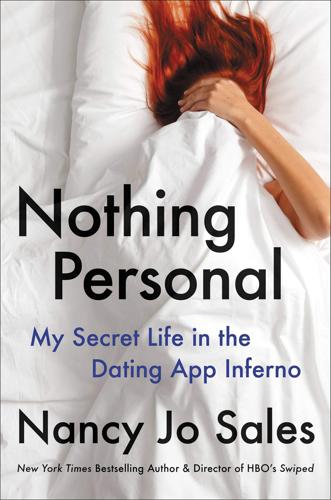
Nothing Personal: My Secret Life in the Dating App Inferno
by
Nancy Jo Sales
Published 17 May 2021
And even though I knew he wasn’t really inquiring as to my well-being, but looking to see if he could come around again and have sex—even after I had told him that I never wanted to see him again because he had done something which, finally, I could no longer explain away as the result of his youth, or this challenging time for relationships—I texted back, “Hey!” Then I slowed down to a walk along Second Avenue, wondering why my legs had carried me along so quickly, without my even thinking, as if that little text ding had been the ring of the bell that had summoned Pavlov’s puppy. I thought of Jaron Lanier, the Internet philosopher with the wild dreads, talking about how we are all being made into dogs by the behavior-modification algorithms of social media. “Please don’t be insulted,” Lanier wrote. “Yes, I am suggesting that you might be turning, just a little, into a well-trained dog, or something less pleasant, like a lab rat or a robot.”
…
The sameness of these experiences (swipe, text, drink, fuck) was beginning to feel like that scene in The Blair Witch Project where the bewitched filmmakers keep circling back to the same spot, unable to make their way out of the woods. There was something about the repetitiveness of it all that was becoming deadening to the point of feeling less human—more like I was being programmed; which, of course, I was, like a pigeon playing the pecking game. “You are losing your free will,” wrote Jaron Lanier, ominously accurate, talking about social media companies and behavior modification. But it wasn’t just how dating apps had killed the spark and spontaneity of dating that was worrying me: I’d started to see a connection between the loss of variability in dating experiences and the loss of biodiversity due to global warming.

The Meritocracy Trap: How America's Foundational Myth Feeds Inequality, Dismantles the Middle Class, and Devours the Elite
by
Daniel Markovits
Published 14 Sep 2019
On Instagram, see Scott Timberg, “Jaron Lanier: The Internet Destroyed the Middle Class,” Salon, May 12, 2013, accessed November 18, 2018, www.salon.com/2013/05/12/jaron_lanier_the_internet_destroyed_the_middle_class/. Hereafter cited as Timberg, “Internet Destroyed.” Instagram’s tiny super-skilled workforce can meet the firm’s staffing needs only because it works alongside the mass of people who use its technology to stage, capture, process, and print images and thus constitute, in structure, a low-skilled labor force, even as they conceive of themselves not as producers but rather consumers. Jaron Lanier thus observes that lots of people—the site’s users who contribute content and even formatting—“work” at Instagram, in a sense.
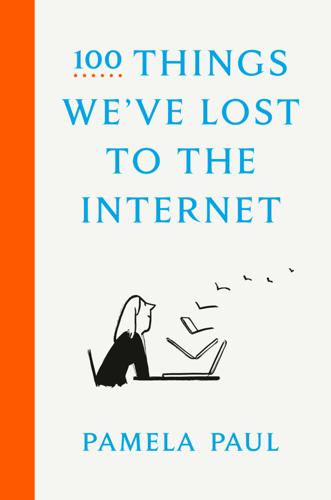
100 Things We've Lost to the Internet
by
Pamela Paul
Published 14 Oct 2021
The other kids can see that nobody’s following you on Instagram, and those other kids follow you to your new town. There’s no such thing as turning over a new leaf or total reinvention when your twelve-year-old self is sewn into the fabric of the web. “The whole system is giving very ambitious people much less chance to reinvent themselves,” says Jaron Lanier, author of You Are Not a Gadget. Who would Bob Dylan have been, he wondered, if Robert Zimmerman were there with him the whole time? In the Before Times, unless you were famous or had written a memoir, your childhood—and perhaps most important, your adolescence—was forgotten, a vestige of a former self that might be encountered only during a chance run-in with a hometown acquaintance.

The Stack: On Software and Sovereignty
by
Benjamin H. Bratton
Published 19 Feb 2016
Stowe Boyd, “If Amazon Is the Future of Work, Then Be Afraid,” Gigaom Research, February 22, 2013, http://research.gigaom.com/2013/02/if-amazon-is-the-future-of-work/. 66. This dynamic is the central problem drawn out in Jaron Lanier in Who Owns the Future? (New York: Simon & Schuster, 2013), and it leads him to advocate for, among other things, a revaluation of how tacit human knowledge might be rewarded by ubiquitous micropayments. See also Jaron Lanier and Douglas Rushkoff, “The Local-Global Flip, or, ‘The Lanier Effect,’” Edge, August 29, 2011, http://edge.org/conversation/the-local-global-flip. 67. See Jobs's presentation of the proposed Campus 2 to the Cupertino City Council at Cupertino City Channel, “Steve Jobs Presents to the Cupertino City Council (6/7/11),” YouTube, June 7, 2011, https://www.youtube.com/watch?
…
Gary Marcus, “Moral Machines,” New Yorker, November 24, 2012, http://www.newyorker.com/news/news-desk/moral-machines. 62. Nick Bilton, “Disruptions: As New Targets for Hackers, Your Car and Your House,” New York Times, August 11, 2013, http://bits.blogs.nytimes.com//2013/08/11/taking-over-cars-and-homes-remotely/. 63. See, for example, Jaron Lanier, Who Owns the Future? (New York: Simon & Schuster, 2013). 64. See Danielle Citron, “Bright Ideas: Anita Allen's Unpopular Privacy,” Concurring Opinions, January 13, 2012, http://www.concurringopinions.com/archives/2012/01/bright-ideas-anita-allens-unpopular-privacy.html. 65. Jacob Applebaum, Andy Mueller-Maguhn, Jeremie Zimmermann, and Julian Assange, “Episode 8, Part 1,” WikiLeaks World Tomorrow, April 2012, https://worldtomorrow.wikileaks.org/episode-8.html.If you look at it from a market perspective, I'm convinced that there is a market in privacy that has been mostly left unexplored, so maybe there will be an economic drive for companies to develop tools that will give users the in-dividual ability to control their data and communication.
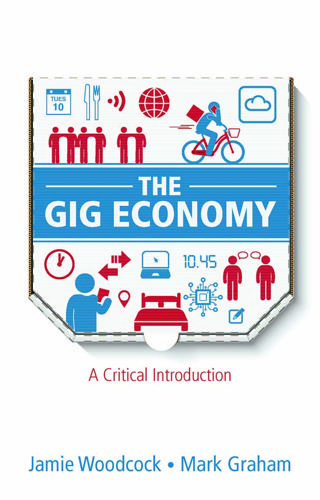
The Gig Economy: A Critical Introduction
by
Jamie Woodcock
and
Mark Graham
Published 17 Jan 2020
For some types of task, it may not be a simple case of humans or artificial intelligence, but rather human microworkers embedded into otherwise automated systems through application programming interfaces (APIs). Here, workers are essentially treated as part of software, algorithms and ‘automated’ processes. The computer scientist Jaron Lanier (2014: 178) describes this as conjuring up ‘a sense of magic, as if you can just pluck results out of the cloud at an incredibly low cost’. Ultimately, this is work that usually requires very little formal training, and – as a result – tends to be poorly paid (Hara et al., 2018). In both cases, what matters to the customer is the final product, not where the actual work was conducted.
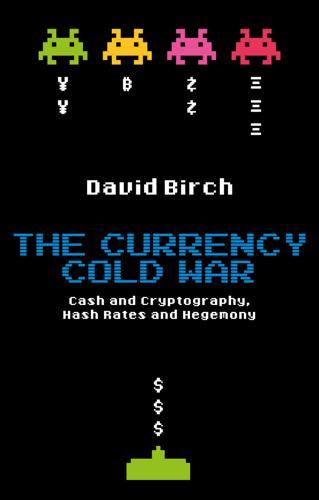
The Currency Cold War: Cash and Cryptography, Hash Rates and Hegemony
by
David G. W. Birch
Published 14 Apr 2020
A viable vision The marketplace I have described, with tens of millions of such currencies being traded on futures, options and FX markets, might sound unviable because transactions would be unbearably complex for people to deal with. However, as I wrote in a Financial Times article several years ago (Birch 2014b), this is not the world that we will be living in. We are not looking at transactions between people but transactions between what Jaron Lanier called ‘economic avatars’ (Lanier 2013). This is a world of transactions between my virtual me and your virtual you, between the virtual Waitrose and the virtual HMRC: a world in which economic competition across digital networks, and competition between currencies in particular, differs starkly from traditional currency competition.
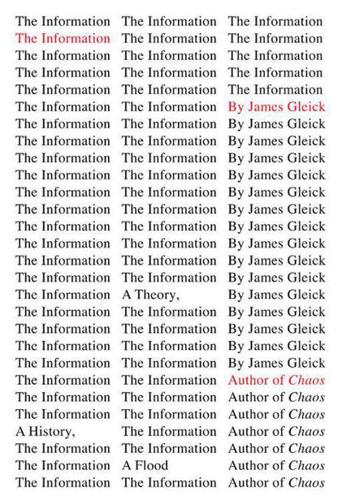
The Information: A History, a Theory, a Flood
by
James Gleick
Published 1 Mar 2011
The library now archives web sites; by February 2010 it had collected 160 terabytes’ worth. As the train hurtled onward, its passengers sometimes felt the pace foreshortening their sense of their own history. Moore’s law had looked simple on paper, but its consequences left people struggling to find metaphors with which to understand their experience. The computer scientist Jaron Lanier describes the feeling this way: “It’s as if you kneel to plant the seed of a tree and it grows so fast that it swallows your whole town before you can even rise to your feet.”♦ A more familiar metaphor is the cloud. All that information—all that information capacity—looms over us, not quite visible, not quite tangible, but awfully real; amorphous, spectral; hovering nearby, yet not situated in any one place.
…
♦ “THE NAME OF A MAN IS LIKE HIS SHADOW”: Ernst Pulgram, Theory of Names (Berkeley, Calif.: American Name Society, 1954), 3. ♦ “A SCIENTIST’S IDEA OF A SHORT WAY”: Michael Amrine, “ ‘Megabucks’ for What’s ‘Hot,’ ” The New York Times Magazine, 22 April 1951. ♦ “IT’S AS IF YOU KNEEL TO PLANT THE SEED”: Jaron Lanier, You Are Not a Gadget (New York: Knopf, 2010), 8. ♦ SERVER FARMS PROLIFERATE: Cf. Tom Vanderbilt, “Data Center Overload,” The New York Times Magazine, 14 June 2009. ♦ LLOYD CALCULATES: Seth Lloyd, “Computational Capacity of the Universe,” Physical Review Letters 88, no. 23 (2002). 15. NEW NEWS EVERY DAY ♦ “SORRY FOR ALL THE UPS AND DOWNS”: http://www.andrewtobias.com/bkoldcolumns/070118.html (accessed 18 January 2007)
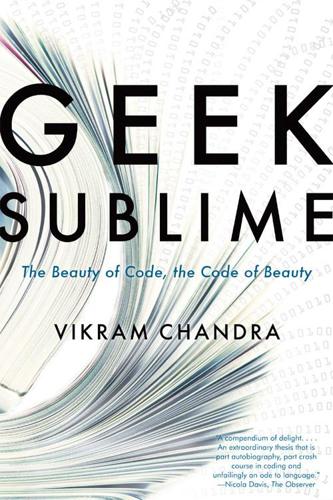
Geek Sublime: The Beauty of Code, the Code of Beauty
by
Vikram Chandra
Published 7 Nov 2013
Notwithstanding revisionist historians and filmmakers, the power of the Frontier Myth, its meaning-making about nation and personhood, its celebrations of regeneration through confrontations with savagery and the wilderness—all this remains intact, as one can see on television shows and hear in the speeches of politicians. The mythology of computing similarly celebrates the victories of its male protagonists and erases women from the record, and not just programmers. The programmer Jaron Lanier tells us that in the early days of Silicon Valley there were … extraordinary female figures who served as the impresarios of social networking before there was an internet. It still seems wrong to name them, because it isn’t clear if I would be talking about their private lives or their public contributions: I don’t know how to draw a line.
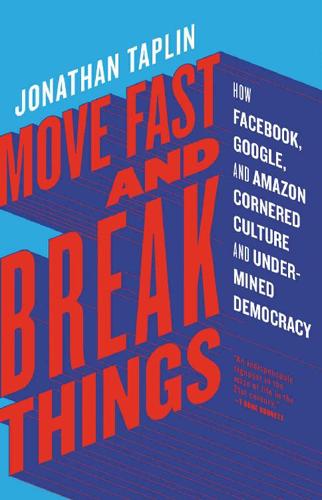
Move Fast and Break Things: How Facebook, Google, and Amazon Cornered Culture and Undermined Democracy
by
Jonathan Taplin
Published 17 Apr 2017
These men believe in their “super human” qualities so deeply that they are investing millions of dollars in ventures like Thiel’s Halcyon Molecular, a company that purports to “create a world free from cancer and aging.” The men believe that technology will eradicate the fundamental human anxiety that is fear of death. The futurist Jaron Lanier once described Google chief scientist Ray Kurzweil and his concept of “the singularity”: the point in time when an artificially intelligent machine will be capable of autonomously building ever smarter and more powerful machines than itself. Lanier noted, “These are ideas with tremendous currency in Silicon Valley; these are guiding principles, not just amusements, for many of the most influential technologists.… All thoughts about consciousness, souls, and the like are bound up equally in faith, which suggests something remarkable: What we are seeing is a new religion, expressed through an engineering culture.”

The Economic Singularity: Artificial Intelligence and the Death of Capitalism
by
Calum Chace
Published 17 Jul 2016
Other critics see the Oculus founders’ view of the future as possible but frightening. Ethan Zuckerman is director of the MIT Centre for Civic Media, and thinks that “the idea that we can make gross economic inequalities less relevant by giving [poor people] virtual bread and circuses is diabolical and delusional.” Jaron Lanier is a computer scientist and writer who founded VR pioneer VPL Research, and is generally credited with popularising the term virtual reality. He lambasts as “evil” the vision that the rich will become immortal, while “everyone else will get a simulated reality. … I’d prefer to see a world where everyone is a first-class citizen and we don’t have people living in the Matrix.”

Cogs and Monsters: What Economics Is, and What It Should Be
by
Diane Coyle
Published 11 Oct 2021
Angrist, Joshua, Pierre Azoulay, Glenn Ellison, Ryan Hill, and Susan Feng Lu, 2017, ‘Economic Research Evolves: Fields and Styles’, American Economic Review, 107 (5), 293–297. Anthony, Sebastian, 2016, ‘The Secret World of Microwave Networks’, Ars Technica, https://arstechnica.com/information-technology/2016/11/private-microwave-networks-financial-hft/, accessed 4 August 2020. Arrieta-Ibarra, Imanol, Leonard Goff, Diego Jiménez-Hernández, Jaron Lanier, and E. Glen Weyl, 2018, ‘Should We Treat Data as Labor? Moving beyond “Free”’, AEA Papers and Proceedings, 108, 38–42. Arrow, K., 1950, ‘A Difficulty in the Concept of Social Welfare’, Journal of Political Economy, 58 (4), 328–346. Arthur, Brian, 2014, Complexity and the Economy, Oxford: Oxford University Press.
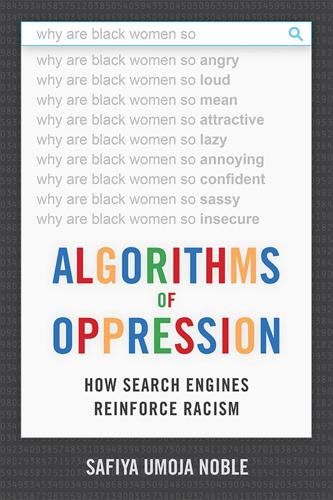
Algorithms of Oppression: How Search Engines Reinforce Racism
by
Safiya Umoja Noble
Published 8 Jan 2018
We need a full-on reevaluation of the implications of our information resources being governed by corporate-controlled advertising companies. I am adding my voice to a number of scholars such as Helen Nissenbaum and Lucas Introna, Siva Vaidhyanathan, Alex Halavais, Christian Fuchs, Frank Pasquale, Kate Crawford, Tarleton Gillespie, Sarah T. Roberts, Jaron Lanier, and Elad Segev, to name a few, who are raising critiques of Google and other forms of corporate information control (including artificial intelligence) in hopes that more people will consider alternatives. Over the years, I have concentrated my research on unveiling the many ways that African American people have been contained and constrained in classification systems, from Google’s commercial search engine to library databases.

The Innovators: How a Group of Inventors, Hackers, Geniuses and Geeks Created the Digital Revolution
by
Walter Isaacson
Published 6 Oct 2014
Producers of digital content could have been compensated in an easy, frictionless manner, permitting a variety of revenue models, including ones that did not depend on being beholden solely to advertisers. Instead the Web became a realm where aggregators could make more money than content producers. Journalists at both big media companies and little blogging sites had fewer options for getting paid. As Jaron Lanier, the author of Who Owns the Future?, has argued, “The whole business of using advertising to fund communication on the Internet is inherently self-destructive. If you have universal backlinks, you have a basis for micropayments from somebody’s information that’s useful to somebody else.”49 But a system of two-way links and micropayments would have required some central coordination and made it hard for the Web to spread wildly, so Berners-Lee resisted the idea.
…
Berners-Lee, Weaving the Web, 70; author’s interview with Tim Berners-Lee. 44. Author’s interview with Marc Andreessen. 45. Author’s interview with Tim Berners-Lee. 46. Berners-Lee, Weaving the Web, 70. 47. Berners-Lee, Weaving the Web, 65. 48. Ted Nelson, “Computer Paradigm,” http://xanadu.com.au/ted/TN/WRITINGS/TCOMPARADIGM/tedCompOneLiners.html. 49. Jaron Lanier interview, by Eric Allen Bean, Nieman Journalism Lab, May 22, 2013. 50. John Huey, Martin Nisenholtz, and Paul Sagan, “Riptide,” Harvard Kennedy School, http://www.niemanlab.org/riptide/. 51. Author’s interview with Marc Andreessen. 52. Author’s interview with Tim Berners-Lee. 53. Author’s interview with Marc Andreessen. 54.

Our Final Invention: Artificial Intelligence and the End of the Human Era
by
James Barrat
Published 30 Sep 2013
In his book, Virtually You, psychiatrist Elias Aboujaoude warns that social networking and role-playing games encourage a swarm of maladies, including narcissism and egocentricity. Immersion in technology weakens individuality and character, proposes the programmer who pioneered virtual reality, Jaron Lanier, author of You Are Not a Gadget: A Manifesto. These experts warn that detrimental effects come from computers outside our bodies. Yet Kurzweil proposes only good things will come of computers inside our bodies. I think it’s implausible to expect that hundreds of thousands of years of evolution will turn on a dime in thirty years, and that we can be reprogrammed to love an existence that is so different from the lives we’ve evolved to fit.
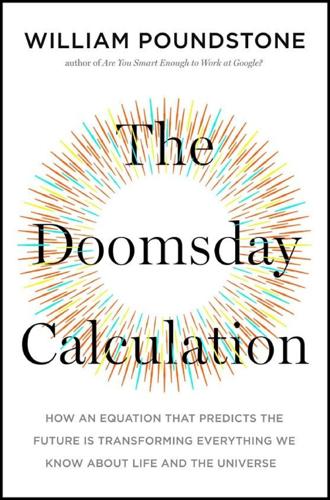
The Doomsday Calculation: How an Equation That Predicts the Future Is Transforming Everything We Know About Life and the Universe
by
William Poundstone
Published 3 Jun 2019
The dangerous-AI thesis has split the tech community the way the Civil War split border-state families. For every tech or scientific luminary who believes that AI may be a threat, another downplays the issue. “This is not an honest conversation,” objected Microsoft visionary and virtual reality pioneer Jaron Lanier. “People think it’s about technology, but it is really about religion, people turning to metaphysics to cope with the human condition. They have a way of dramatizing their beliefs with an end-of-days scenario—and one does not want to criticize other people’s religions.” “I am in the camp that is concerned about super intelligence,” said Bill Gates on Reddit in 2015.
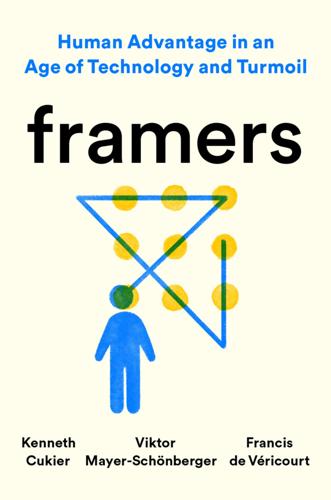
Framers: Human Advantage in an Age of Technology and Turmoil
by
Kenneth Cukier
,
Viktor Mayer-Schönberger
and
Francis de Véricourt
Published 10 May 2021
Hollywood production crews have long included the position of “continuity editor” to ensure that every aspect of a film, from shots to subplots, is perfectly consistent. But Spielberg raised this to another level. In 1999 a dozen experts gathered for a three-day “ideas summit” in a conference room of the posh Shutters hotel beside the beach in Santa Monica, California. The pioneer of virtual reality Jaron Lanier was there, describing a prototype of a glove to enable gestures as the interface to computers—seen at the start of the film as Tom Cruise gracefully waves around virtual screens like an orchestra conductor. The Gen X writer Douglas Coupland was there, typing the ideas into a book for the production director to use, that later was called “the bible.”
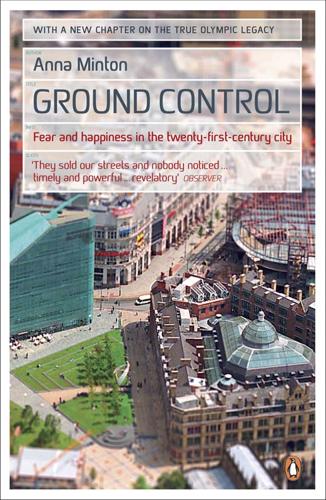
Ground Control: Fear and Happiness in the Twenty First Century City
by
Anna Minton
Published 24 Jun 2009
WILSON, Redirect: The Surprising New Science of Psychological Change IAN KERSHAW, The End: Hitler's Germany, 1944-45 T M DEVINE, To the Ends of the Earth: Scotland's Global Diaspora, 1750-2010 CATHERINE HAKIM, Honey Money: The Power of Erotic Capital DOUGLAS EDWARDS, I'm Feeling Lucky: The Confessions of Google Employee Number 59 JOHN BRADSHAW, In Defence of Dogs CHRIS STRINGER, The Origin of Our Species LILA AZAM ZANGANEH, The Enchanter: Nabokov and Happiness DAVID STEVENSON, With Our Backs to the Wall: Victory and Defeat in 1918 EVELYN JUERS, House of Exile: War, Love and Literature, from Berlin to Los Angeles HENRY KISSINGER, On China MICHIO KAKU, Physics of the Future: How Science Will Shape Human Destiny and Our Daily Lives by the Year 2100 DAVID ABULAFIA, The Great Sea: A Human History of the Mediterranean JOHN GRIBBIN, The Reason Why: The Miracle of Life on Earth ANATOL LIEVEN, Pakistan: A Hard Country WILLIAM D COHAN, Money and Power: How Goldman Sachs Came to Rule the World JOSHUA FOER, Moonwalking with Einstein: The Art and Science of Remembering Everything SIMON BARON-COHEN, Zero Degrees of Empathy: A New Theory of Human Cruelty MANNING MARABLE, Malcolm X: A Life of Reinvention DAVID DEUTSCH, The Beginning of Infinity: Explanations that Transform the World DAVID EDGERTON, Britain's War Machine: Weapons, Resources and Experts in the Second World War JOHN KASARDA AND GREG LINDSAY, Aerotropolis: The Way We’ll Live Next DAVID GILMOUR, The Pursuit of Italy: A History of a Land, its Regions and their Peoples NIALL FERGUSON, Civilization: The West and the Rest TIM FLANNERY, Here on Earth: A New Beginning ROBERT BICKERS, The Scramble for China: Foreign Devils in the Qing Empire, 1832-1914 MARK MALLOCH-BROWN, The Unfinished Global Revolution: The Limits of Nations and the Pursuit of a New Politics KING ABDULLAH OF JORDAN, Our Last Best Chance: The Pursuit of Peace in a Time of Peril ELIZA GRISWOLD The Tenth Parallel: Dispatches from the Faultline between Christianity and Islam BRIAN GREENE, The Hidden Reality: Parallel Universes and the Deep Laws of the Cosmos JOHN GRAY, The Immortalization Commission: The Strange Quest to Cheat Death, PATRICK FRENCH, India: A Portrait LIZZIE COLLINGHAM, The Taste of War: World War Two and the Battle for Food HOOMAN MAJD, The Ayatollahs' Democracy: An Iranian Challenge DAMBISA MOYO, How The West Was Lost: Fifty Years of Economic Folly - And the Stark Choices Ahead EVGENY MOROZOV, The Net Delusion: How Not to Liberate the World RON CHERNOW, Washington: A Life NASSIM NICHOLAS TALEB, The Bed of Procrustes: Philosophical and Practical Aphorisms HUGH THOMAS, The Golden Age: The Spanish Empire of Charles V AMANDA FOREMAN, A World on Fire: An Epic History of Two Nations Divided NICHOLAS OSTLER, The Last Lingua Franca: English until the Return of Babel RICHARD MILES, Ancient Worlds: The Search for the Origins of Western Civilization NEIL MACGREGOR, A History of the World in 100 Objects STEVEN JOHNSON, Where Good Ideas Come From: The Natural History of Innovation DOMINIC SANDBROOK, State of Emergency: The Way We Were: Britain, 1970-1974 JIM AL-KHALILI, Pathfinders: The Golden Age of Arabic Science HA-JOON CHANG, 23 Things They Don't Tell You About Capitalism ROBIN FLEMING, Britain After Rome: The Fall and Rise, 400 to 1070 TARIQ RAMADAN, The Quest for Meaning: Developing a Philosophy of Pluralism JOYCE TYLDESLEY, The Penguin Book of Myths and Legends of Ancient Egypt NICHOLAS PHILLIPSON, Adam Smith: An Enlightened Life PAUL GREENBERG, Four Fish: A Journey from the Ocean to Your Plate CLAY SHIRKY, Cognitive Surplus: Creativity and Generosity in a Connected Age ANDREW GRAHAM-DIXON, Caravaggio: A Life Sacred and Profane NIALL FERGUSON, High Financier: The Lives and Time of Siegmund Warburg SEAN MCMEEKIN: The Berlin-Baghdad Express: The Ottoman Empire and Germany's Bid for World Power, 1898-1918 RICHARD MCGREGOR, The Party: The Secret World of China's Communist Rulers SPENCER WELLS, Pandora's Seed: The Unforeseen Cost of Civilization FRANCIS PRYOR, The Making of the British Landscape: How We Have Transformed the Land, from Prehistory to Today RUTH HARRIS, The Man on Devil's Island: Alfred Dreyfus and the Affair that Divided France MICHAEL HUNT ed., A Vietnam War Reader: American and Vietnamese Perspectives PAUL COLLIER, The Plundered Planet: How to Reconcile Prosperity With Nature NORMAN STONE, The Atlantic and Its Enemies: A History of the Cold War SIMON PRICE AND PETER THONEMANN, The Birth of Classical Europe: A History from Troy to Augustine HAMPTON SIDES, Hellhound on his Trail: The Stalking of Martin Luther King, Jr. and the International Hunt for His Assassin JACKIE WULLSCHLAGER, Chagall: Love and Exile RICHARD MILES, Carthage Must be Destroyed: The Rise and Fall of an Ancient Civilization TONY JUDT, Ill Fares The Land: A Treatise On Our Present Discontents MICHAEL LEWIS, The Big Short: Inside the Doomsday Machine OLIVER BULLOUGH, Let Our Fame Be Great: Journeys among the Defiant People of the Caucasus PAUL DAVIES, The Eerie Silence: Searching for Ourselves in the Universe RICHARD WILKINSON, KATE PICKETT, The Spirit Level: Why Equality is Better for Everyone TOM BINGHAM, The Rule of Law JOSEPH STIGLITZ, Freefall: Free Markets and the Sinking of the Global Economy JOHN LANCHESTER, Whoops!: Why Everyone Owes Everyone and No One Can Pay CHINUA ACHEBE, The Education of a British-Protected Child JARON LANIER, You Are Not A Gadget: A Manifesto JOHN CASSIDY, How Markets Fail: The Logic of Economic Calamities ROBERT FERGUSON: The Hammer and the Cross: A New History of the Vikings PENGUIN BOOKS Published by the Penguin Group Penguin Books Ltd, 80 Strand, London WC2R 0RL, England Penguin Group (USA) Inc., 375 Hudson Street, New York, New York 10014, USA Penguin Group (Canada), 90 Eglinton Avenue East, Suite 700, Toronto, Ontario, Canada M4P 2Y3 (a division of Pearson Canada Inc.)

Stealing Fire: How Silicon Valley, the Navy SEALs, and Maverick Scientists Are Revolutionizing the Way We Live and Work
by
Steven Kotler
and
Jamie Wheal
Published 21 Feb 2017
Dick’s short story “Minority Report” into a box-office hit.15 A cop thriller set in the mid-twenty-first century, “Minority Report” hinges on mutant humans who can see into the future, using their “precognition” to prevent crimes before they happen. Unfortunately for Spielberg, Dick’s book contained few clues as to what this Tomorrowland world actually looked liked. So the director pulled together a collection of the world’s best futurists to help him color in the storyboards in the most believable way. Jaron Lanier, author and virtual reality pioneer; Shaun Jones, the first director of DARPA’s Unconventional Countermeasures program; and the heads of both ’the Center for Bits and Atoms and the Media Lab at the Massachusetts Institute of Technology, all convened at Shutters, a Santa Monica, California, beachside hotel, for their secret think tank.
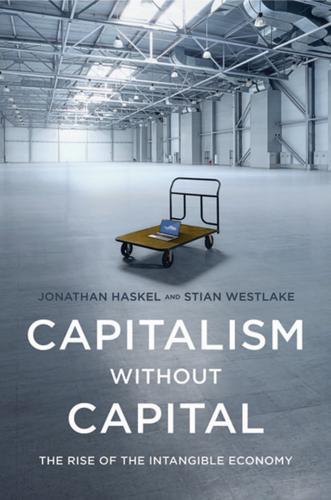
Capitalism Without Capital: The Rise of the Intangible Economy
by
Jonathan Haskel
and
Stian Westlake
Published 7 Nov 2017
Given sufficient advances in technology and infrastructure, these kinds of markets and institutions need not be limited to major intangible assets like patents or copyrights. They may also be applicable to the tiny elements of user-generated data that collectively make up the vastly valuable databases and networks of firms like Google and Facebook. Jaron Lanier, the philosopher and computer scientist, called for a system that would allow the creators of user-generated content—that is, you and me every time we interact online or often offline—to charge a very small fee for the use of our data. Establishing these kinds of exchanges is a major undertaking, requiring significant coordination between rights-holders, content platforms, collection agencies, and governments.
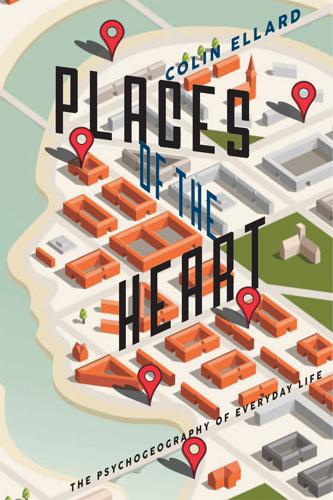
Places of the Heart: The Psychogeography of Everyday Life
by
Colin Ellard
Published 14 May 2015
If virtual reality technology becomes endemic as a user interface for visualization of the world, then our personal perspective can be placed anywhere at all—not only in inaccessible locations like Aleppo, but also inside strange things such as beings with ultralong arms or, as in experiments conducted by Jaron Lanier for Microsoft, into the body of a simulated lobster. Through the use of technology, our first-person perspective can actually invade the world and be anywhere that we want it to be. The implications of this are staggering. We cannot consider being human as a kind of mind-in-a-vat experience—as if we are nothing more than a central processor like a computer whose connections to the world are arbitrary.
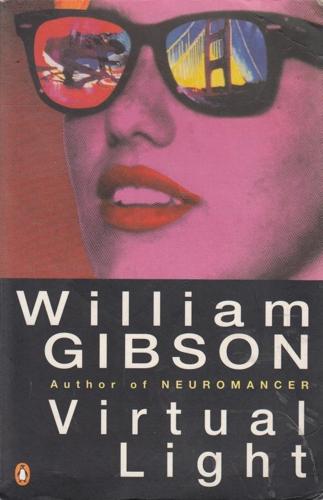
Virtual Light
by
William Gibson
Published 1 Jan 1993
When Rydell meets... the three hackers and their massive ego representations. WG : Yeah. MR : One of them was made of television and so Rydell says 'Jesus', which was quite funny coming as it was from out of a Fallonite community link there. WG : Yeah, yeah, that was one of them. The other one was sort of... the one that looked like a mountain and Jaron Lanier... and it had big lobster claws. Yeah, so it was.. I wanted to do the... I liked that because it sort of established that this was not a book in which the hackers were romantic. You know, when I wrote Neuromancer I'd never even heard the term hacker. If I had done I would have used it in the book.

What Algorithms Want: Imagination in the Age of Computing
by
Ed Finn
Published 10 Mar 2017
The engineers are agnostic about the universe as a system; all they care about is accurately modeling certain parts of it, like the search results that best correspond to certain queries or the books that users in Spokane, Washington, are likely to order today. As Pasquale and a host of other digital culture critics from Jaron Lanier to Evgeny Morozov have argued, even the implicit claims to efficiency and “good-enough” rationalism at the heart of the engineer’s definition of algorithms have a tremendous impact on policy, culture, and the practice of everyday life, because the compromises and analogies of algorithmic approximations tend to efface everything that they do not comprehend.17 The expansion of the rhetoric of computation easily bleeds into what Hayles calls the “hard claim” for computationalism.

A World Without Email: Reimagining Work in an Age of Communication Overload
by
Cal Newport
Published 2 Mar 2021
At the time, I knew I had only scratched the surface of the complex landscape of issues afflicting knowledge work in an age of digital networks, but I was struggling to cohere these lingering thoughts into a useful framework. In the fall of 2015, as Deep Work was being prepared for printing, and my thinking was moving on to what would come next, I found myself browsing paperback displays at a Barnes & Noble in Bethesda, Maryland (now, unfortunately, closed), when I came across a copy of Jaron Lanier’s book Who Owns the Future? I was impressed by how he complemented his criticism on the economic impacts of the internet’s architecture with a bold and clear proposal for an alternative. Standing there in the aisle, holding the book, a revelation hit me that all at once seemed to clarify the muddled mass of research and intuitions with which I’d been battling: What if work didn’t require email?
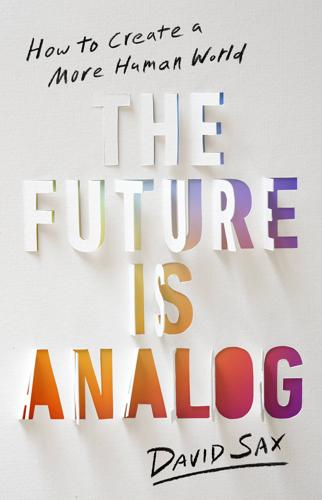
The Future Is Analog: How to Create a More Human World
by
David Sax
Published 15 Jan 2022
Academics like Adam Alter (author of Irresistible: The Rise of Addictive Technology and the Business of Keeping Us Hooked) have documented how social media companies use the same tricks as alcohol companies and casinos, in this case working to get you dependent on clicking, liking, and sharing, by designing elaborate feedback loops that release little hits of dopamine every time you get some attention and keep you engaged for as long as possible. We are only now beginning to reckon with the consequences of this, in the way we first reckoned with those of cigarettes sixty years ago. In his fiery book Ten Arguments for Deleting Your Social Media Accounts Right Now, internet evangelist turned critic Jaron Lanier put it best, when he explained that social media turned people into assholes. Not all people. Not all the time. But most people, a lot of the time. The reason was simple. Negative emotions were more engaging. Jerks prospered on social media, and assholes made social media companies more money.

Possiplex
by
Ted Nelson
Published 2 Jan 2010
By which I wanted to mean "all aspects of the art and science of presentation. " Nobody could relate to that either. In the nineteen-nineties I started using the term virtuality, which correctly means the opposite of reality—the design and abstraction of imaginary worlds. My old* Webster’s dictionary puts it this way: Unfortunately Jaron Lanier’s popularization of Artaud’s term "virtual reality" has taken all the oxygen from the word “virtual”-- many people use the term "virtual" for 3D, literal 3D. This is an unfortunate loss of an important meaning. * I think Merriam-Webster 1905; regrettably not on hand as I write. • New Non-Sequential Tools Being able to hold ideas in new structures meant we wouldn’t have to make them just sequential or hierarchical any more.
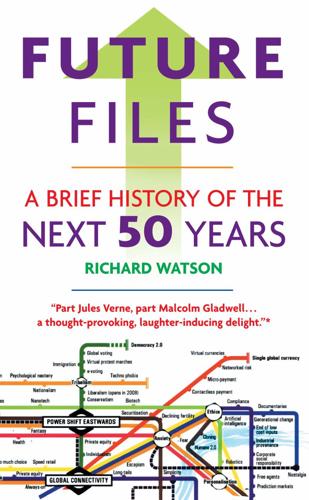
Future Files: A Brief History of the Next 50 Years
by
Richard Watson
Published 1 Jan 2008
The wider use of the internet to bring people together could also be beneficial in the future because questions like “Should we use technology like space mirrors to solve global warming?” could be addressed to most of the planet, thus taking key debates far outside the scientific community. “Truth” is now whatever Wikipedia says it is. Moreover, truth is whatever Wikipedia says it is right now (which, by implication, may change tomorrow). As a counterpoint Jaron Lanier, who coined the term “virtual reality”, has predicted that collective intelligence — or digital Maoism — will have the same deadening and anti-creative effect as political collectivism. In other words, the wisdom of “idiots” will remove any opinion that does not fit with its own; if the online majority decides that 1+1=3, that will be the “truth”.
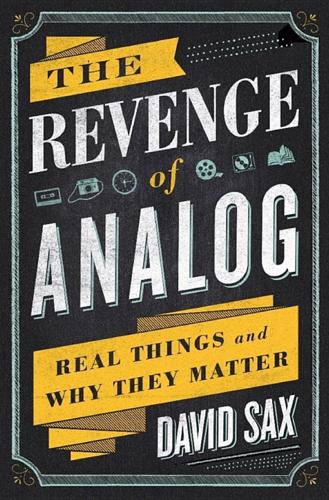
The Revenge of Analog: Real Things and Why They Matter
by
David Sax
Published 8 Nov 2016
The speed and volume of transactions that digital technology enabled amplified the volatility of the market and the asset bubble more than anyone could have predicted. “The limitations of organic human memory and calculation used to put a cap on the intricacies of self-delusion,” wrote computer scientist and philosopher Jaron Lanier in his book You Are Not a Gadget. The rise of quantitative hedge funds turned capitalism into “search engines,” which Lanier described as the perfect “blending of cyber-cloud faith and Milton Friedman economics.” The recession hit when the real world couldn’t support the numbers being assigned to it by computers and speculators.

You Are Here: Why We Can Find Our Way to the Moon, but Get Lost in the Mall
by
Colin Ellard
Published 6 Jul 2009
Our ability to design machines that can transport us instantly from one place to another using nothing more than beams of electrons has further revolutionized the human relationship with physical space. CHAPTER 10 CYBERSPACE HOW THE NATURE OF OUR MIND MAKES IT POSSIBLE FOR US TO LIVE IN ELECTRONIC PLACES People on planet earth are like a bunch of really technically bright teenagers without any supervision hanging out all summer in a chemistry lab. JARON LANIER There’s something about my face today that doesn’t seem quite right. It may be a little too thin, or it could be that I’ve trimmed my beard too closely. My white T-shirt is form fitting—an unusual choice for me as I usually prefer to wear looser clothing to hide some of the extra pounds. Walking down a wide thoroughfare, I notice a large green box squatting low in the grass beside the road.
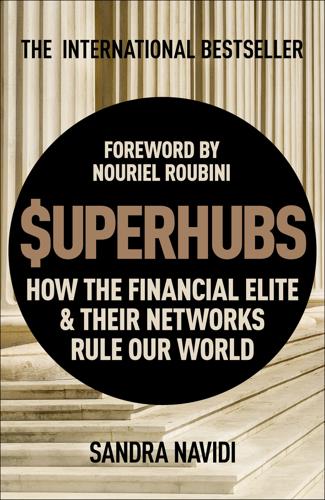
SUPERHUBS: How the Financial Elite and Their Networks Rule Our World
by
Sandra Navidi
Published 24 Jan 2017
Derek Thompson, “How Your Face Shapes Your Economic Chances,” The Atlantic, August 1, 2014, http://www.theatlantic.com/business/archive/2014/08/the-economics-of-your-face/375450. 4. Gillian Tett, “Klaus Schwab Opens Door for His Davos Successor,” Financial Times, May 19, 2015, https://next.ft.com/content/0fcb6966-fdfd-11e4-9f10-00144feabdc0. 5. Jaron Lanier, You Are Not a Gadget: A Manifesto (New York: Random House, 2009), Kindle locations 121-26, Kindle edition. 6. Mark Bauerlein, The Digital Divide: Arguments for and Against Facebook, Google, Tex-ting, and the Age of Social Networking (New York: Penguin, 2011), Kindle location 60, Kindle edition; Sherry Turkle, Alone Together: Why We Expect More from Technology and Less from Each Other (New York: Perseus Books Group, 2011), Kindle edition. 7.
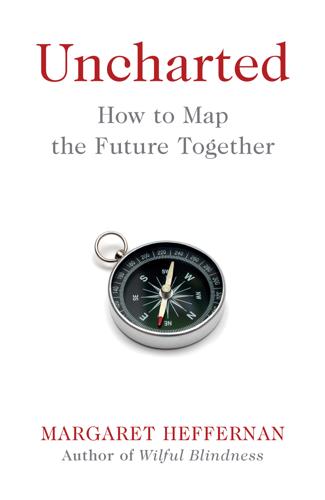
Uncharted: How to Map the Future
by
Margaret Heffernan
Published 20 Feb 2020
Over several years, Atwood noted and collected stories, news items, the weak signals of shifts in thought, attitude, behaviour and rules. Nothing Atwood included in The Handmaid’s Tale lacked a historical antecedent or modern reference. The details didn’t need to be made up; by collecting and arranging them, she showed what they might mean. 3 The technology writer Jaron Lanier recommends that consumers be more like cats than Pavlov’s dogs as a defence against the behaviourism imposed by social media. Lanier, Jaron, Ten Arguments for Deleting Your Social Media Accounts Right Now, Bodley Head, London, 2019 4 Interview in The Paris Review, Iss. 226, Fall 2018 5 Meyer, Michael, Henrik Ibsen, Vol. 3, Rupert Hart-Davis, London, 1967 6 Rilke, Rainer Maria, Letters to a Young Poet, Penguin Classics, London, 2016 7 www.youtube.com/playlist?
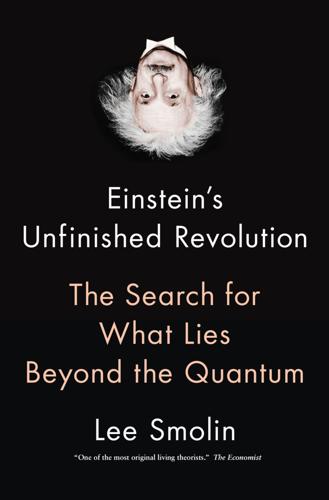
Einstein's Unfinished Revolution: The Search for What Lies Beyond the Quantum
by
Lee Smolin
Published 31 Mar 2019
Then I want very much to thank those who have become friends through our shared work on foundational problems: Stephon Alexander, Giovanni Amelino-Camelia, Abhay Ashtekar, Eli Cohen, Marina Cortês, Louis Crane, John Dell, Avshalom Elitzur, Laurent Freidel, Sabine Hossenfelder, Ted Jacobson, Stuart Kauffman, Jurek Kowalski-Glikman, Andrew Liddle, Renate Loll, João Magueijo, Roberto Mangabeira Unger, Fotini Markopoulou, and Carlo Rovelli. The book has been very much improved by feedback from Krista Blake, Saint Clair Cemin, Dina Graser, Jaron Lanier, and Donna Moylan. I also want to thank Kaća Bradonjić for the illustrations and for many wise and helpful suggestions on the text. For helpful conversations and correspondence on specific points, I must thank Jim Baggott, Julian Barbour, Freeman Dyson, Olival Freire, Stuart Kauffman, Michael Nielsen, Philip Pearle, Bill Poirier, Carlo Rovelli, and John Stachel.

The Cultural Logic of Computation
by
David Golumbia
Published 31 Mar 2009
In A Thousand Plateaus, Deleuze and Guattari develop a concept, striation, that arguably emerges in part from the growing emphasis on computerization that was evident even in the 1970s, but that has sometimes been overlooked by media theorists in favor of what is clearly a misreading of Deleuze and Guattari’s discussion of virtuality (see especially Lévy 2001). The term virtual reality emerged in wide use (popularized in particular by the computer evangelist Jaron Lanier) after Deleuze and Guattari’s pathbreaking work, and it is clear that Deleuze and Guattari intended the virtual to refer to a generic use The Cultural Functions of Computation p 23 of the term rather than to a computer-based phenomena (see De Landa 2002; Massumi 2002; Shields 2003; and Wark 2004 for more accurate discussions of what Deleuze and Guattari mean by the virtual and how it relates to the computer).

Unweaving the Rainbow
by
Richard Dawkins
Published 7 Aug 2011
The tip of the tube may also be furnished with various remote-control instruments which the surgeon can control, such as micro-scalpels and forceps. In conventional endoscopy, the surgeon sees what he is doing using an ordinary television screen, and he operates the remote controls using his fingers. But as various people have realized (not least Jaron Lanier, who coined the phrase 'virtual reality' itself) it is in principle possible to give the surgeon the illusion of being shrunk and actually inside the patient's body. This idea is in the research stage, so I shall resort to a fantasy of how the technique might work in the next century. The surgeon of the future has no need to scrub up, for she need not go near her patient.
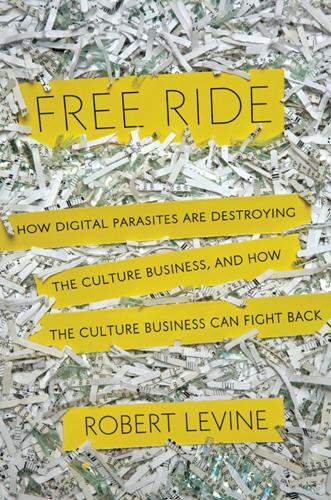
Free Ride
by
Robert Levine
Published 25 Oct 2011
Those search engines and players won’t be nearly as valuable without them. The current situation is slowly robbing the Internet of its potential. Rather than encourage innovation and excellence, it rewards cost cutting and crowdsourcing. The effects can be underwhelming. In his book You Are Not a Gadget: A Manifesto, the computer scientist Jaron Lanier points out that two of the most widely acclaimed results of the remarkable technological advances of the Internet are Wikipedia and Linux, a free encyclopedia and a new version of the Unix operating system. We can do better. No one believes that piracy could be stopped by a law like COICA or an agreement between media companies and Internet service providers.
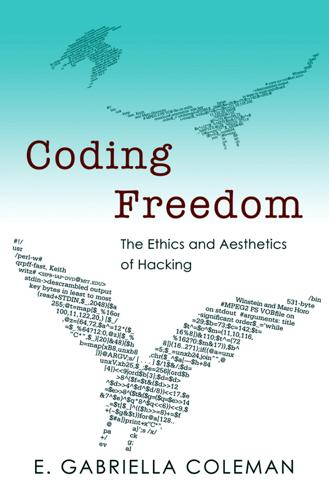
Coding Freedom: The Ethics and Aesthetics of Hacking
by
E. Gabriella Coleman
Published 25 Nov 2012
Many academics and journalists who are critical of Web 2.0 often accept the assumption smuggled within this discourse—namely, that these disparate phenomenon belong in the same analytic frame in the first place. “It breaks my heart,” writes one of the fiercest critics of contemporary computer currents, Jaron Lanier (2010, 70), “when I talk to energized young people who idolize the icons of the new digital ideology, like Facebook, Twitter, Wikipedia and free/open/Creative mashups.” Lanier might be less perturbed if he knew that those who embrace F/OSS and Wikipedia are frequently the fiercest critics of the privacy violations and copyright policies of social network platforms like Facebook.

The Hacker Crackdown
by
Bruce Sterling
Published 15 Mar 1992
Gilmore, an ardent libertarian, was to prove an eloquent advocate of electronic privacy issues, especially freedom from governmental and corporate computer-assisted surveillance of private citizens. A second meeting in San Francisco rounded up further allies: Stewart Brand of the Point Foundation, virtual-reality pioneers Jaron Lanier and Chuck Blanchard, network entrepreneur and venture capitalist Nat Goldhaber. At this dinner meeting, the activists settled on a formal title: the Electronic Frontier Foundation, Incorporated. Kapor became its president. A new EFF Conference was opened on the Point Foundation's Well, and the Well was declared "the home of the Electronic Frontier Foundation."

The Industries of the Future
by
Alec Ross
Published 2 Feb 2016
Silicon Valley’s history as a home to apricot and plum orchards is long past, and if it does establish itself as the source of winning investment or innovation for precision agriculture, it will contradict the idea that domain expertise will drive the industries of the future. Instead, it would suggest, as futurist Jaron Lanier has argued in his book Who Owns the Future?, that those who hold the most data, the fastest servers, and the most processing power will drive all growth from here on out. It’s basically the idea that Google could do my job and your job—and everyone else’s job—better if they wanted to simply by applying their top-of-the-line analytics abilities.

Radicals Chasing Utopia: Inside the Rogue Movements Trying to Change the World
by
Jamie Bartlett
Published 12 Jun 2017
If 1 million citizens from at least four EU countries sign a petition inviting the European Commission to bring forward proposals in an area where it has the power to do so, the commission is obliged to examine it. However, only one proposal has so far reached this stage—partly because of how cumbersome it is to collect and verify signatures, and because most petitions have been on subjects outside the commission’s competence. Further discussion is in Jaron Lanier, Who Owns the Future (Simon & Schuster, 2013), p. 199. On the role of political parties, a good historical view is offered by Francis Fukuyama in his excellent Political Order and Political Delay, p. 139. Fukuyama argued that political parties still play a vital role in allowing collective action on the part of like-minded people, aggregating disparate social interests around a common platform, articulated positions and politics and creating ‘a stability of expectations’. 55.

The Future Is Faster Than You Think: How Converging Technologies Are Transforming Business, Industries, and Our Lives
by
Peter H. Diamandis
and
Steven Kotler
Published 28 Jan 2020
It’s letting us digitize experience and teleport our senses into a computer-generated world where the limits of imagination become the only brake on reality. Much like AI, the concept of VR has been around since the sixties. The 1980s saw the first false dawn, when the earliest “consumer-facing” systems began to show up. In 1989, before the iPhone, if you had a spare $250,000, you could purchase the EyePhone, a VR system built by Jaron Lanier’s company VPL (Lanier coined the term “virtual reality”). Unfortunately, the computer that powered that system was the size of a dorm room refrigerator, while the headset it required was bulky, awkward, and only generated about five frames a second—or six times slower than the average television of that era.

They Don't Represent Us: Reclaiming Our Democracy
by
Lawrence Lessig
Published 5 Nov 2019
See Robert Shapiro and Yaeli Bloch-Elkon, “Political Polarization and the Rational Public,” paper prepared for presentation at the Annual Conference of the American Association for Public Opinion Research, Montreal, Quebec, Canada, May 18–21, 2006, available at link #95. 44.The optimistic: Mike Godwin, Cyber Rights: Defending Free Speech in the Digital Age (Cambridge, MA: MIT Press, 1998); Yochai Benkler, The Wealth of Networks: How Social Production Transforms Markets and Freedom (New Haven, CT: Yale University Press, 2006); Clay Shirky, Here Comes Everybody: The Power of Organizing Without Organizations (New York: Penguin Press, 2008). The dark: Jonathan Zittrain, The Future of the Internet and How to Stop It (New Haven, CT: Yale University Press, 2008); Jaron Lanier, You Are Not a Gadget: A Manifesto (New York: Knopf, 2010). 45.The quote is from John Gilmore, one of the founders of EFF. See “John Gilmore,” Wikipedia, available at link #96. 46.Eli Pariser, The Filter Bubble: How the New Personalized Web Is Changing What We Read and How We Think (New York: Penguin Press, 2011). 47.Zeynep Tufekci, Twitter and Tear Gas: The Power and Fragility of Networked Protest (New Haven, CT: Yale University Press, 2017), 31, 270. 48.David W.

New Laws of Robotics: Defending Human Expertise in the Age of AI
by
Frank Pasquale
Published 14 May 2020
I Couldn’t,” Verge, April 28, 2018, https://www.theverge.com/2018/4/28/17293056/facebook-deletefacebook-social-network-monopoly. 55. Joel Ross, Lilly Irani, M. Six Silberman, Andrew Zaldivar, and Bill Tomlinson, “Who Are the Crowdworkers? Shifting Demographics in Mechanical Turk,” CHI EA ’10: ACM Conference on Human Factors in Computing Systems (2010), 2863–2872. 56. Jaron Lanier, You Are Not a Gadget: A Manifesto (New York: Knopf, 2010). 57. Julia Powles, “The Case That Won’t Be Forgotten,” Loyola University Chicago Law Journal 47 (2015): 583–615; Frank Pasquale, “Reforming the Law of Reputation,” Loyola University Chicago Law Journal 47 (2015): 515–539. 58. Michael Hiltzik, “President Obama Schools Silicon Valley CEOs on Why Government Is Not Like Business,” Los Angeles Times, October 17, 2016, https://www.latimes.com/business/hiltzik/la-fi-hiltzik-obama-silicon-valley-20161017-snap-story.html. 59.

The Costs of Connection: How Data Is Colonizing Human Life and Appropriating It for Capitalism
by
Nick Couldry
and
Ulises A. Mejias
Published 19 Aug 2019
OECD, 2016. http://www.oecd-ilibrary.org/social-issues-migration-health/the-risk-of-automation-for-jobs-in-oecd-countries_5jlz9h56dvq7-en. Arora, Sanchit, Chuck Cho, Paul Fitzpatrick, and Francois Scharffe. “Towards Ontology Driven Learning of Visual Concept Detectors.” arXiv preprint, 2016. arXiv:1605.09757. https://arxiv.org/abs/1605.09757. Arrieta Ibarra, Imanol, Leonard Goff, Diego Jiménez Hernández, Jaron Lanier, and E. Glen Weyl. “Should We Treat Data as Labor? Moving Beyond ‘Free.’” Social Science Research Network, December 27, 2017. https://papers.ssrn.com/abstract=3093683. Arvidsson, Adam. “Facebook and Finance: On the Social Logic of the Derivative.” Theory Culture & Society 33, no. 6 (2016): 3–23. .

Common Knowledge?: An Ethnography of Wikipedia
by
Dariusz Jemielniak
Published 13 May 2014
Philosophy of the Social Sciences, 31(3), 302–322. Trist, E. (1983). Referent organizations and the development of inter-organizational domains. Human Relations, 36(3), 269–284. Tumlin, M., Harris, S. R., Buchanan, H., Schmidt, K., & Johnson, K. (2007). Collectivism vs. individualism in a wiki world: Librarians respond to Jaron Lanier’s essay “Digital Maoism: The hazards of the new online collectivism.” Serials Review, 33(1), 45–53. Turek, P., Wierzbicki, A., Nielek, R., Hupa, A., & Datta, A. (2010). Learning about the quality of teamwork from wikiteams. In Proceedings of the 2010 IEEE Second International Conference on Social Computing (pp. 17–24).

What Technology Wants
by
Kevin Kelly
Published 14 Jul 2010
Chris Anderson Gordon Bell Katy Borner Stewart Brand Eric Brende David Brin Rob Carlson James Carse Jamais Cascio Richard Dawkins Eric Drexler Freeman Dyson George Dyson Niles Eldredge Brian Eno Joel Garreau Paul Hawken Danny Hillis Piet Hut Derrick Jensen Bill Joy Stuart Kauffman Donald Kraybill Mark Kryder Ray Kurzweil Jaron Lanier Pierre Lemonnier Seth Lloyd Lori Marino Max More Simon Conway Morris Nathan Myhrvold Howard Rheingold Paul Saffo Kirkpatrick Sale Tim Sauder Peter Schwartz John Smart Lee Smolin Alex Steffen Steve Talbot Edward Tenner Sherry Turkle Hal Varian Vernor Vinge Jay Walker Peter Warshall Robert Wright Annotated Reading List Of the hundreds of books I consulted for this project, I found the following selected ones to be the most useful for my purposes.

Bootstrapping: Douglas Engelbart, Coevolution, and the Origins of Personal Computing (Writing Science)
by
Thierry Bardini
Published 1 Dec 2000
(Weiser 1995, 78) If, or rather, when that happens, a personal computer and its interface with its user will not necessarily be individual objects that belong to a person, but ma- terial and symbolic devices that allow their users to act and interact as persons in whatever" reality" these actions and interactions might take place. If that is so, we will indeed need a new conception not just of the personal computer, but of the person as such. KINESTHETIC MEDIA AND THE FUTURE OF THE PERSON Like Jaron Lanier, I believe that what was once a research tOpIC has become a controversy where practIcal deci- sions must reflect a fundamental ontological definition about what a person is and is not, and there is no middle ground.. . . . I have long belIeved that the most important question about information technology is "How does it affect our definitIon of what a person is?"

Fire in the Valley: The Birth and Death of the Personal Computer
by
Michael Swaine
and
Paul Freiberger
Published 19 Oct 2014
Among others, we are grateful to the following individuals: Scott Adams, Todd Agulnick, David Ahl, Alice Ahlgren, Bob Albrecht, Paul Allen, Dennis Allison, Bill Anderson, Bill Baker, Steve Ballmer, Rob Barnaby, John Barry, Allen Baum, John Bell, Tim Berners-Lee, Tim Berry, Ray Borrill, Stewart Brand, Dan Bricklin, Keith Britton, David Bunnell, Nolan Bushnell, Maggie Canon, David Carlick, Douglas Carlston, Mark Chamberlain, Hal Chamberlin, Roger Chapman, Alan Cooper, Sue Cooper, Ben Cooper, John Craig, Andy Cunningham, Eddie Curry, Steve Dompier, John Draper, John Dvorak, Doug Engelbart, Chris Espinosa, Gordon Eubanks, Ed Faber, Federico Faggin, Lee Felsenstein, Bill Fernandez, Todd Fischer, Richard Frank, Bob Frankston, Paul Franson, Nancy Freitas, Don French, Gordon French, Howard Fulmer, Dan Fylstra, Mark Garetz, Harry Garland, Jean-Louis Gassee, Bill Gates, Bill Godbout, John Goodenough, Chuck Grant, Wayne Green, Dick Heiser, Carl Helmers, Kent Hensheid, Andy Hertzfeld, Ted Hoff, Thom Hogan, Rod Holt, Randy Hyde, Peter Jennings, Steve Jobs, Bill Joy, Philippe Kahn, Mitch Kapor, Vinod Khosla, Guy Kawasaki, Gary Kildall, Joe Killian, Dan Kottke, Barbara Krause, Tom Lafleur, Jaron Lanier, Phil Lemons, Phil Levine, Andrea Lewis, Bill Lohse, Mel Loveland, Scott Mace, Regis McKenna, Marla Markman, Mike Markkula, Bob Marsh, Patty McCracken, Dorothy McEwen, Patrick McGovern, Scott McNealy, Roger Melen, Seymour Merrin, Edward Metro, Vanessa Mickan, Jill Miller, Dick Miller, Michael Miller, Fred Moore, Gordon Moore, Lyall Morrill, George Morrow, Jeanne Morrow, Theodor Holm Nelson, Robert Noyce, Tom and Molly O’Neill, Terry Opdendyk, Adam Osborne, Chuck Peddle, Harvard Pennington, Joel Pitt, Fred “Chip” Poode, Frank and Susan Raab, Jeff Raikes, Janet Ramusack, Jef Raskin, Ed Roberts, Roy Robinson, Tom Rolander, Phil Roybal, Seymour Rubinstein, Sue Runfola, Chris Rutkowski, Paul Saffo, Art Salsberg, Wendell Sanders, Ed Sawicki, Joel Schwartz, John Sculley, Jon Shirley, John Shoch, Richard Shoup, Michael Shrayer, Bill Siler, Les Solomon, Deborah Stapleton, Alan Stein, Barney Stone, Don Tarbell, George Tate, Paul Terrell, Larry Tesler, Glenn Theodore, John Torode, Jack Tramiel, Bruce Van Natta, Jim Warren, Larry Weiss, Randy Wigginton, Margaret Wozniak, Steve Wozniak, Larry Yaeger, Greg Yob, and Pierluigi Zappacosta.

The Attention Merchants: The Epic Scramble to Get Inside Our Heads
by
Tim Wu
Published 14 May 2016
Whether for reasons of politics or politesse, the web would suffer a lot of ruin before many critics, who’d fallen in love with its openness, would admit that things had gone awry. Even so, by the mid-2010s, more and more ordinary users had their own impression of the emperor’s new clothes. Perhaps the first sign of elite revolt was the idea best articulated by Nicholas Carr that the web was making us stupider. Maybe it was the growing talk of an “information glut,” or Jaron Lanier’s argument, in his manifesto You Are Not a Gadget, that the culture of the web had resulted in a suppression of individual creativity and innovation. Even the incredibly powerful tools of sharing and communication—email, Twitter, YouTube, Facebook, Instagram—once employed by entities like BuzzFeed, didn’t seem so magical, having collaborated in building an attentional environment with so little to admire.

Game Over Press Start to Continue
by
David Sheff
and
Andy Eddy
Published 1 Jan 1993
Callagy, Vladimir Pokhilko, Vadim Gerasimov, Howard Phillips, Nolan Bushnell, Robert Stein, Ron Judy, Suzuki Eiichi, Miyuki Grace, Jim Mackonochie, Steve Arnold, Elliot Luber, Deborah Brown, Phil Adam, David Ellis, Ben Myron, Mark Smotrof, Les Inanchy (Sony), Greg Zachary of The Wall Street Journal, Casey Corr, Tim Healy and Tom Farrey of the Seattle Times, Rich Karlgaard at Forbes ASAP, Jaron Lanier (J.P.L.), Sharon Fitzpatrick (The Learning Co.), Lynn Hale and Sue Sesserman (Lucasfilm and LucasArts), Marty Taucher (Microsoft), Linda Goetz, and Jenifer Van Horn. In Japan: Keisuke Ono, Yukio Miyazaki, Tsunekazu Ishihara, Yoshio Ito, Koh Shimizu (Sony), and Nishi Saimaru. Special appreciation goes to Alexey Pajitnov, the creator of “Tetris.”

Connectography: Mapping the Future of Global Civilization
by
Parag Khanna
Published 18 Apr 2016
Each infrastructure investment and technological innovation advances our connected destiny. Indeed, the Internet is not merely a conduit for simple signals but the repository of complex data. It is becoming, as many scientists have analogized, something of a “global brain.” The virtual reality pioneer Jaron Lanier argues that digital globalization “repatterns” the world, shifting our collective organizing protocols toward a new kind of network efficiency. The question is not whether this shift is happening but rather the degree to which everyone participates. In the beginning, the Internet was a place to which we went; now it is a space where we are, a universal norm as pervasive as having a medium of exchange (money), system of belief (religion), or political regime (government).*6 Yet the Internet has more netizens than any country has citizens and more participants than any religion has believers.

If Mayors Ruled the World: Dysfunctional Nations, Rising Cities
by
Benjamin R. Barber
Published 5 Nov 2013
He rhapsodizes, “The more information and trends you are able to mine and analyze, and the more talented human capital, bandwidth and computing power you apply to data, the more innovation you’ll get.” See “So Much Fun, So Irrelevant,” New York Times, January 4, 2012. 35. The stark dualism of views about new cyber technology is reflected in the titles of the many books that have appeared about it. Put The Civic Web: Online Politics and Democratic Values next to Jaron Lanier’s You Are Not a Gadget: A Manifesto; or contrast the celebratory Democracy.com: Governance in a Networked World with Lee Segal’s dour Against the Machine: How the Web Is Undermining Culture and Destroying Our Civilization; or try to align Beth Noveck’s Wiki Government: How Technology Can Make Government Better, Democracy Stronger, and Citizens More Powerful, with The Myth of Digital Democracy. 36.

Evil Geniuses: The Unmaking of America: A Recent History
by
Kurt Andersen
Published 14 Sep 2020
In fact, Mark Twain invented this business model in 1876 as a joke—Tom Sawyer’s fence-painting grift, persuading a crowd of fun-loving young people with time on their hands that the tedious work he needed doing was fun, then even charging the eager fools to do it for him. Since 2013, when the digital pioneer and Microsoft philosopher-prince Jaron Lanier wrote a book about the basic unfairness of the Internet economy and proposed requiring the tech companies to somehow pay for our data, that notion has also moved from chimerical toward possible. Ditto with universal basic income. Andrew Yang’s presidential candidacy was quixotic but also successful—it gave the first extended, respectful national spotlight to the two important truths underlying his campaign: the inexorable automation of jobs, and our need to radically readjust the political economy to cope.

Alone Together
by
Sherry Turkle
Published 11 Jan 2011
In the short term, we feel smarter and healthier. In the long term, we become immortal. In the second variant, there is a decisive turn, a moment of “singularity” in which computing power is so vast that people essentially become one with machines. For a critique of what he calls “cybernetic totalism,” see Jaron Lanier, “One Half a Manifesto,” www.edge.org/3rd-culture/lanier-pl.html (accessed August 3, 2010) and You Are Not a Gadget: A Manifesto (New York: Knopf, 2010). 8 Psychoanalysis sees truth in the symptom. But it is a truth that has not been given free expression. You don’t want to get rid of these truths for they are “signs that something has disconnected a significant experience from the mass of other, non-symptomatic significant experiences.

The History of the Future: Oculus, Facebook, and the Revolution That Swept Virtual Reality
by
Blake J. Harris
Published 19 Feb 2019
But there was one major problem with Sutherland’s breakthrough: his HMD weighed so much that it had to be hung from the ceiling (hence the name “Sword of Damocles”). Due to the exorbitant costs and perceived lack of consumer interest, this type of reality-defying research remained primarily in labs for the next twenty years. That changed in the late ’80s with VR pioneer Jaron Lanier, whose VPL Research became the first company to go to market with virtual reality goggles. Although the company’s flagship headset, the “EyePhone 1,” was prohibitively expensive ($9,400), and required a multimillion-dollar workstation to power it, the sci-fi-like spectacle of VPL’s products (plus the budding fame of Lanier, credited with coining the term “virtual reality”) helped generate a cultural fascination for the technology.6,7,8 Meanwhile, as consumer interest was piqued, the fervor among researchers also accelerated.

The Third Pillar: How Markets and the State Leave the Community Behind
by
Raghuram Rajan
Published 26 Feb 2019
National Library of Medicine (website), accessed August 07, 2018, https://ghr.nlm.nih.gov/primer/testing/genepatents. 12. “Seven Years a ‘Cobbler,’” Swiss Federal Institute of Intellectual Property (website), accessed August 07, 2018, https://www.ige.ch/en/about-us/the-history-of-the-ipi/einstein/einstein-at-the-patent-office.html. 13. See, for instance, Jaron Lanier, Who Owns the Future? (New York: Simon and Schuster, 2013), and Eric A. Posner and E. Glen Weyl, Radical Markets: Uprooting Capitalism and Democracy for a Just Society (Princeton, NJ: Princeton University Press, 2018). 14. See, for example, Luigi Zingales and Guy Rolnick, “A Way to Own Your Social-Media Data,” The New York Times, June 30, 2017, https://www.nytimes.com/2017/06/30/opinion/social-data-google-facebook-europe.html. 15.

Fall; Or, Dodge in Hell
by
Neal Stephenson
Published 3 Jun 2019
Some of the ideas mentioned in the Moab section of the book, under the heading of the Ethical Network Sabotage Undertaking, have been floating around for decades; Matt Blaze first mentioned them in my hearing under the name of the Encyclopedia Disinformatica, during the mid-1990s, at the Hackers Conference. The term “Meatspace,” frequently used in this novel, appears to have been coined by Doug Barnes in 1993. Finally, there have been various big-picture conversations over the years with George Dyson and Jaron Lanier that undoubtedly influenced this book. About the Author NEAL STEPHENSON is the bestselling author of the novels The Rise and Fall of D.O.D.O. (with Nicole Galland), Seveneves, Reamde, Anathem, The System of the World, The Confusion, Quicksilver, Cryptonomicon, The Diamond Age, Snow Crash, and Zodiac, and the groundbreaking nonfiction work In the Beginning . . .